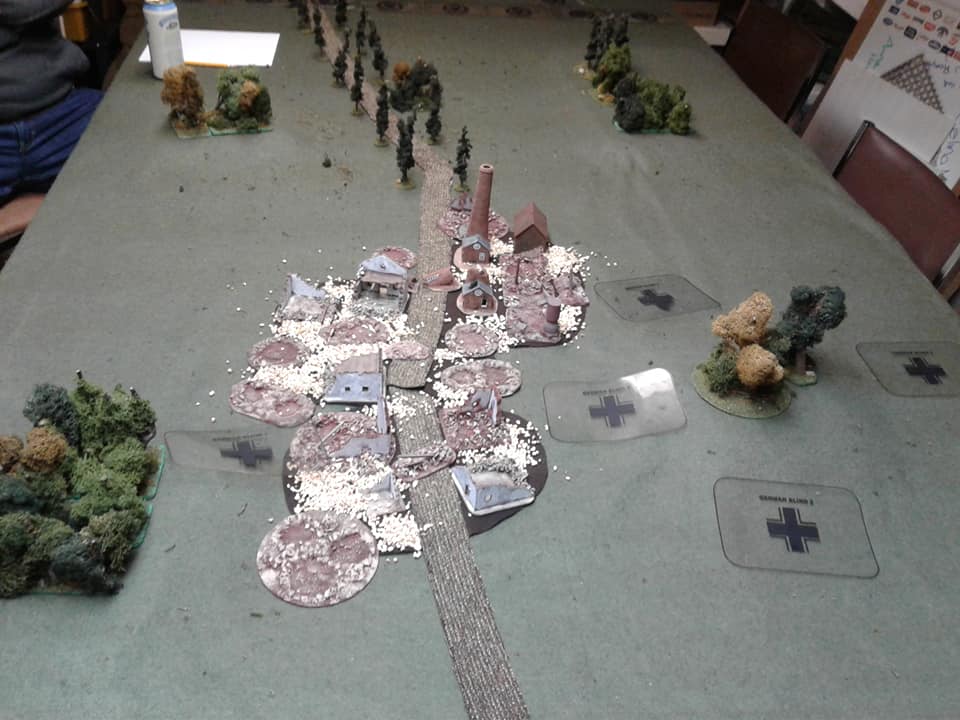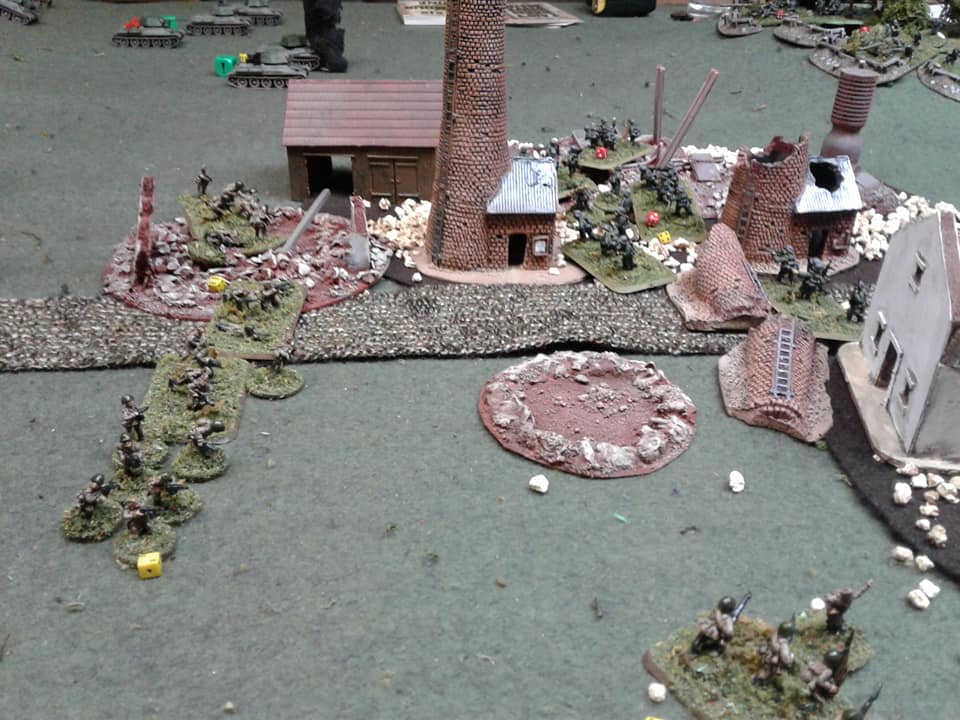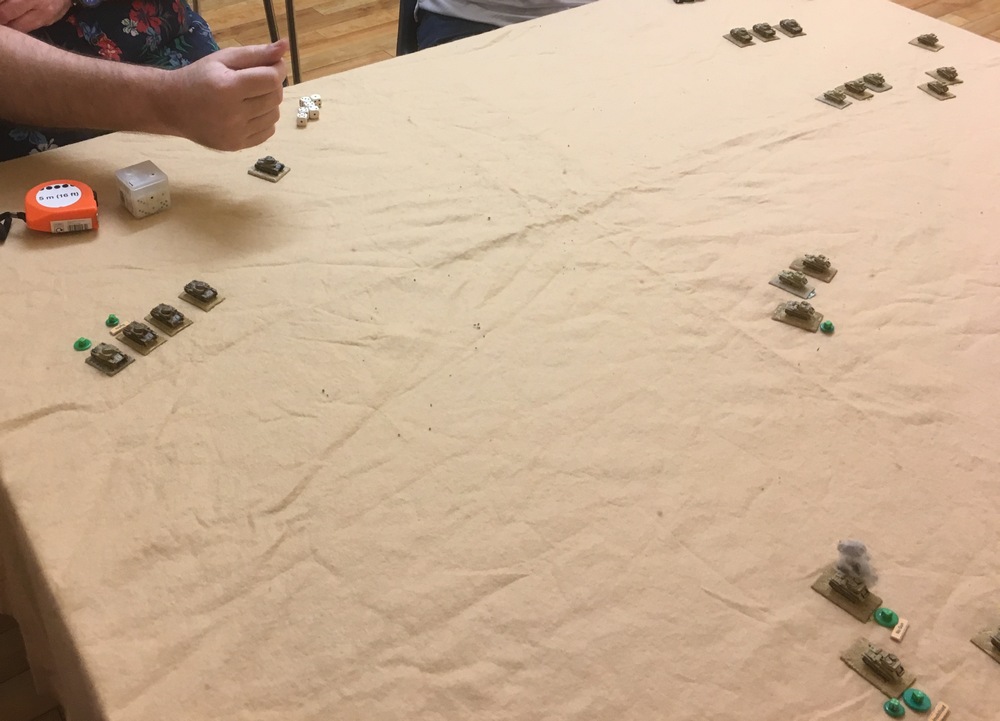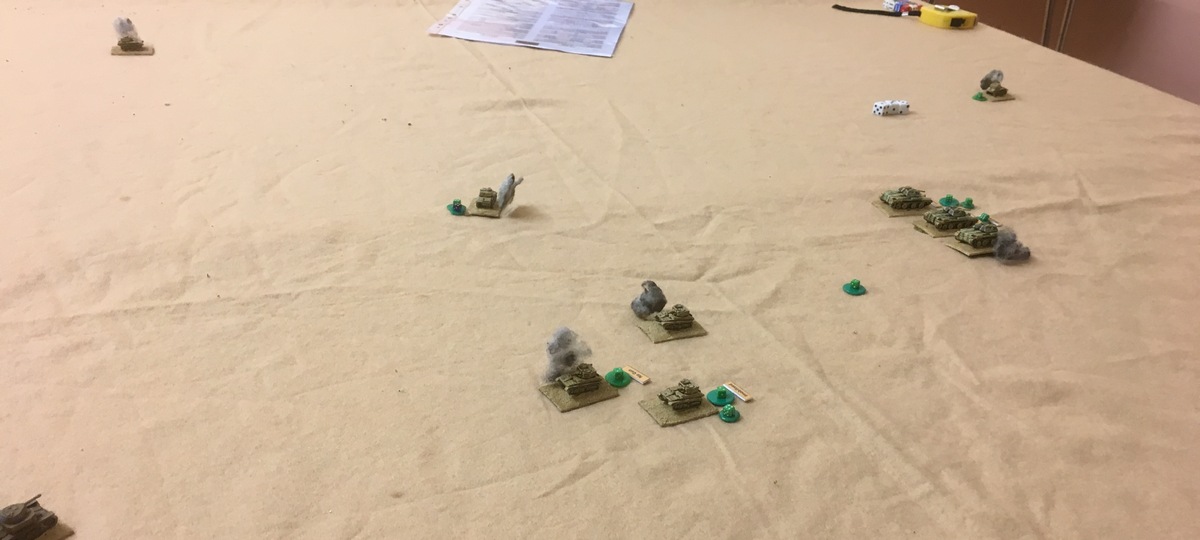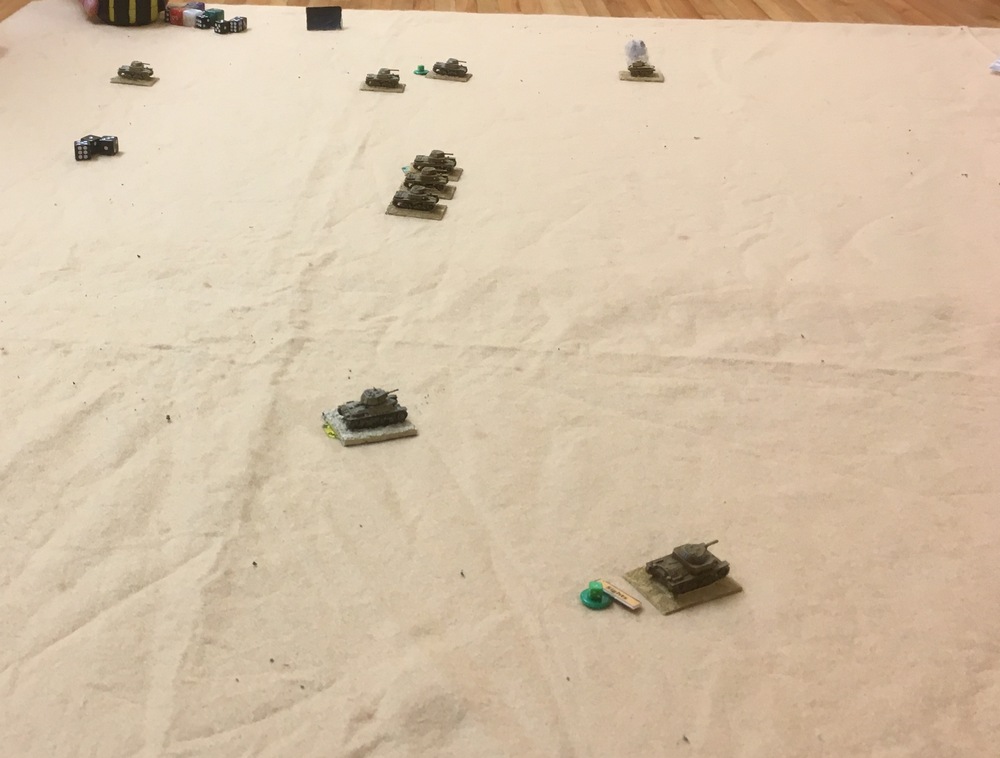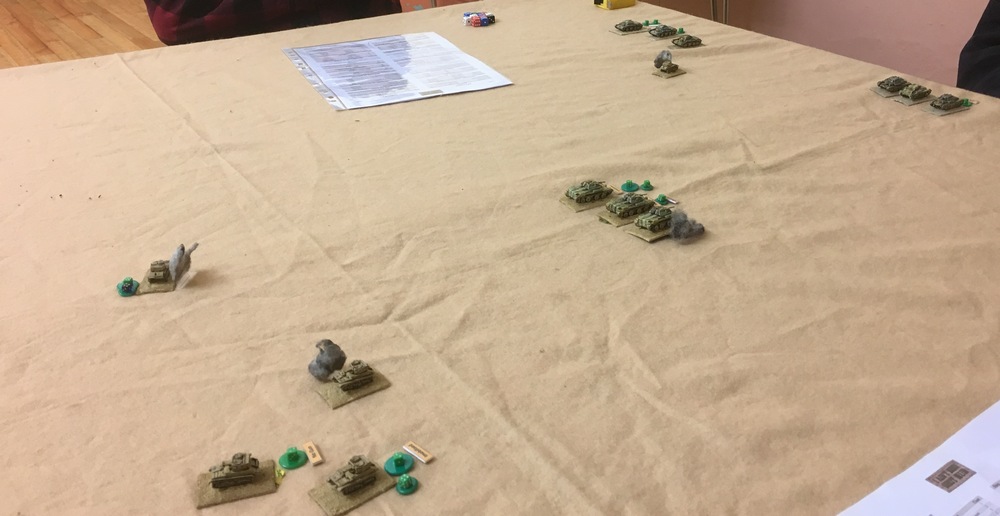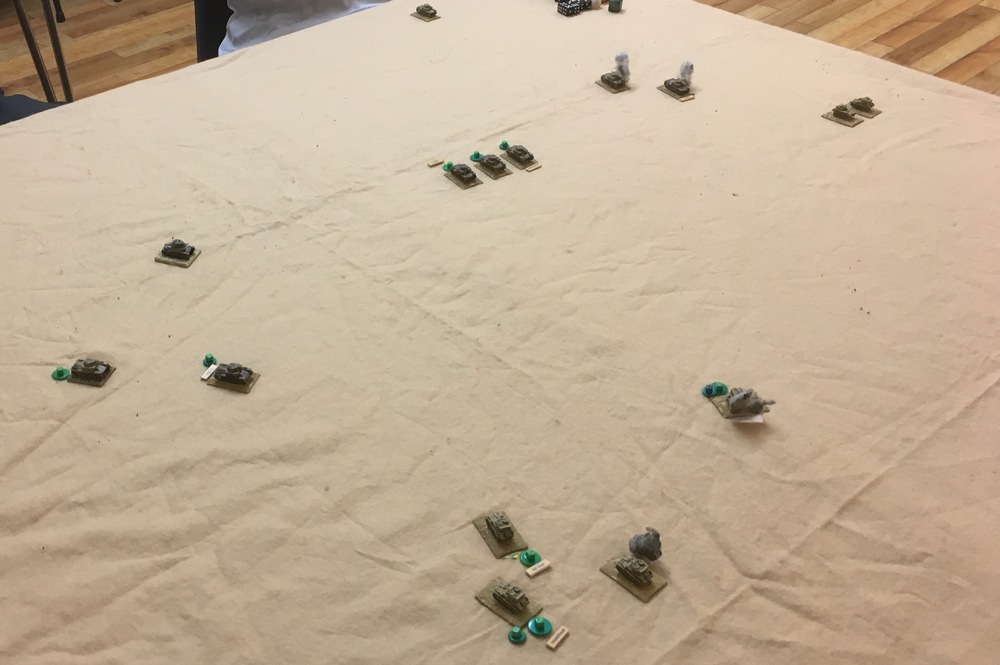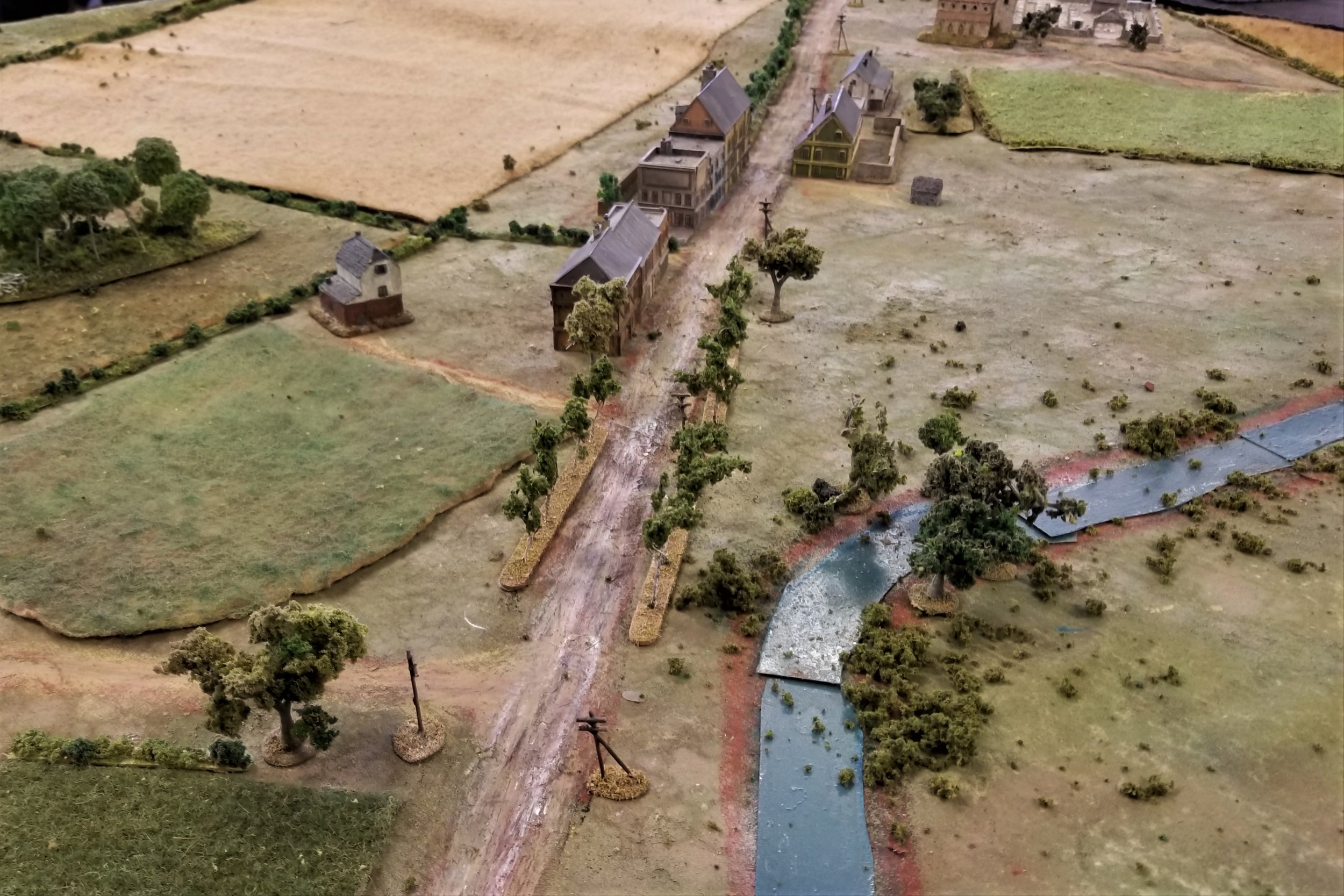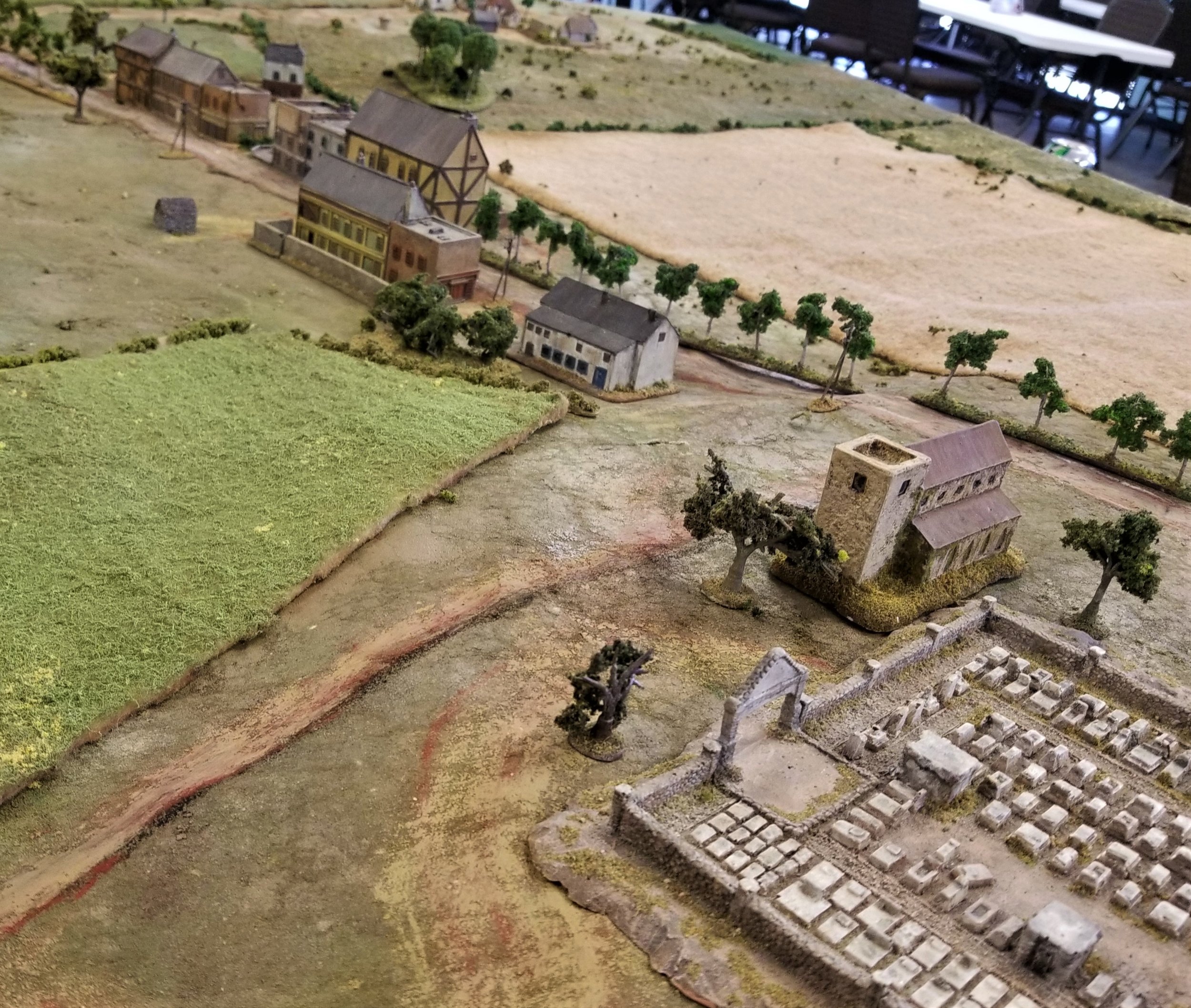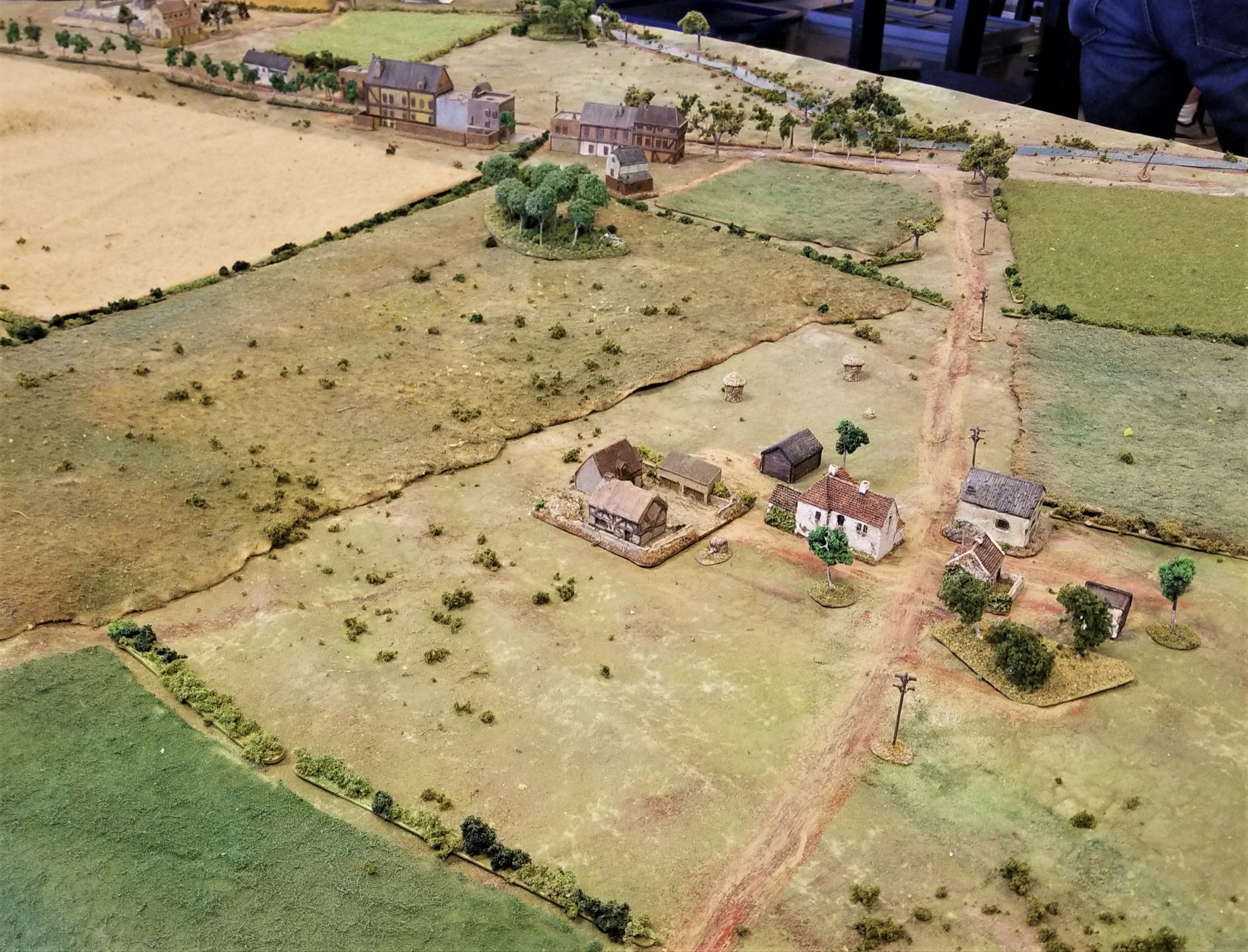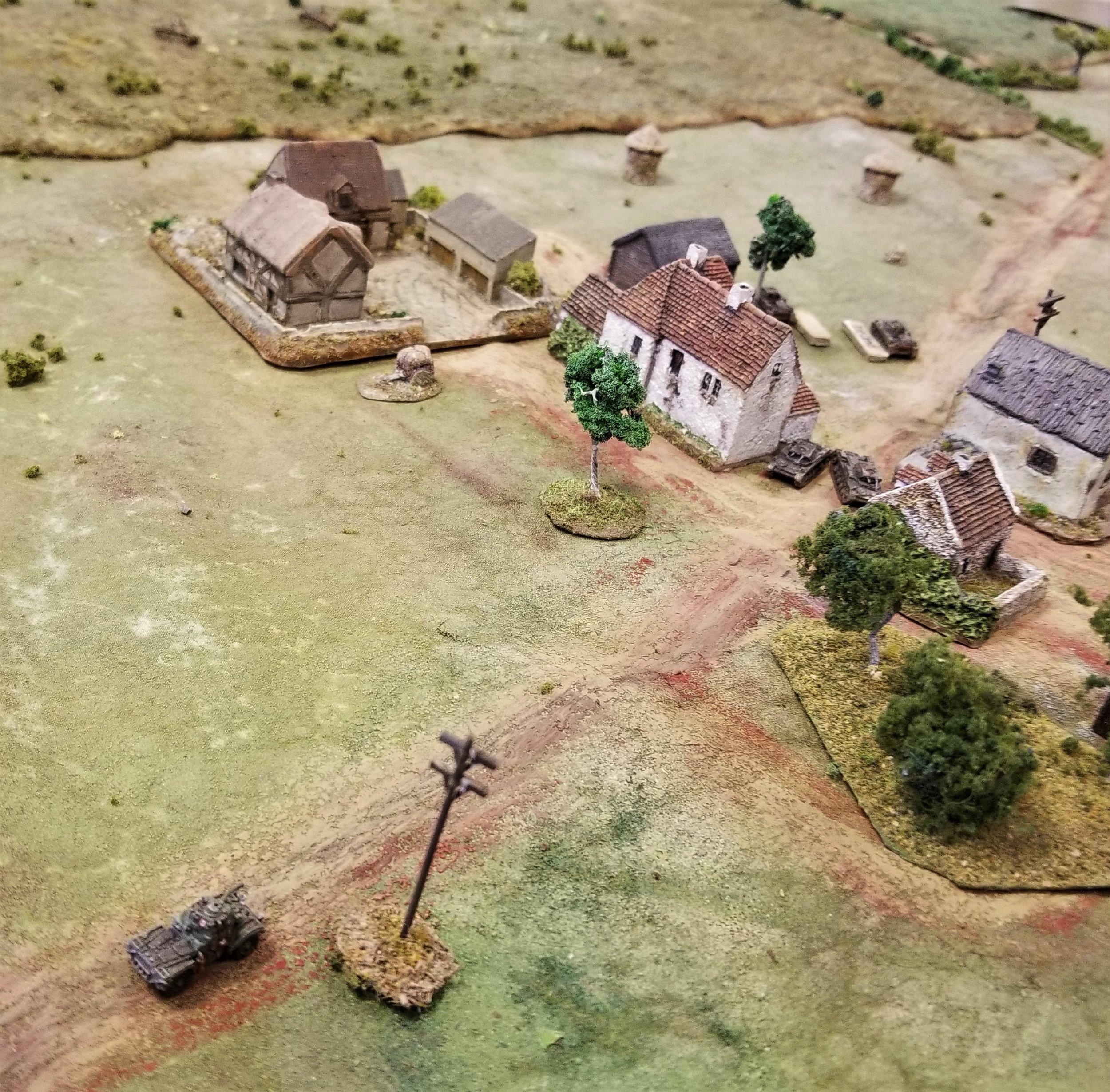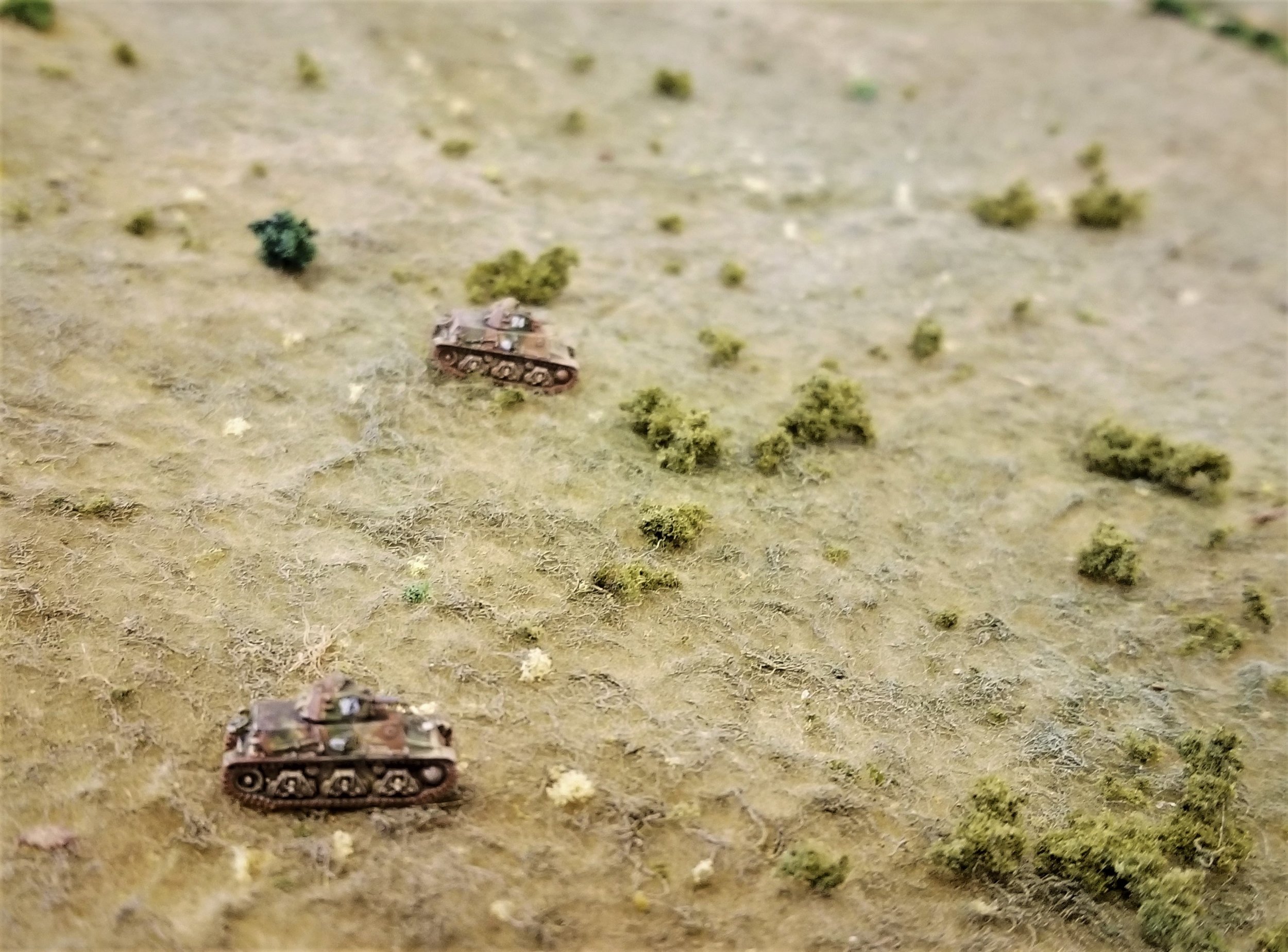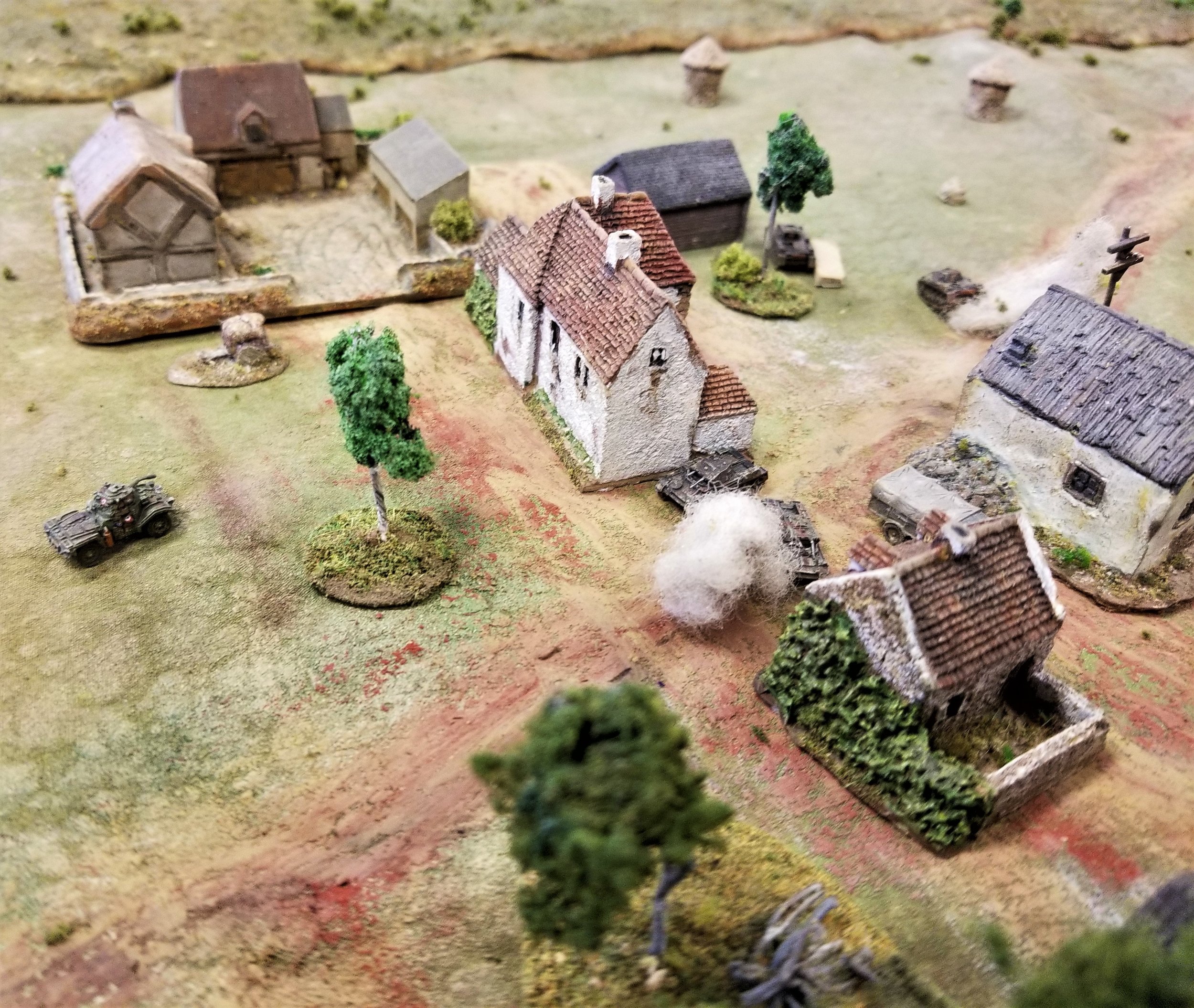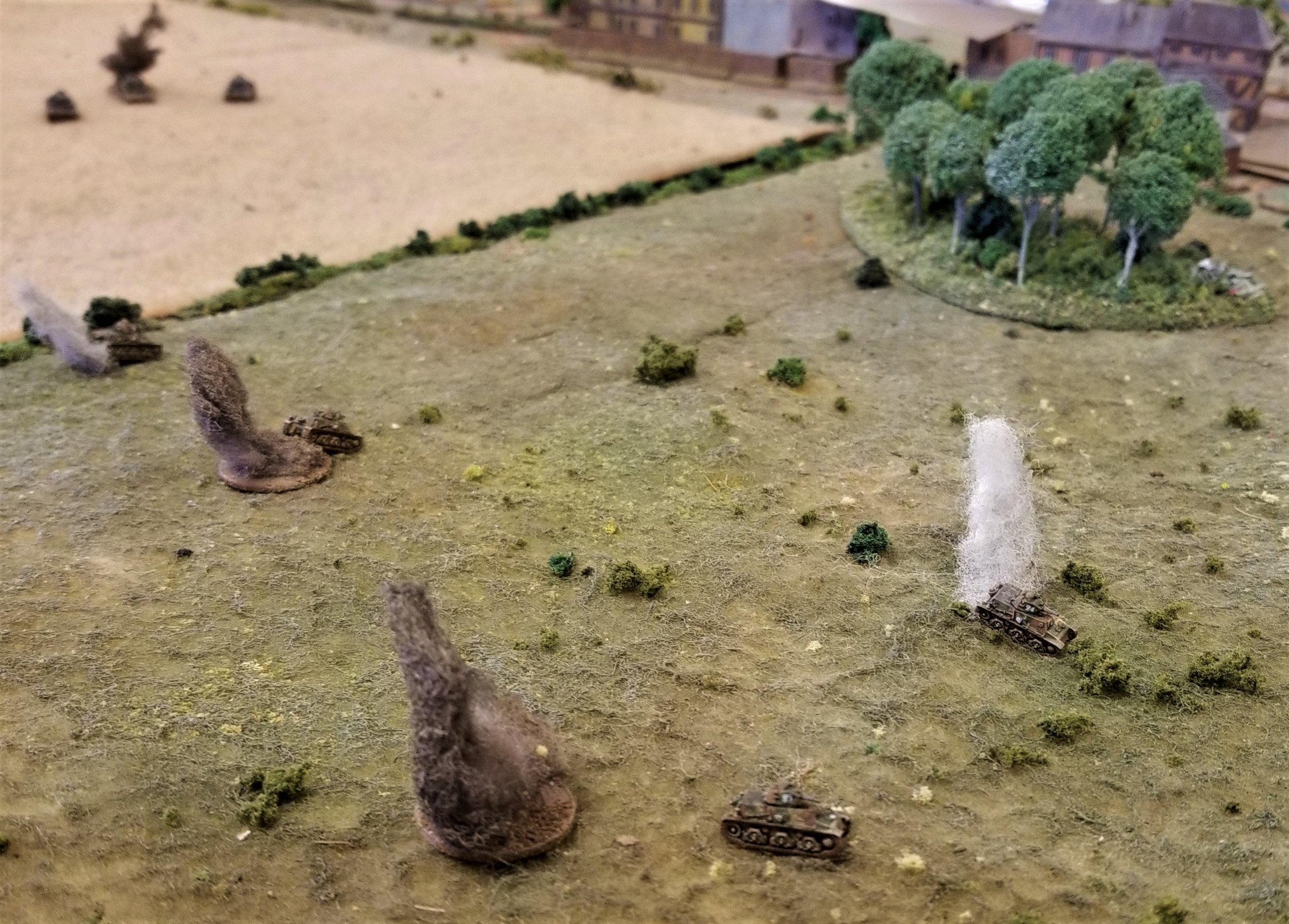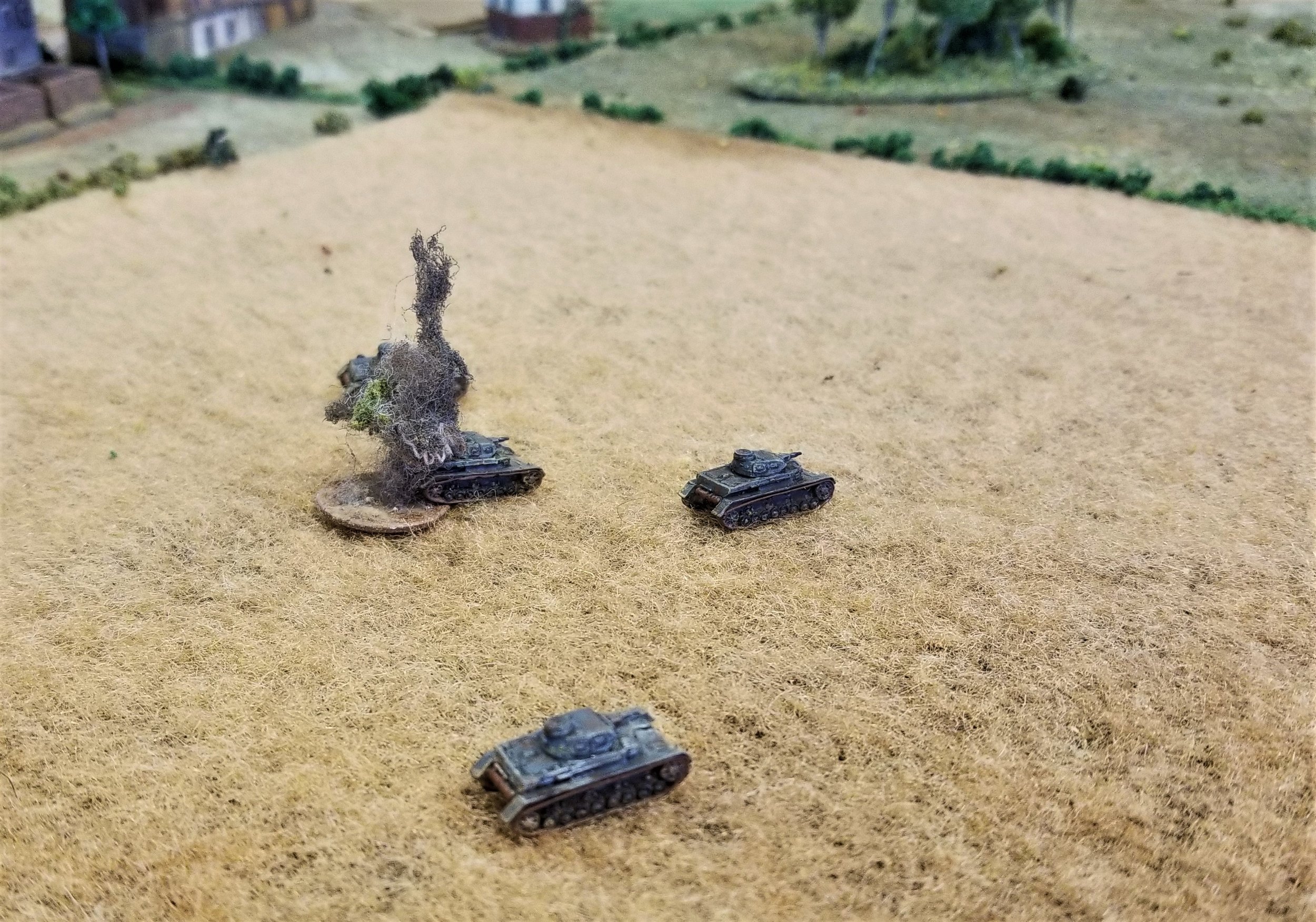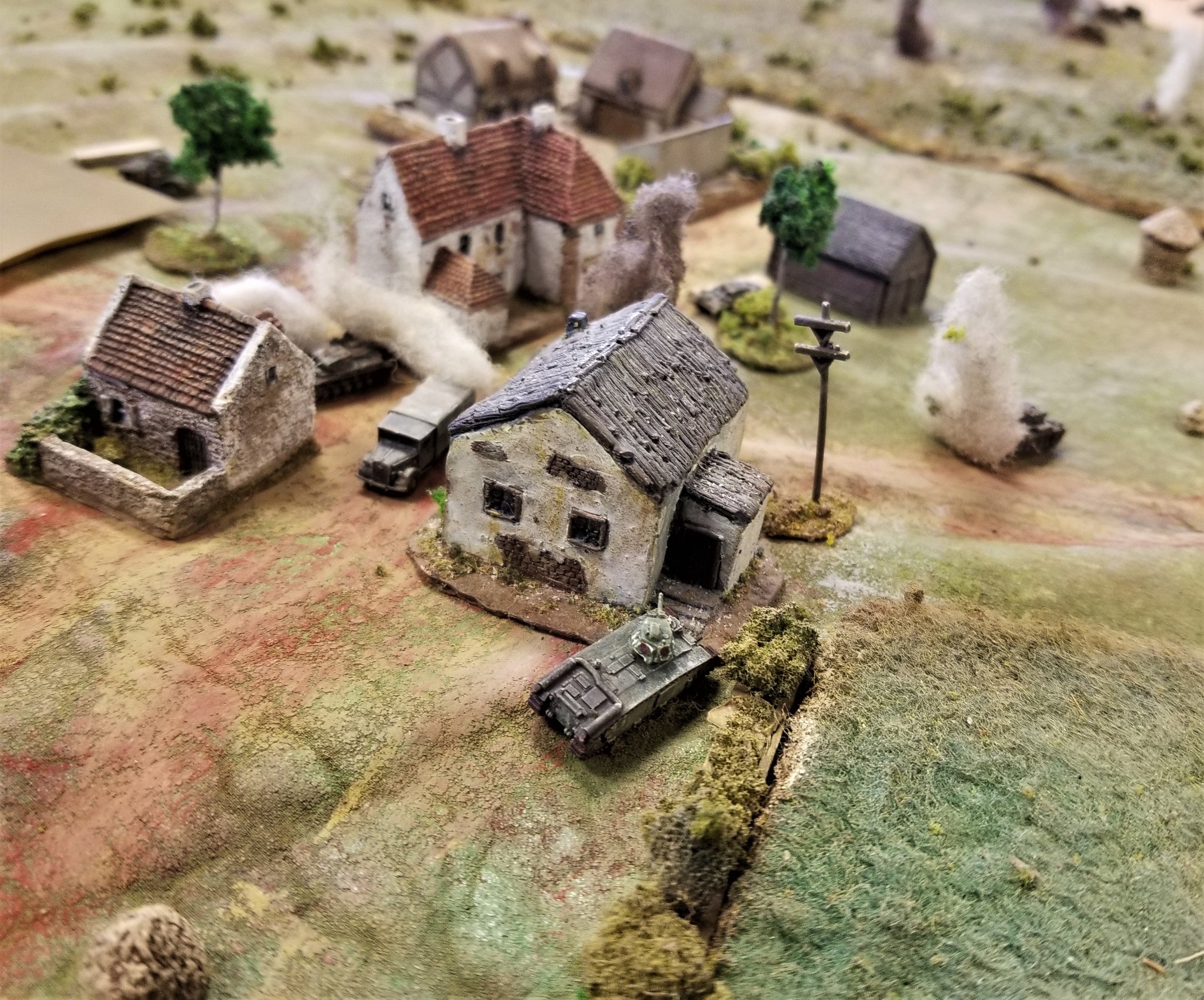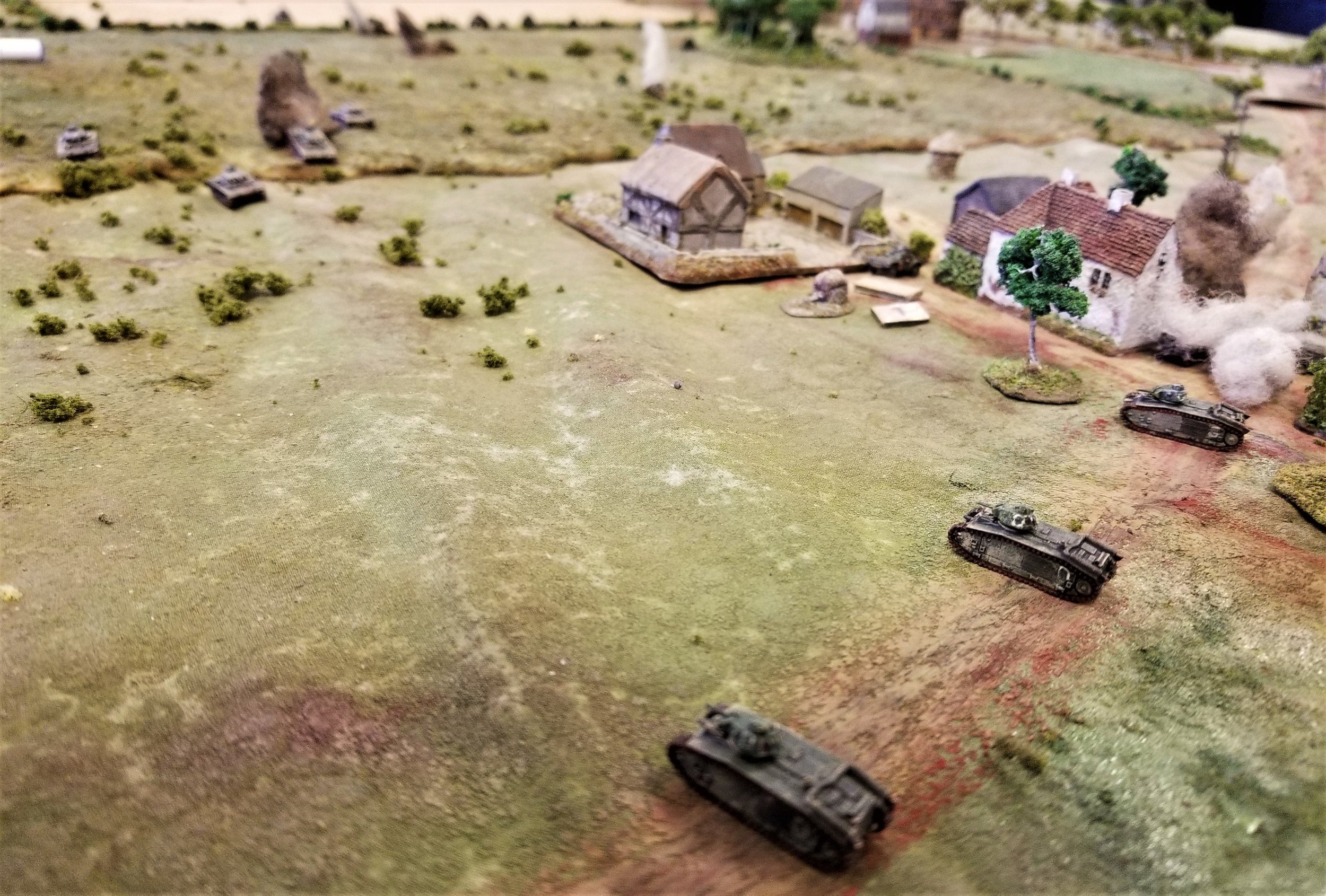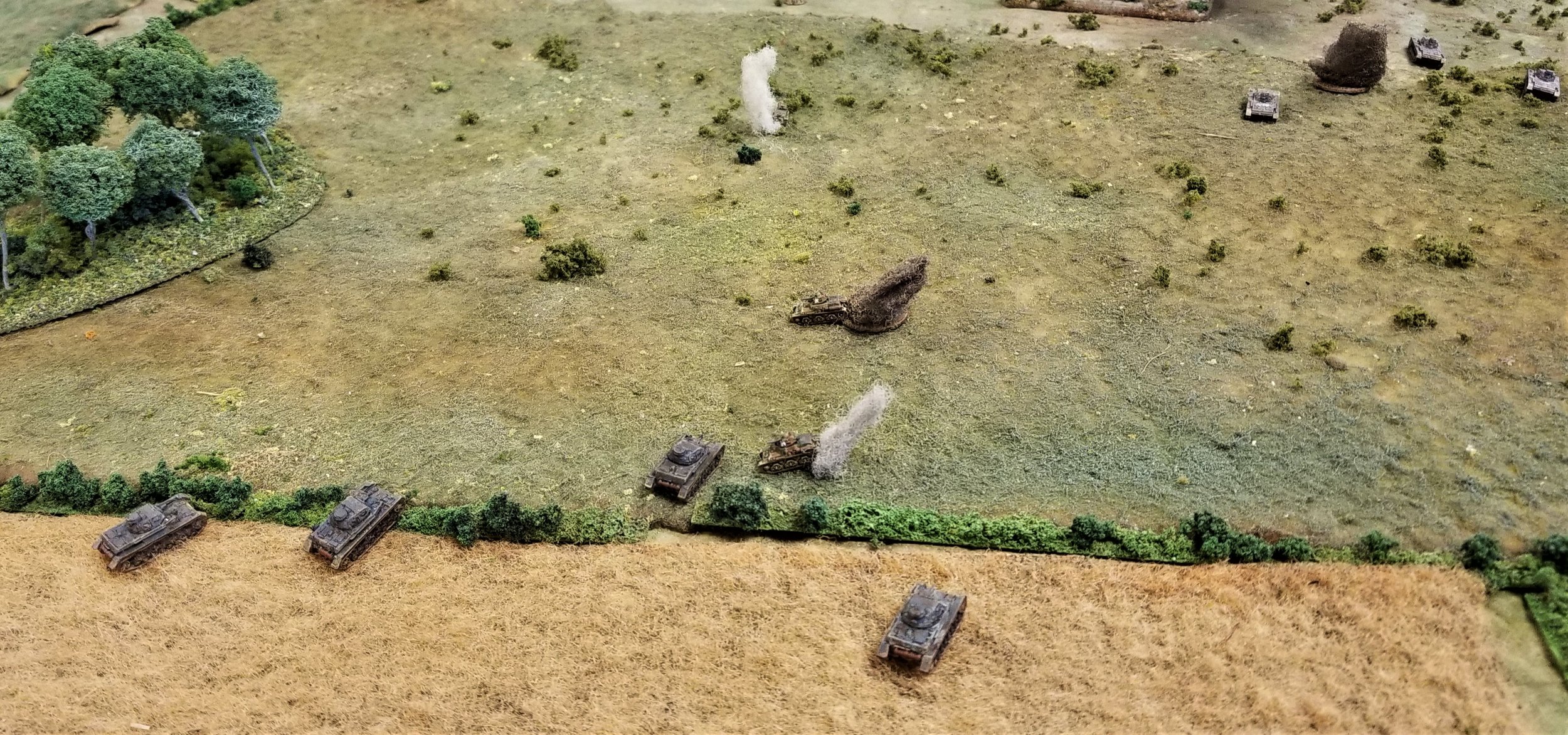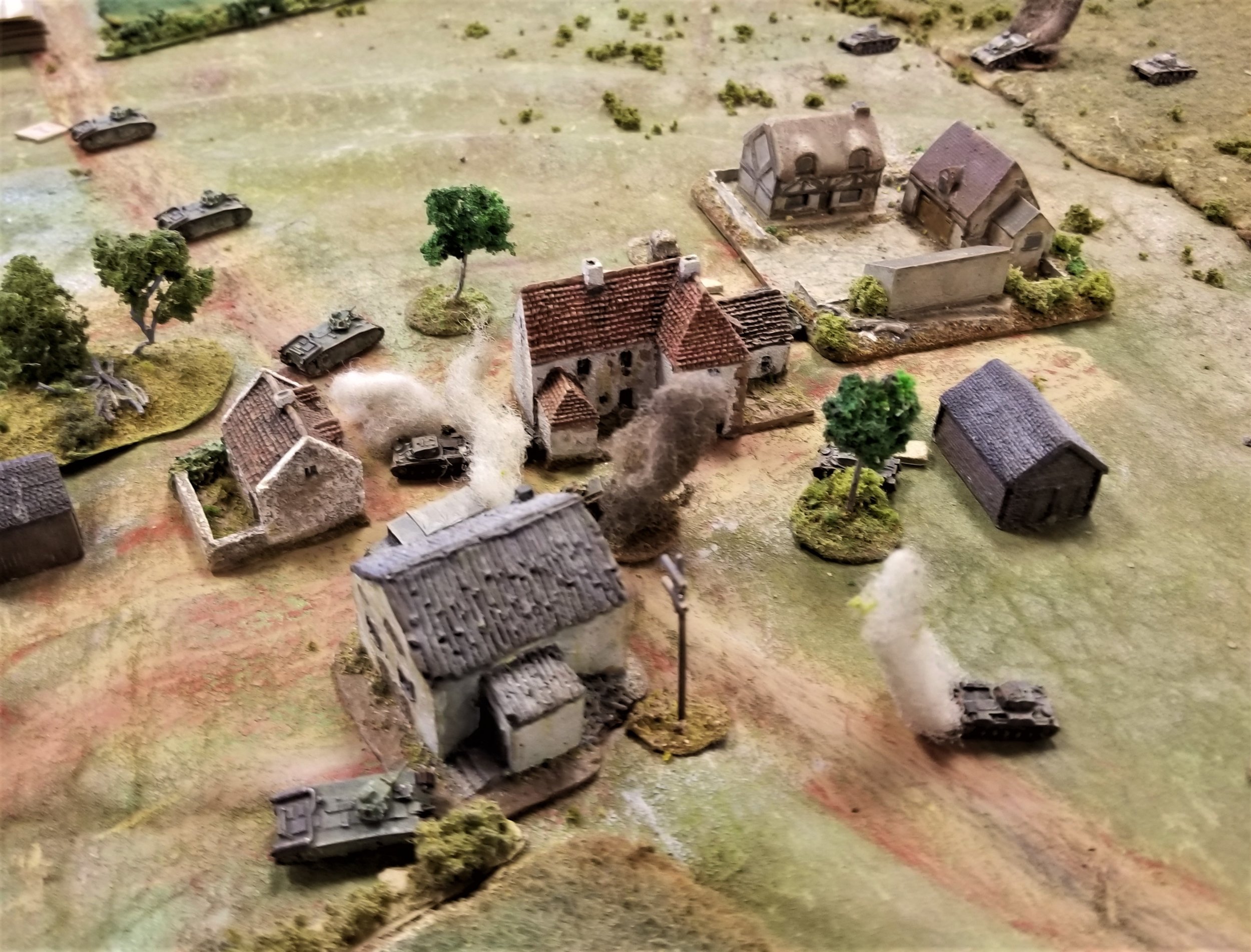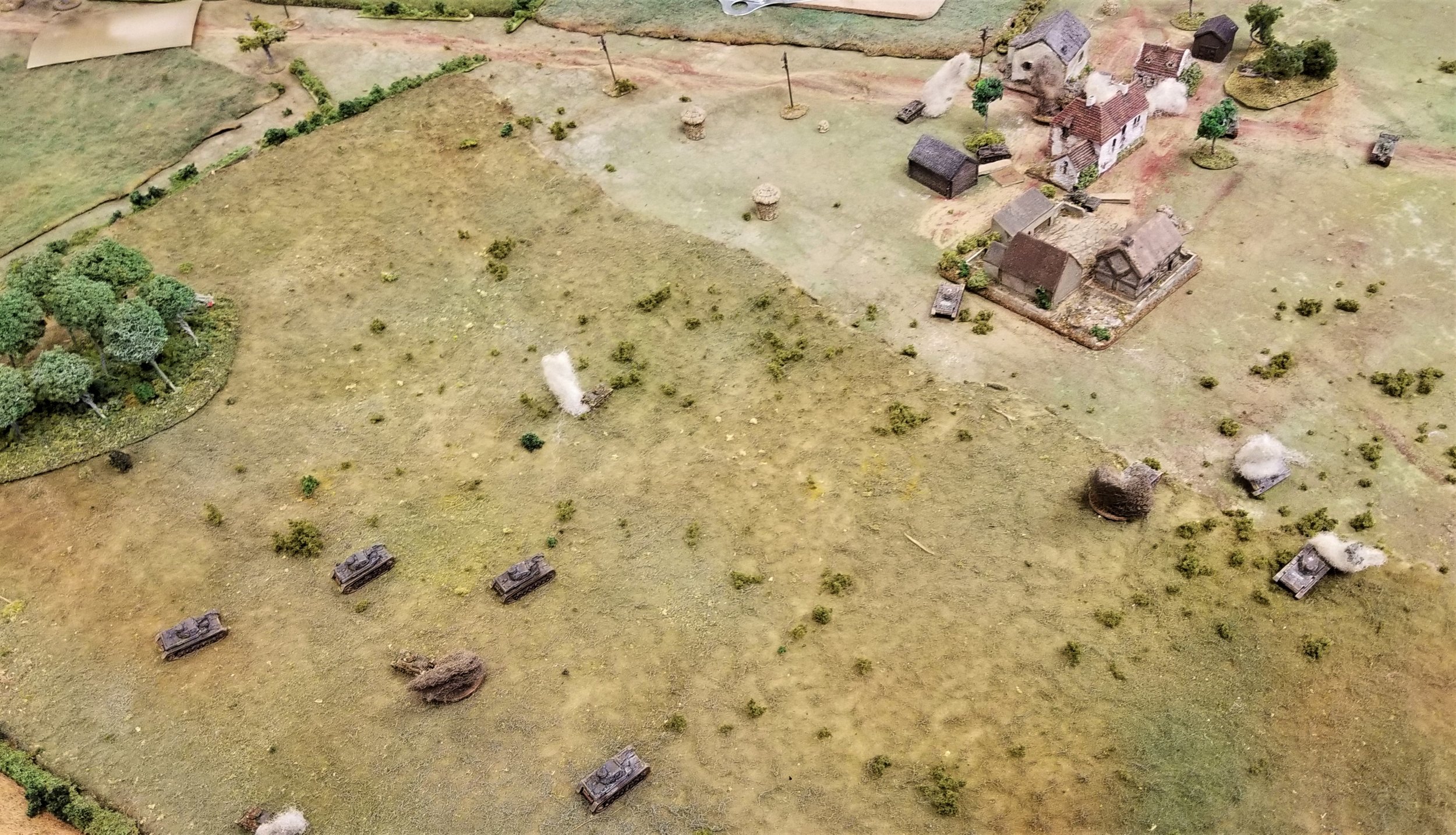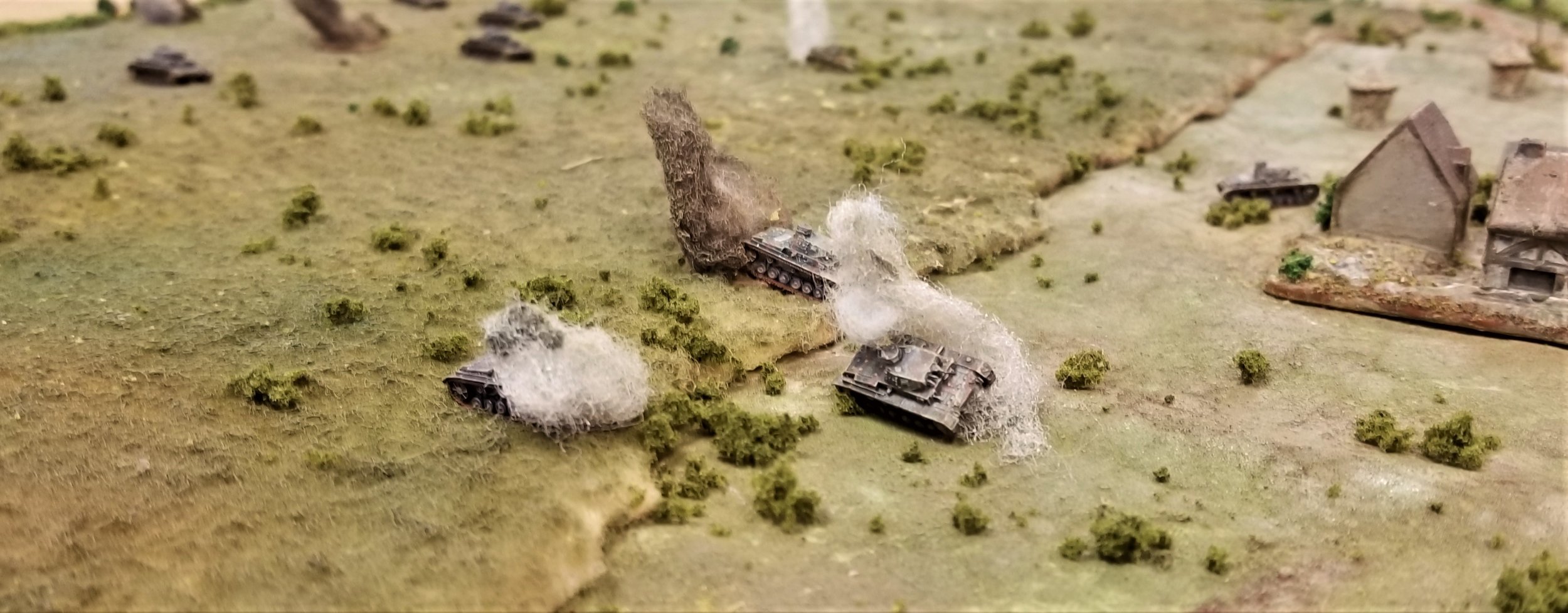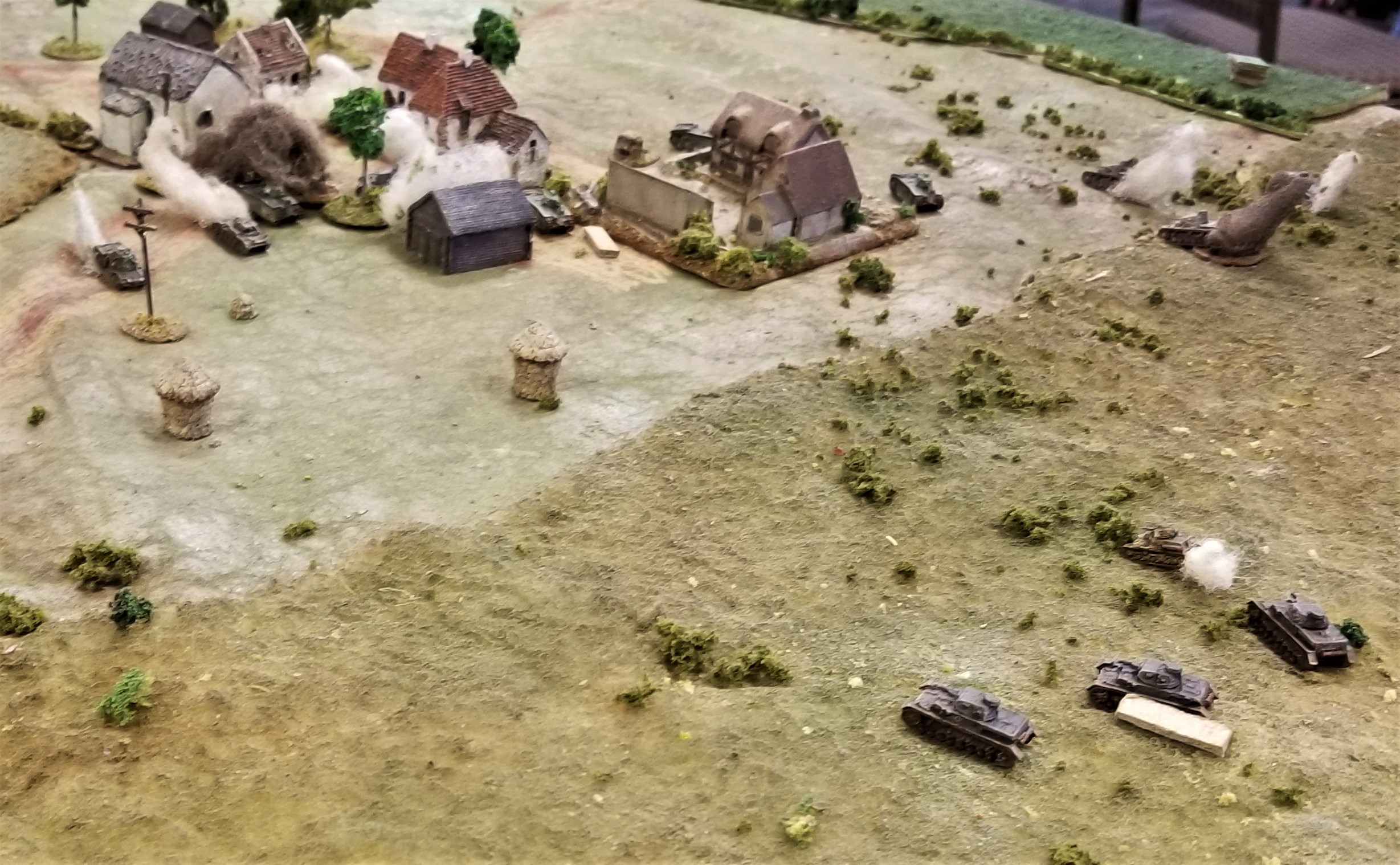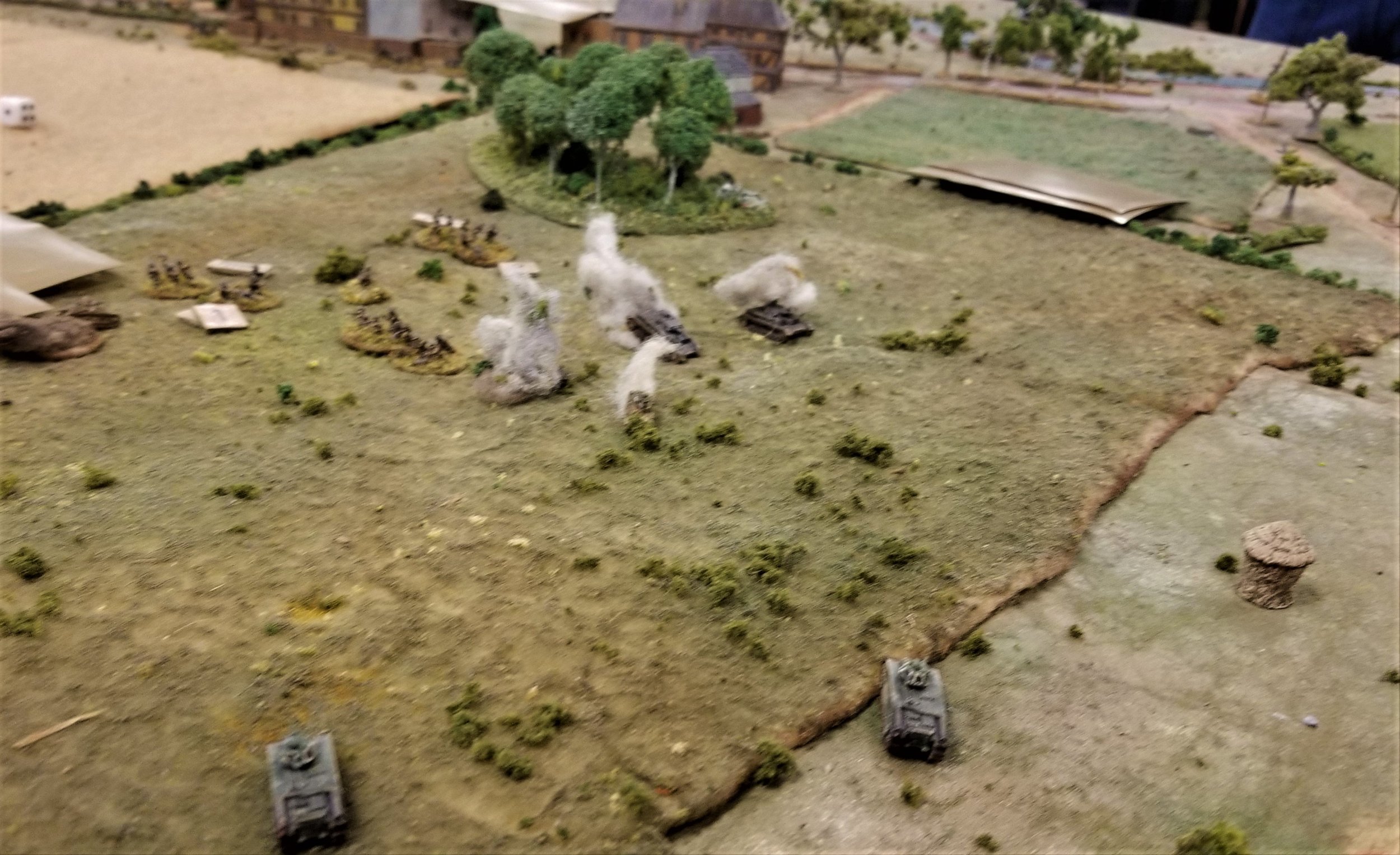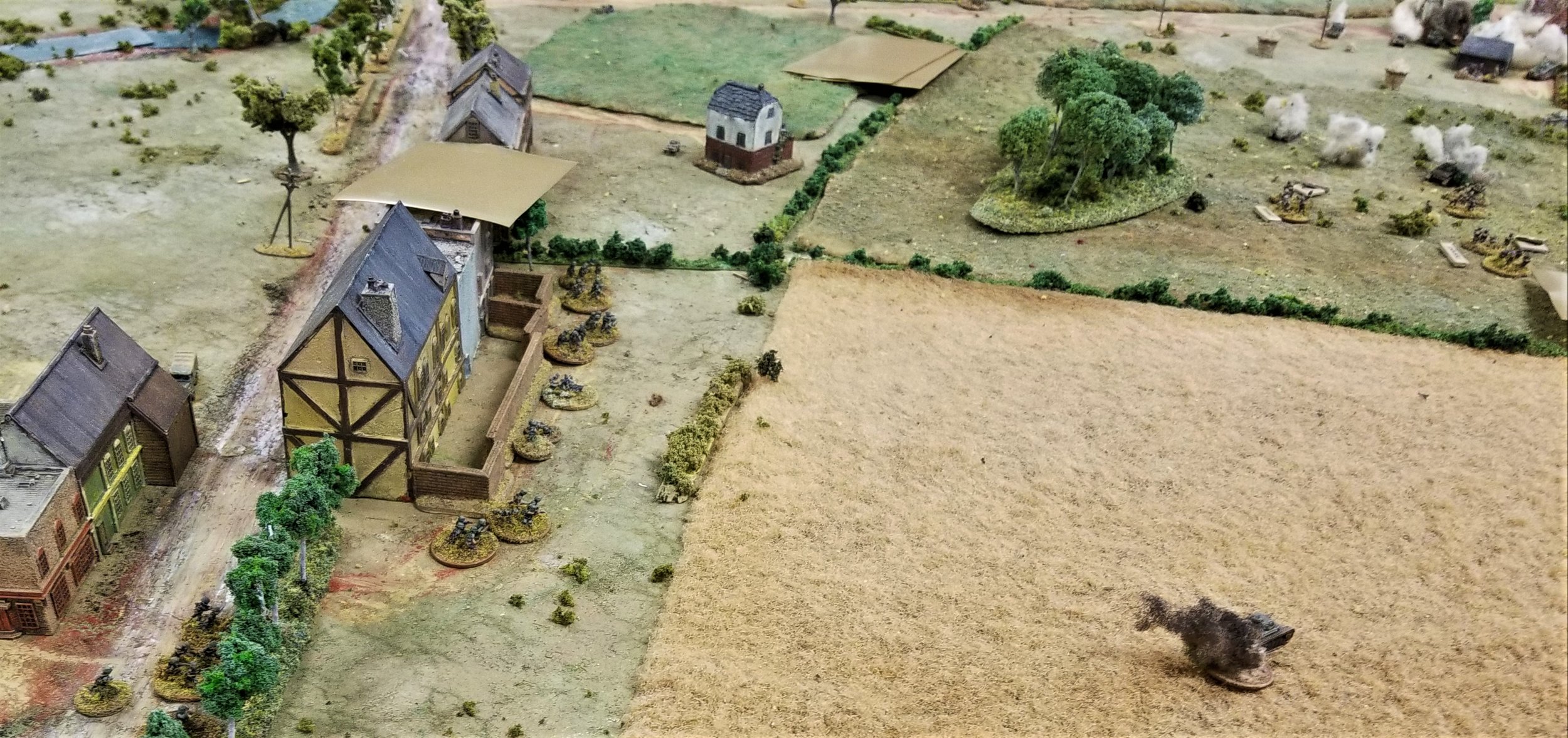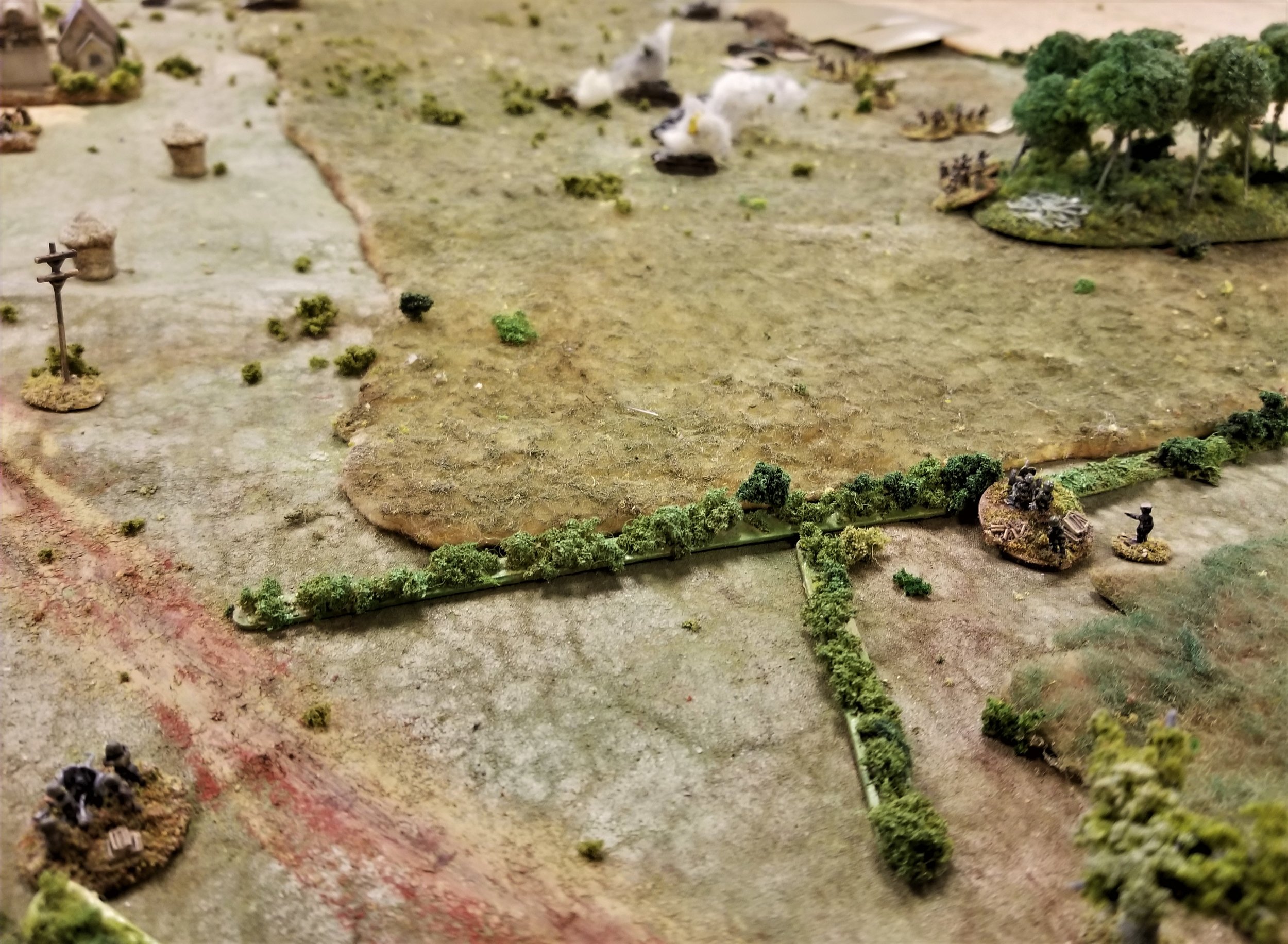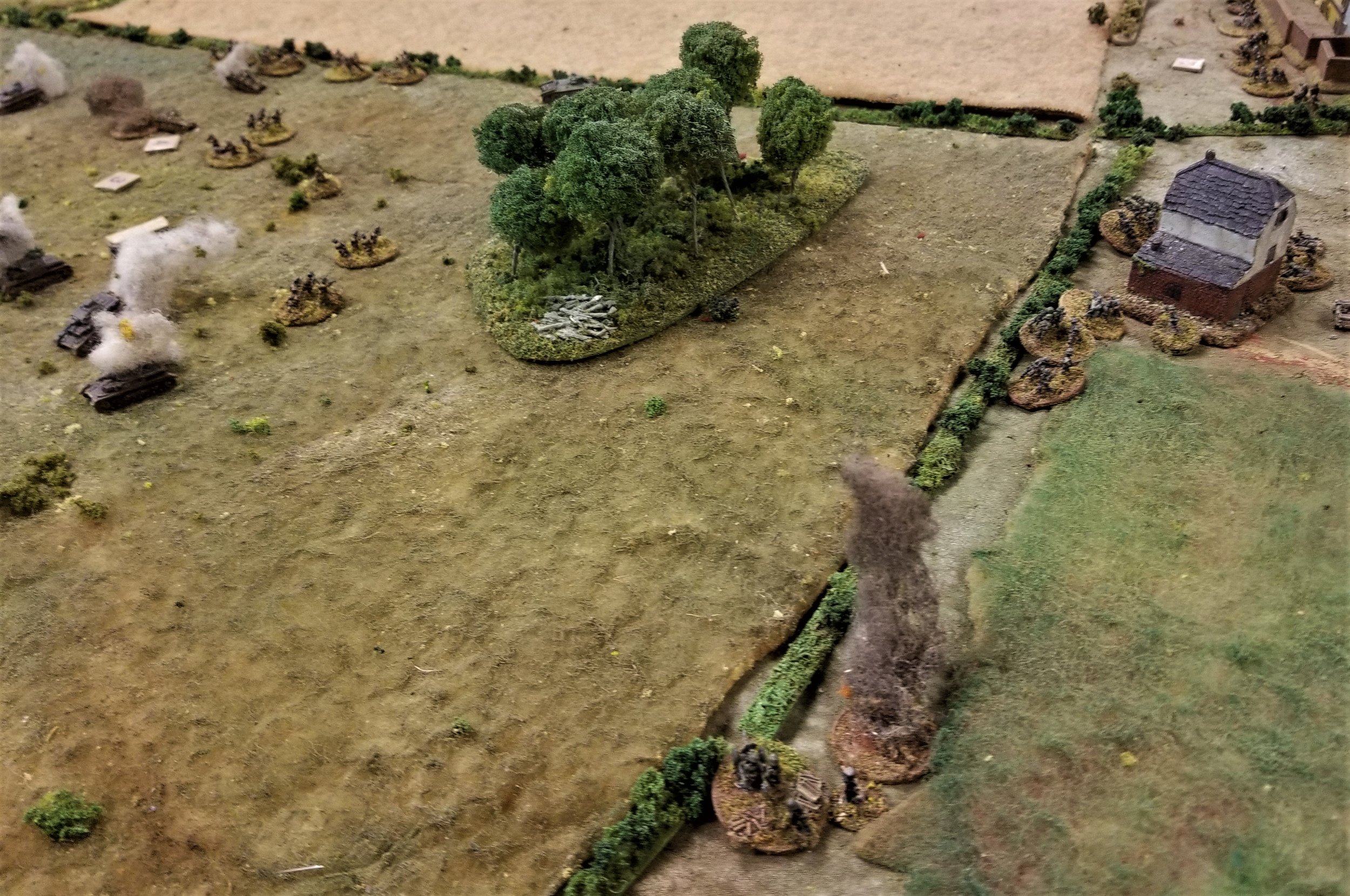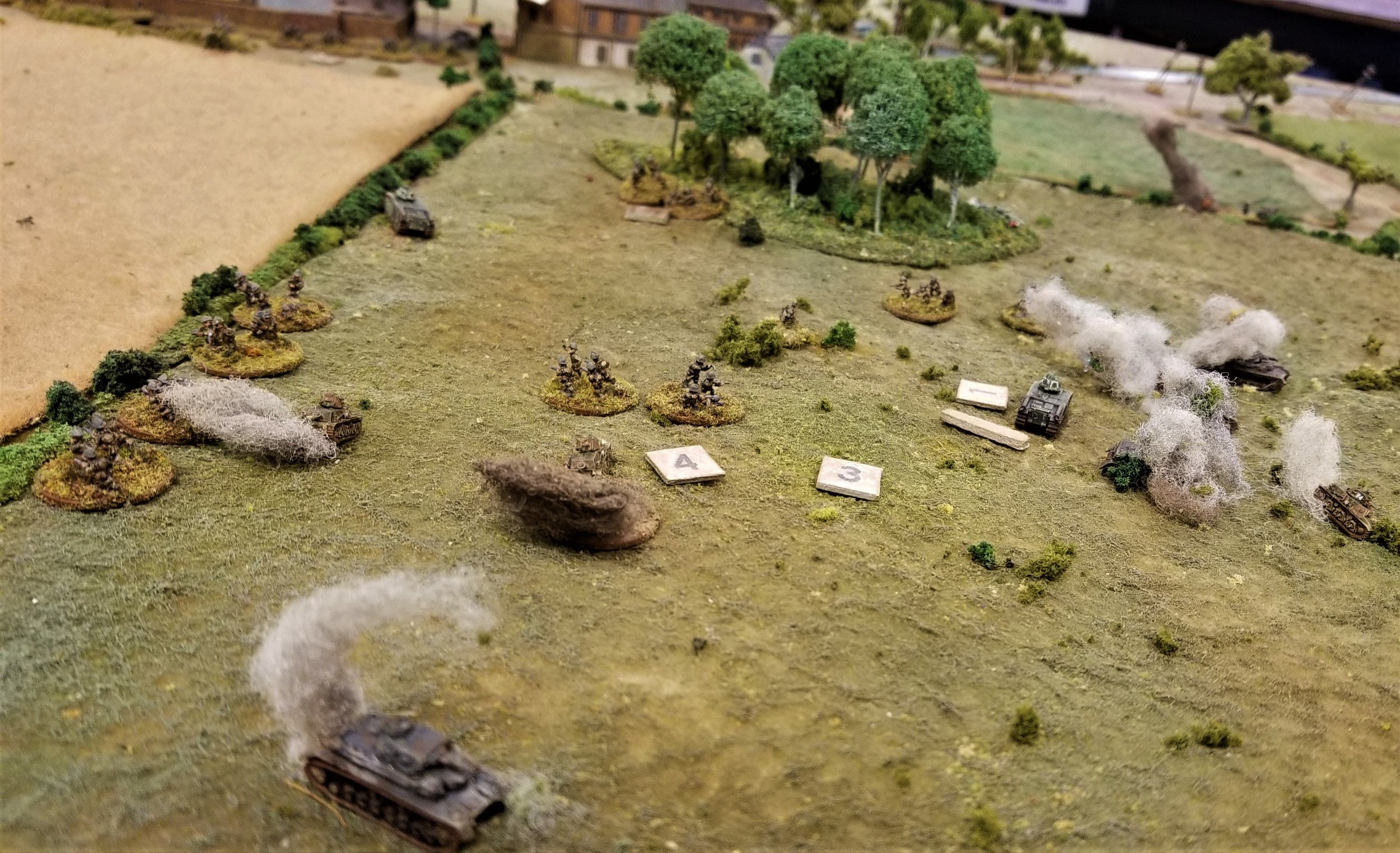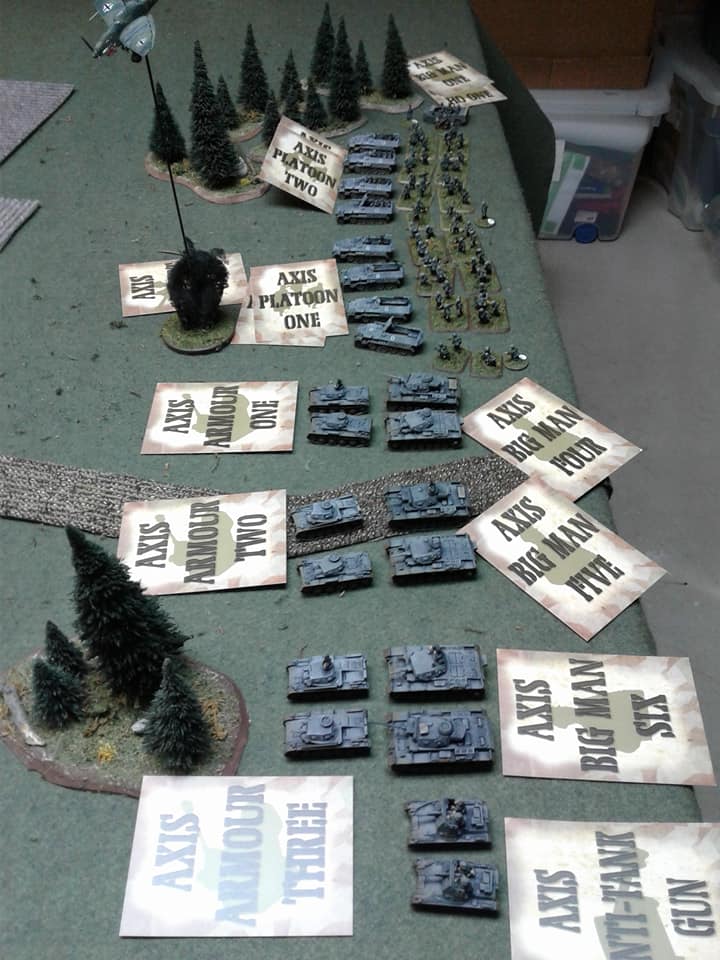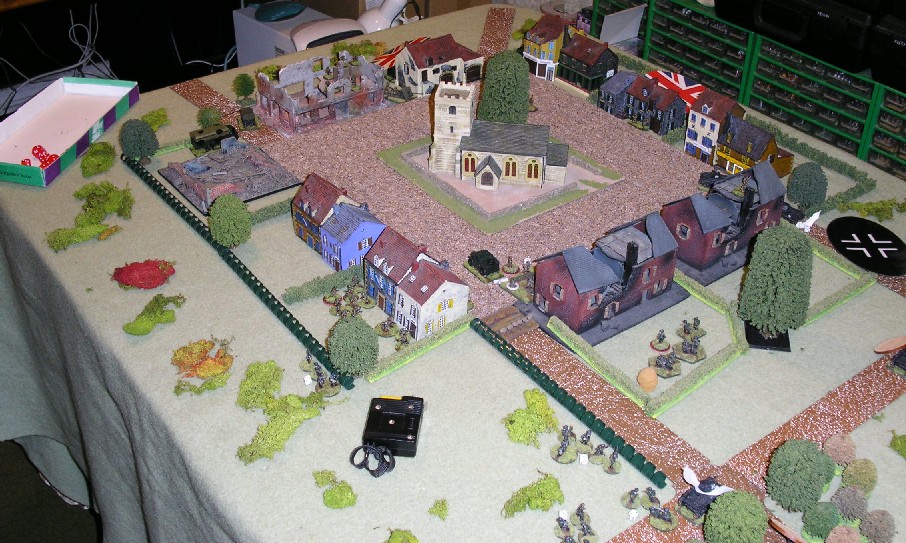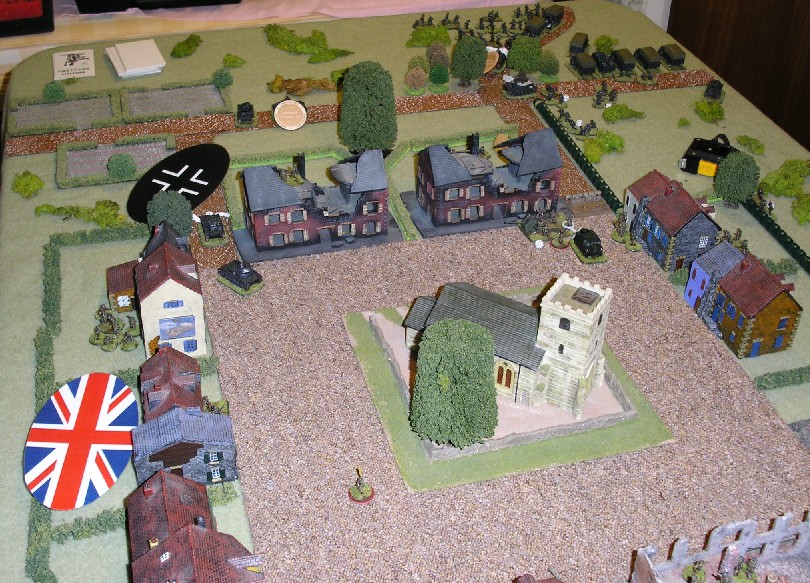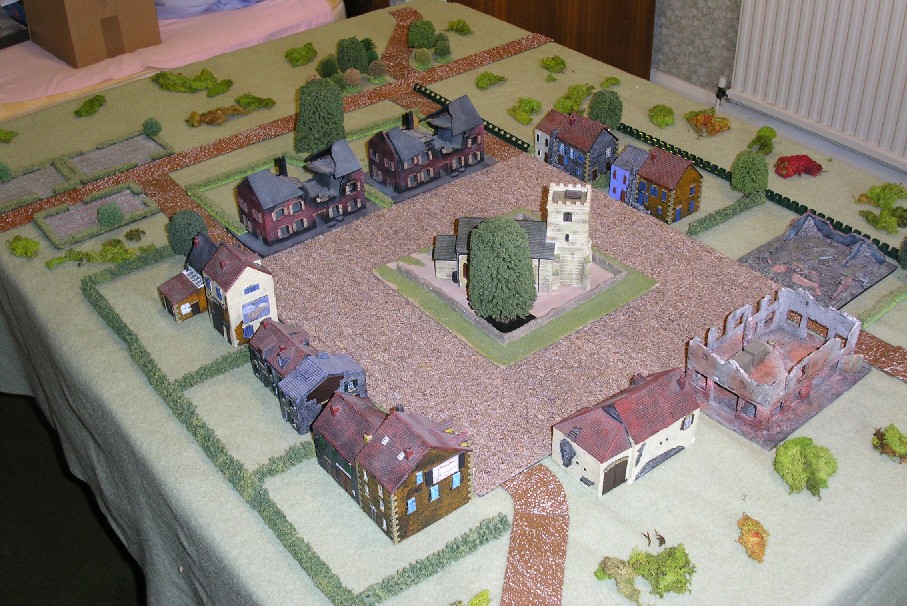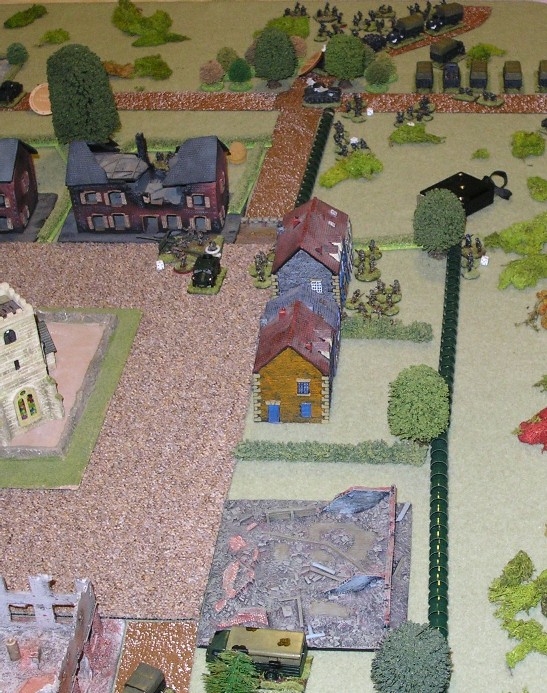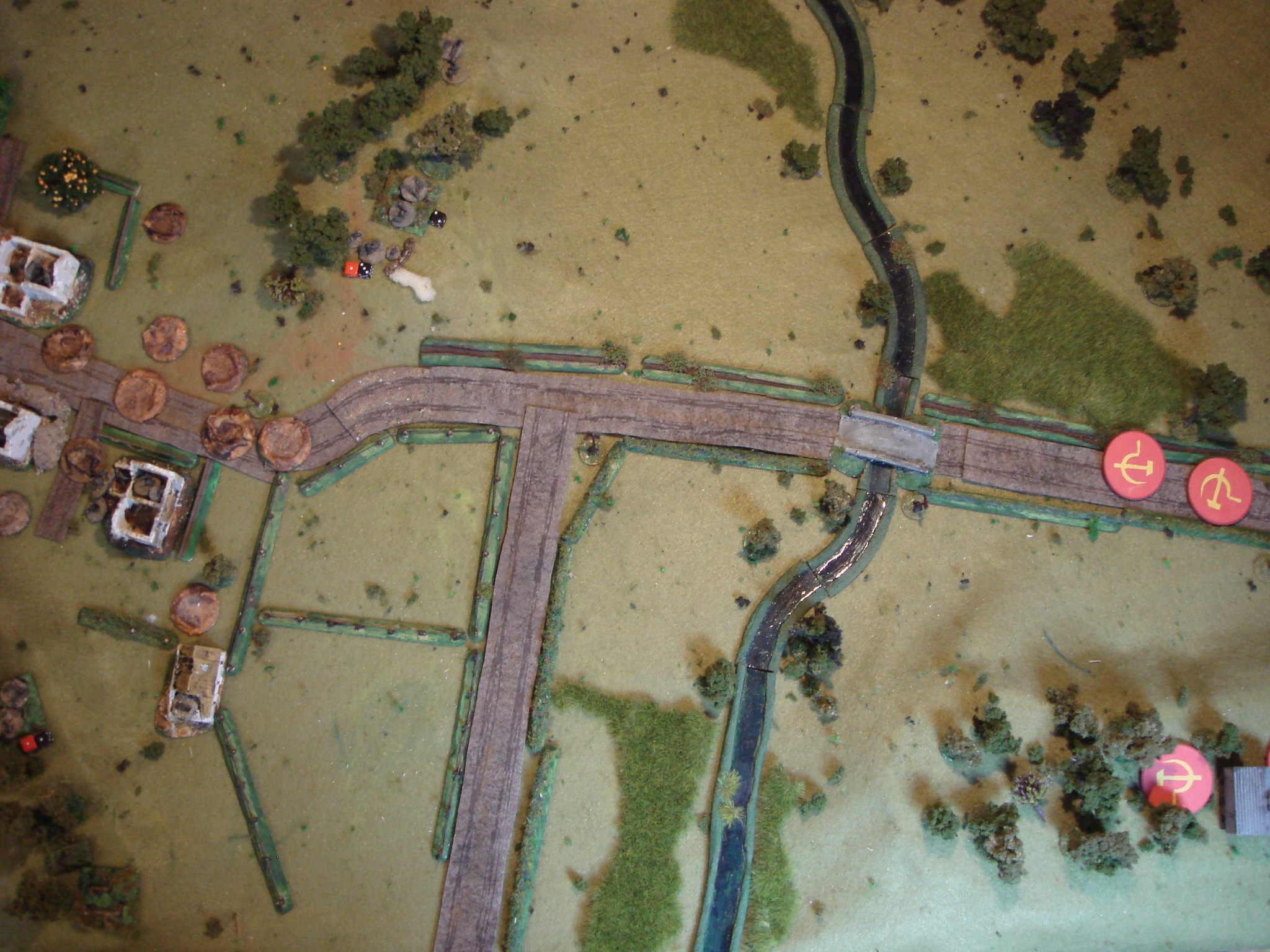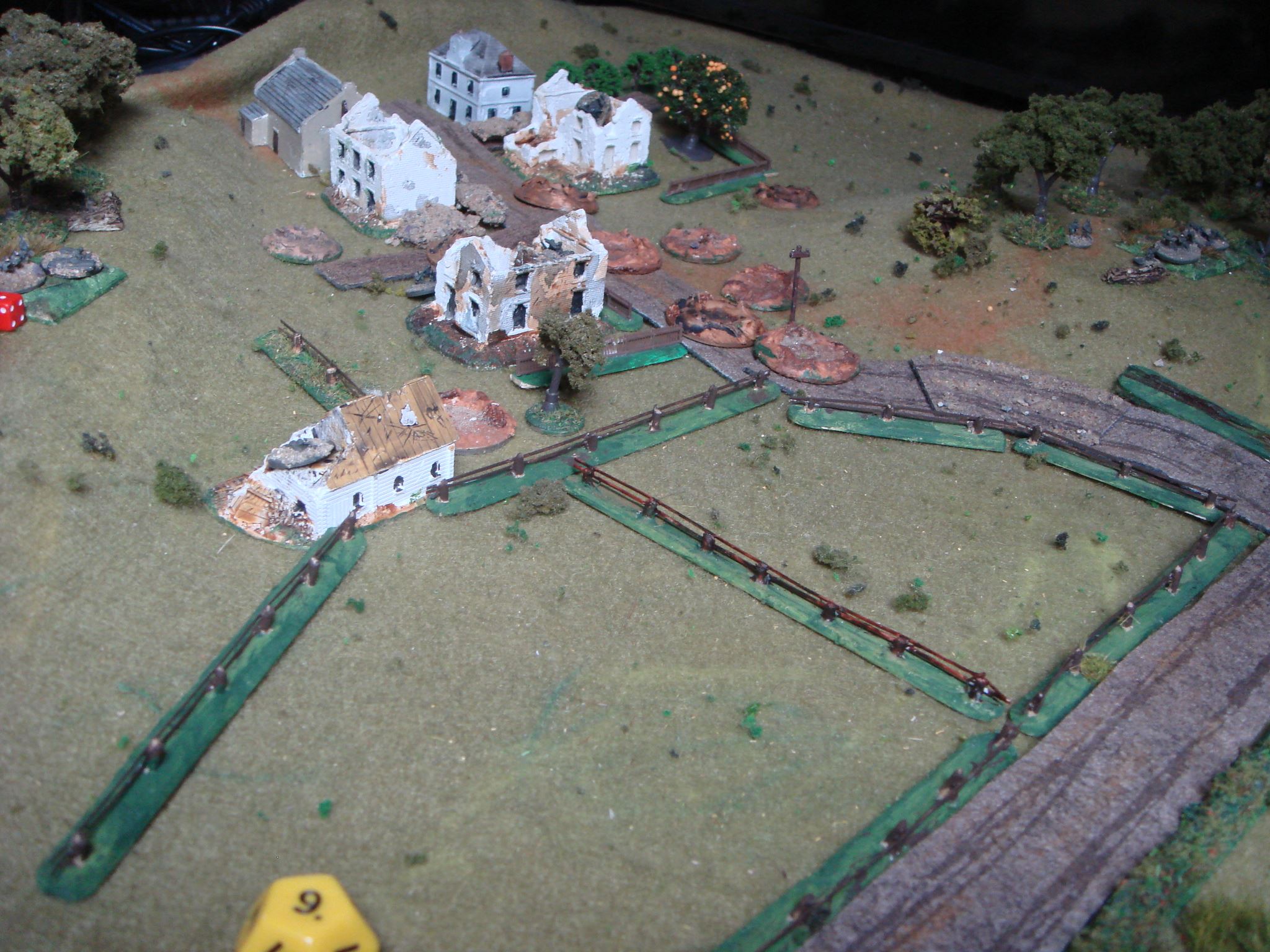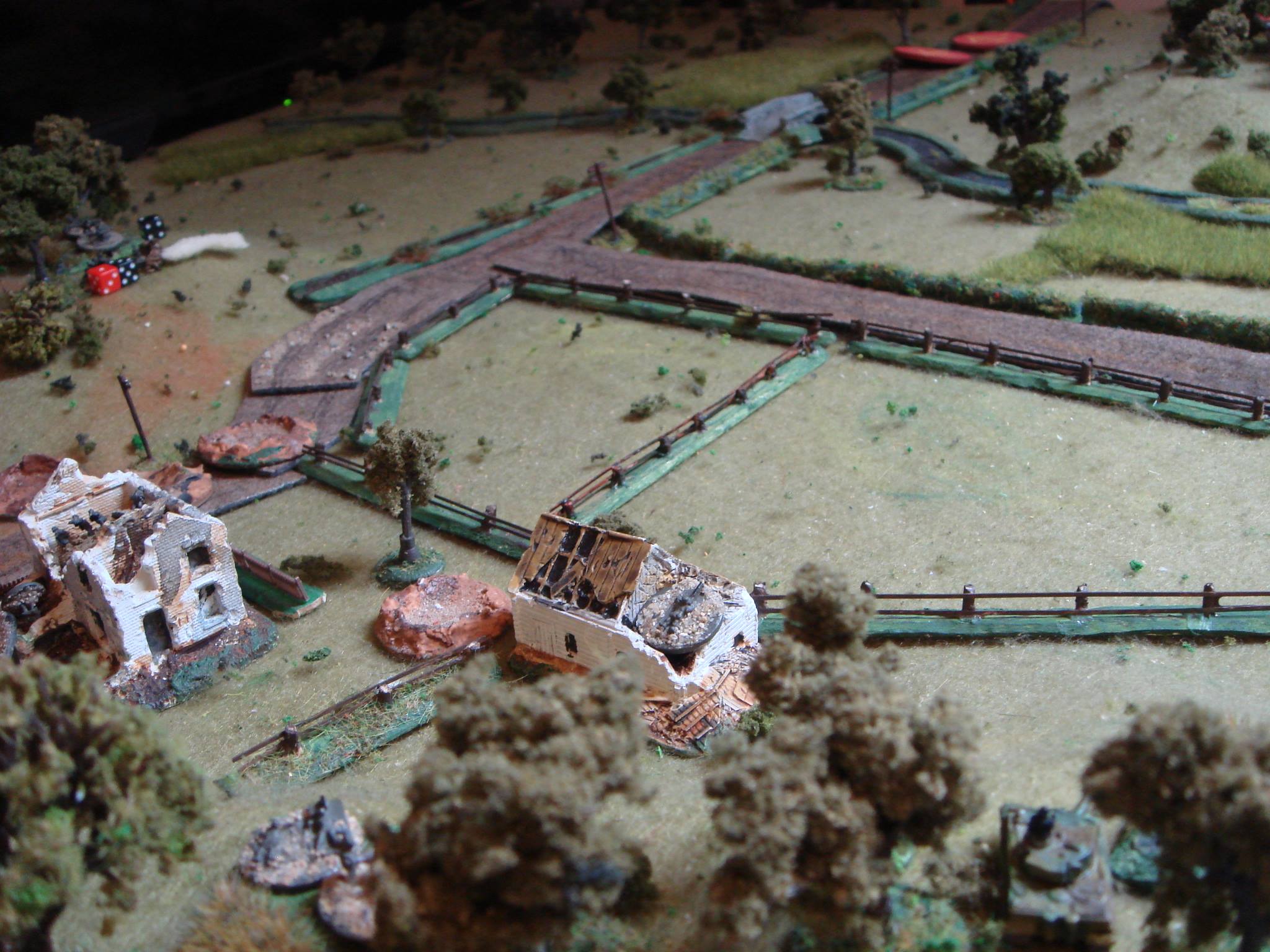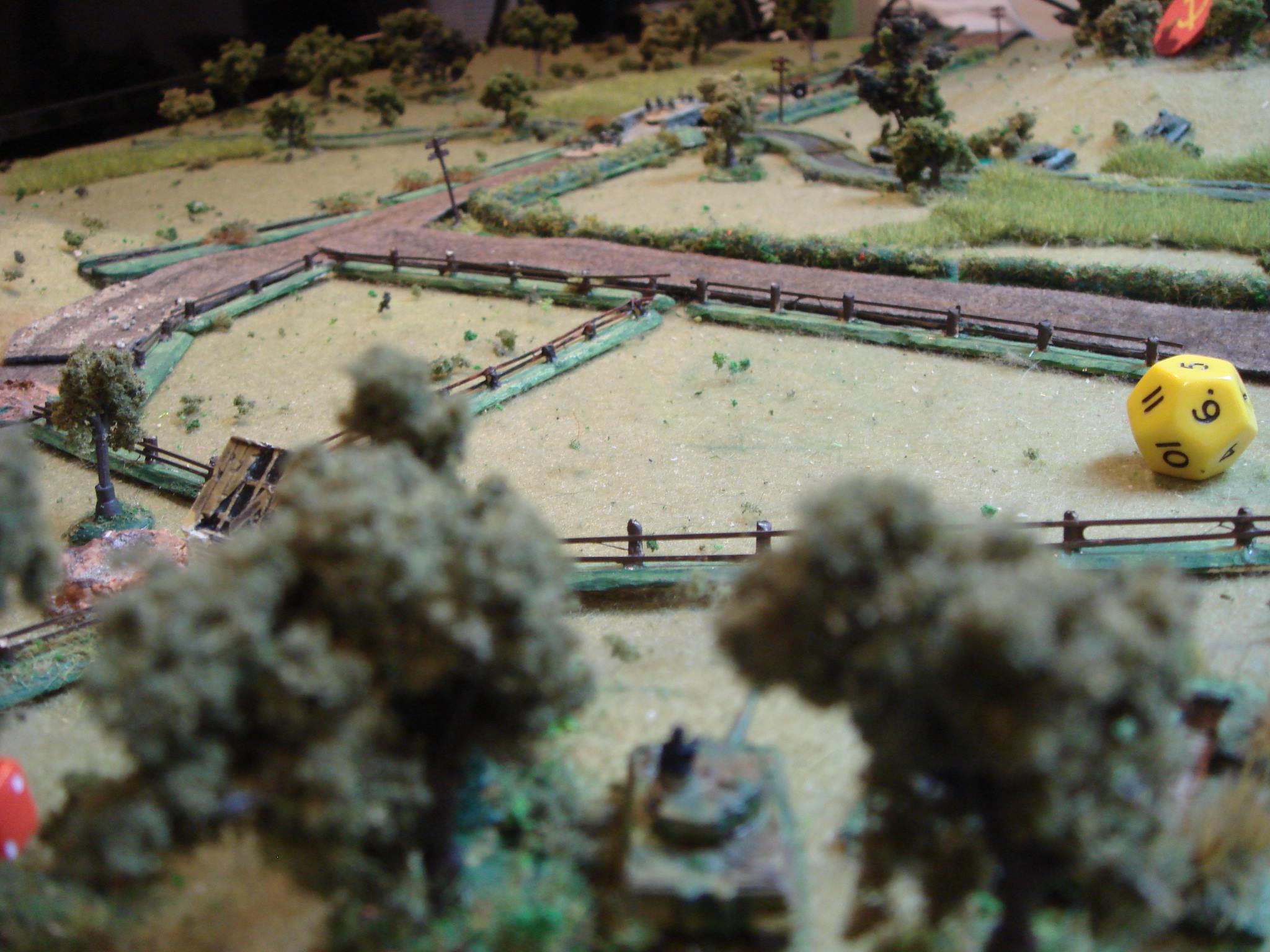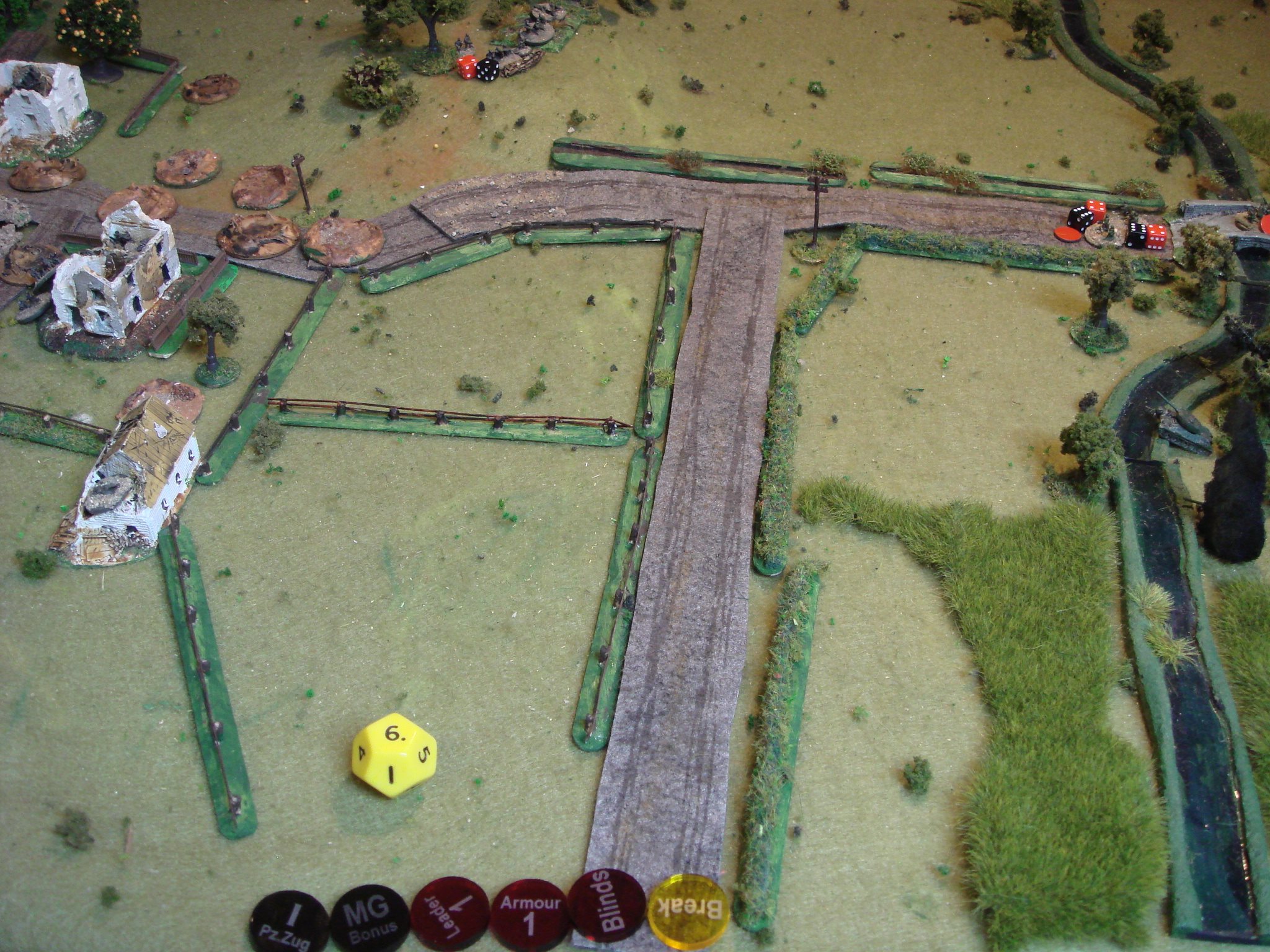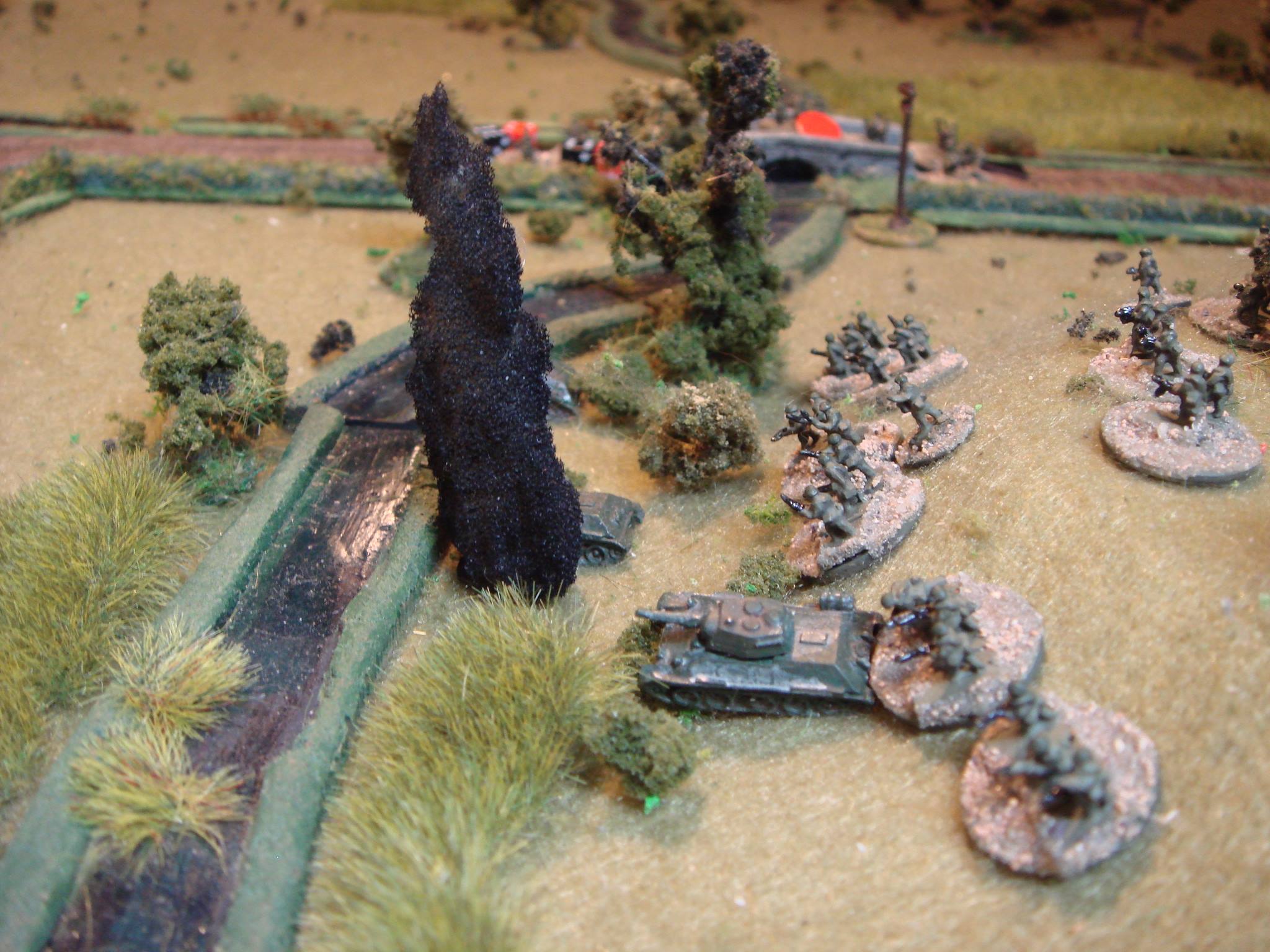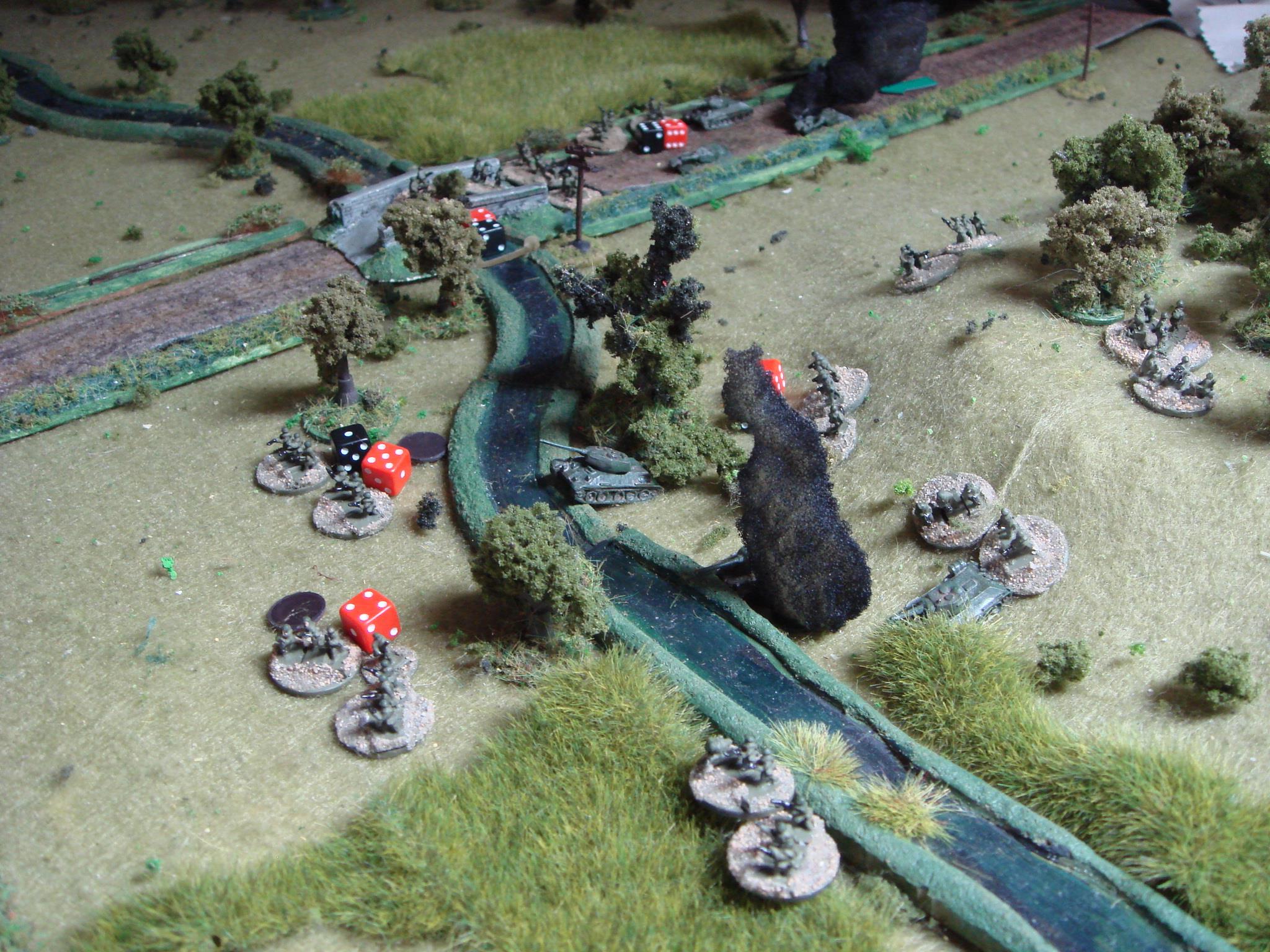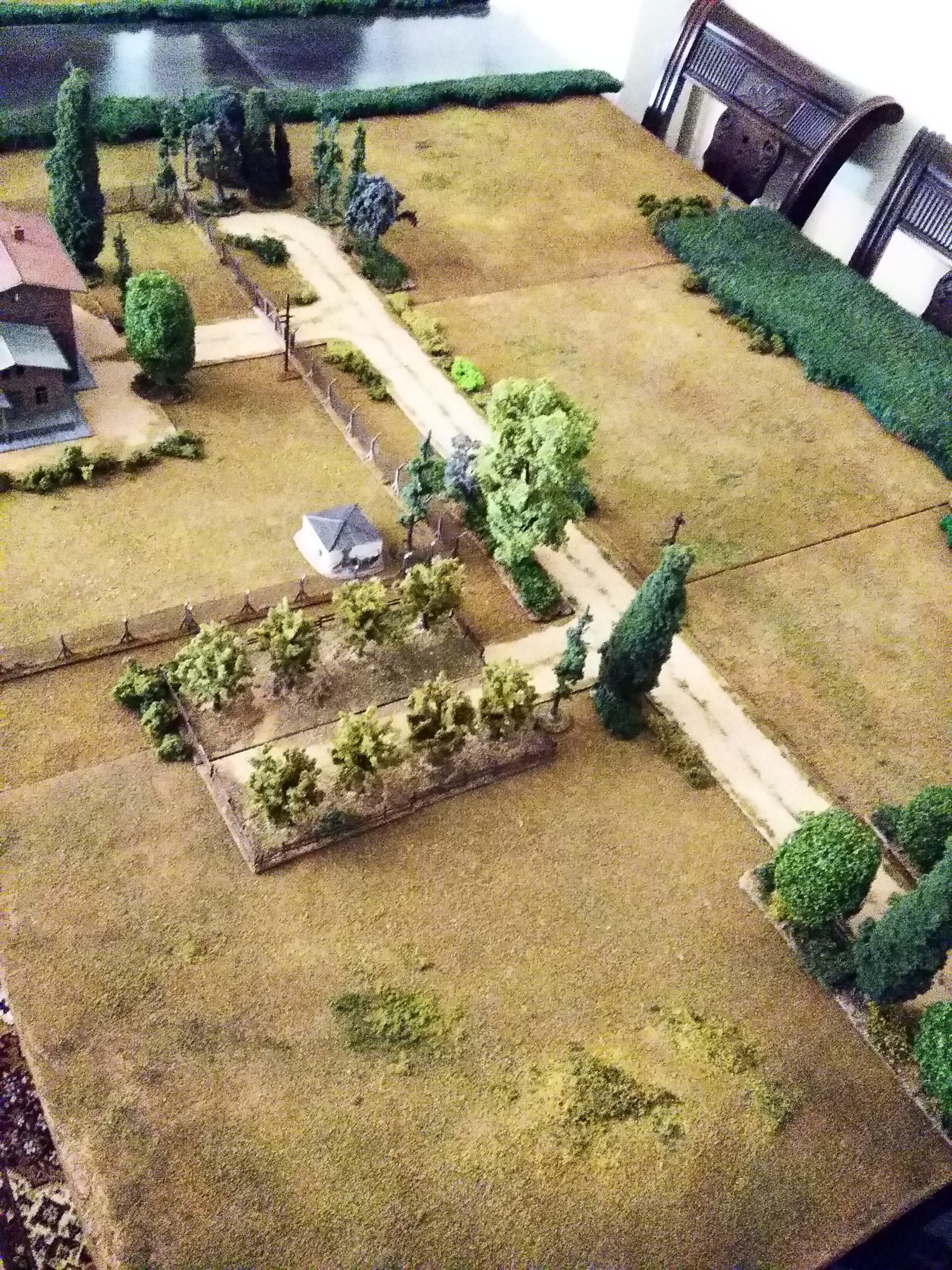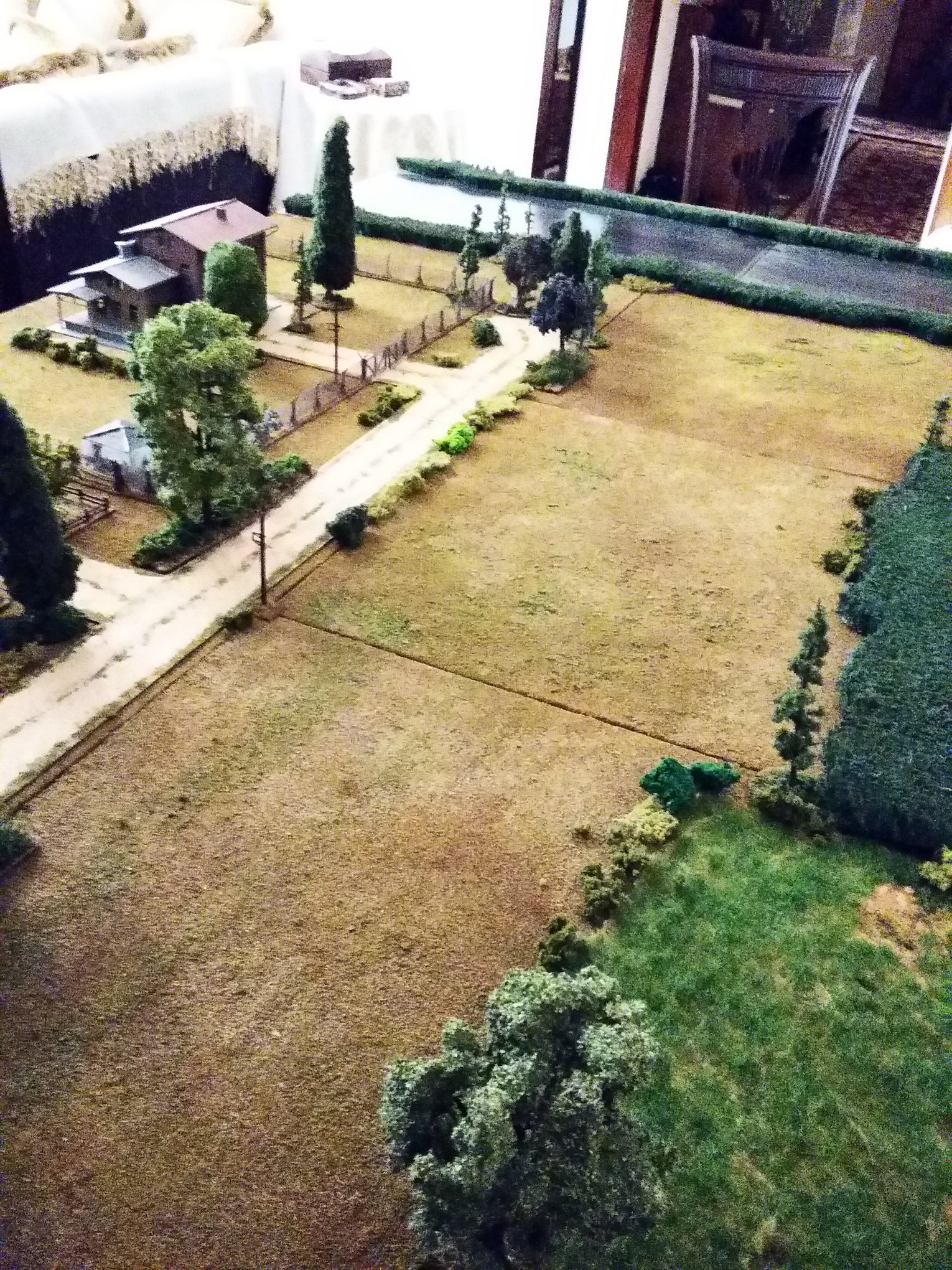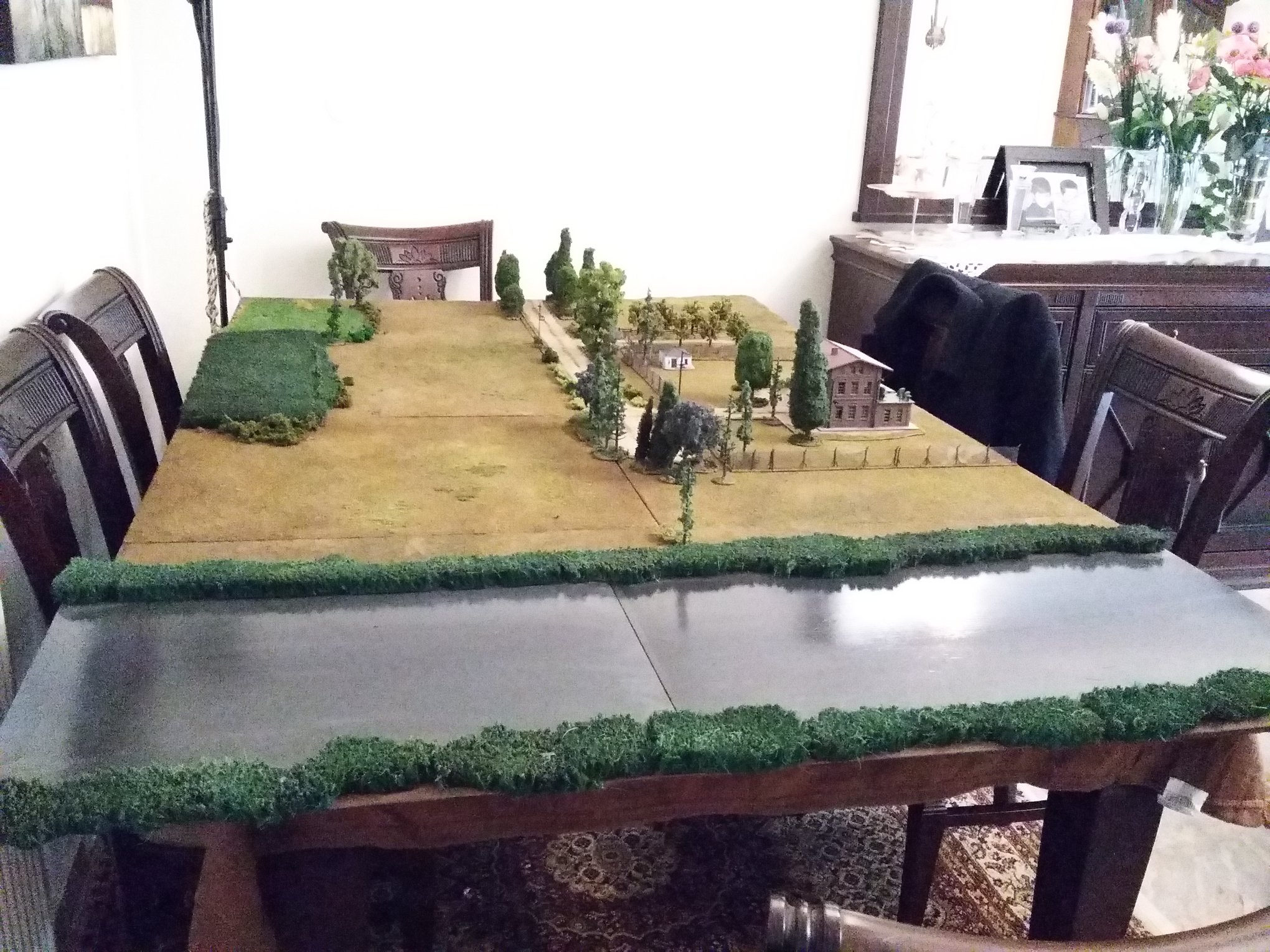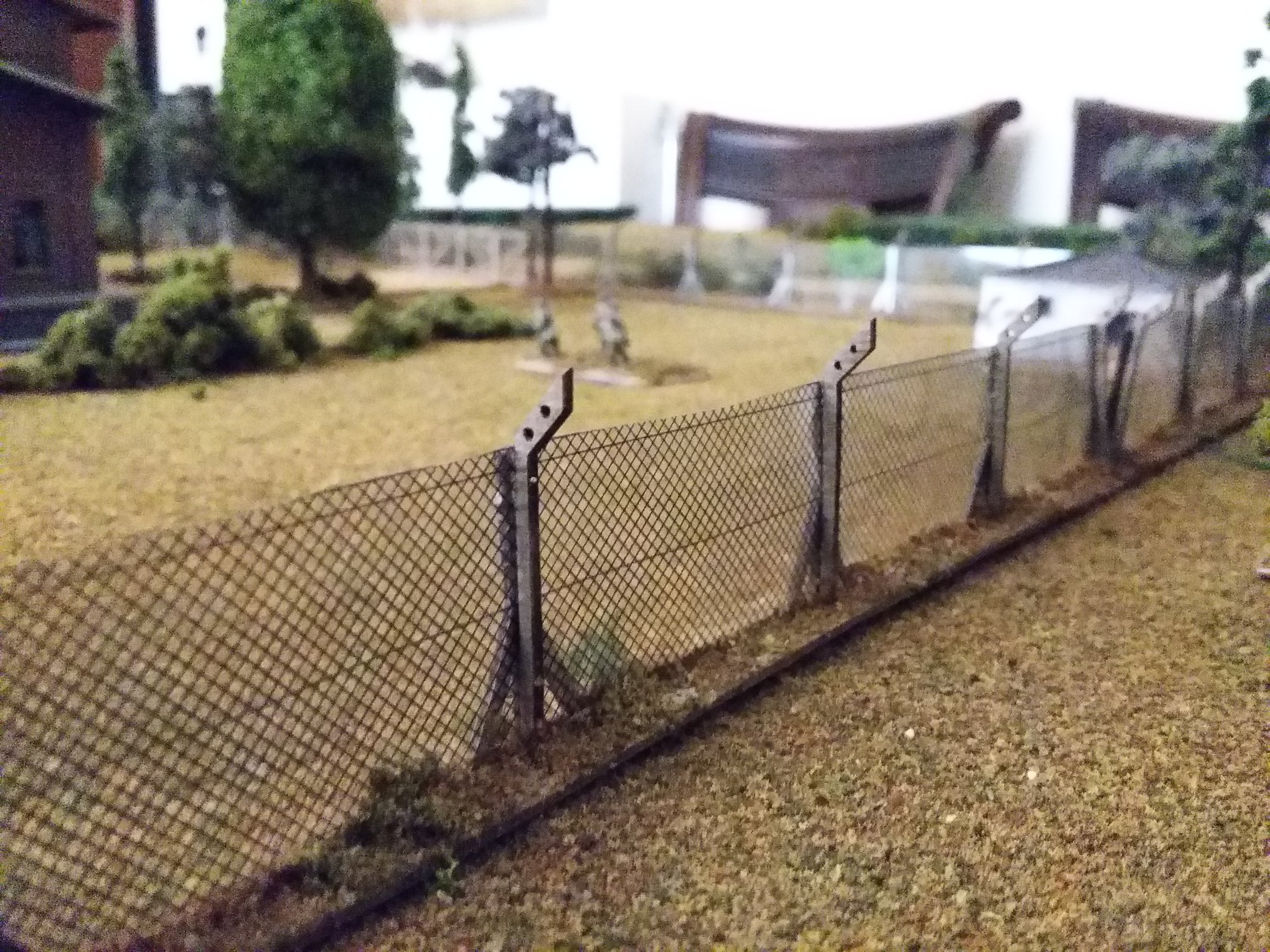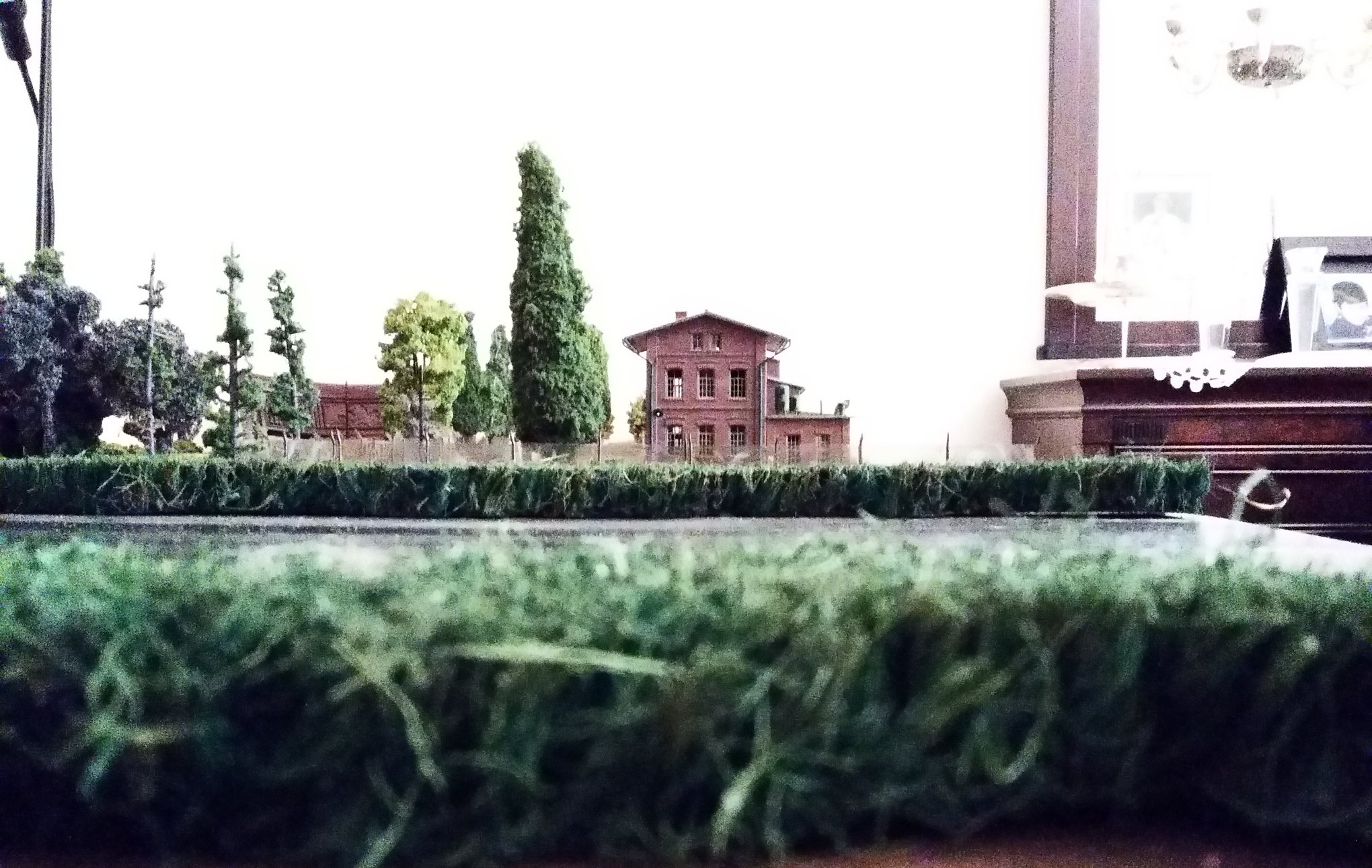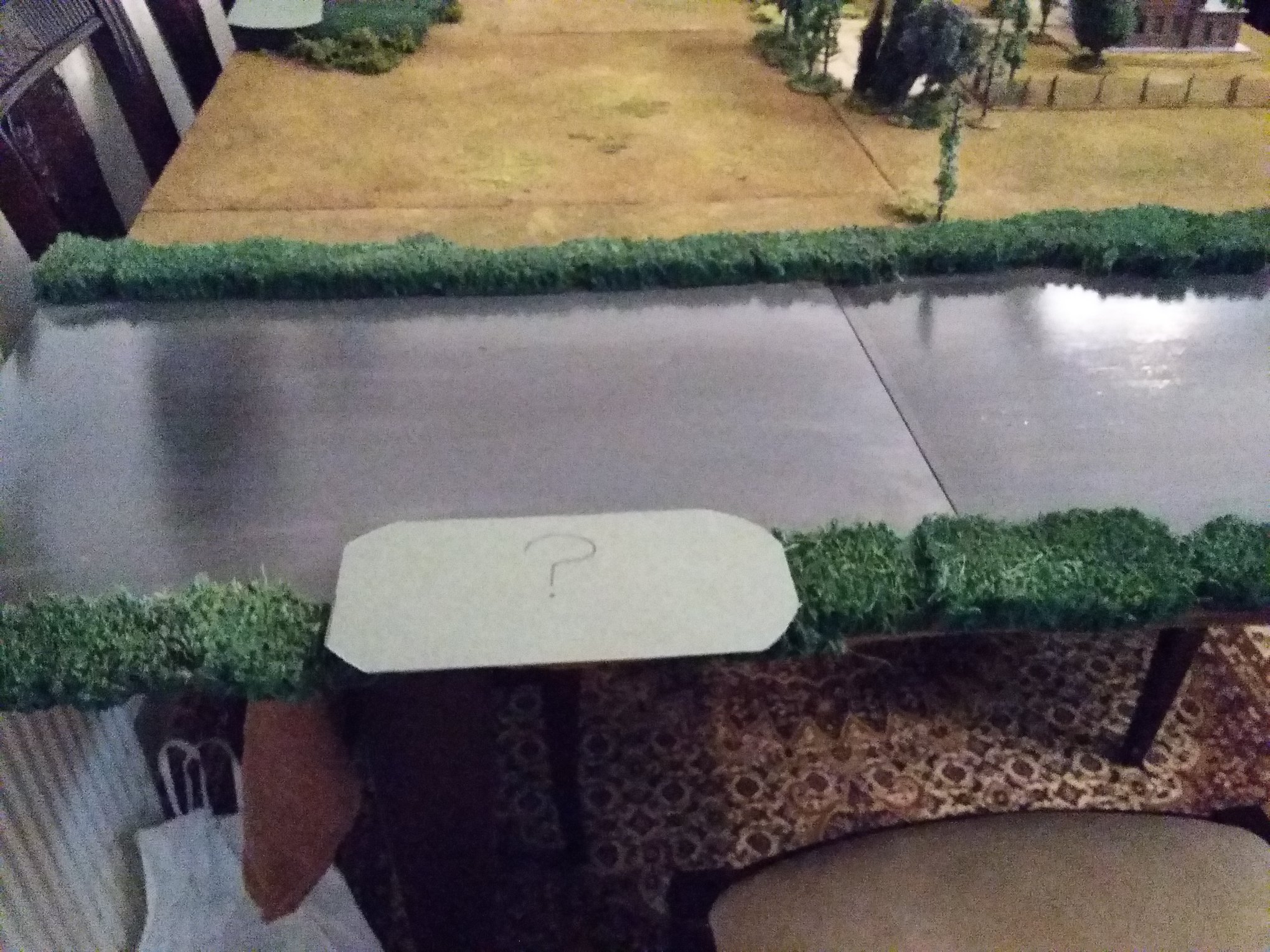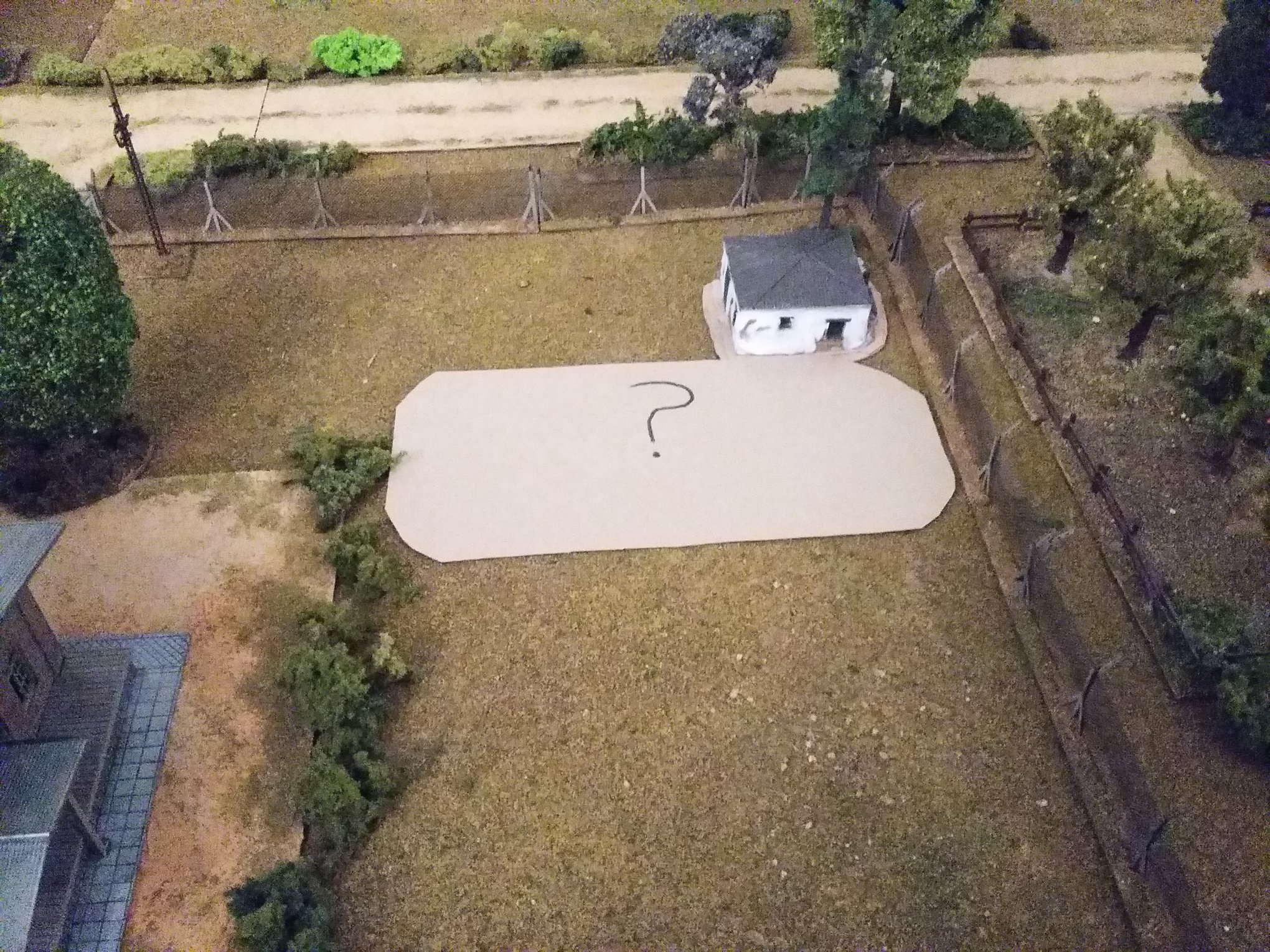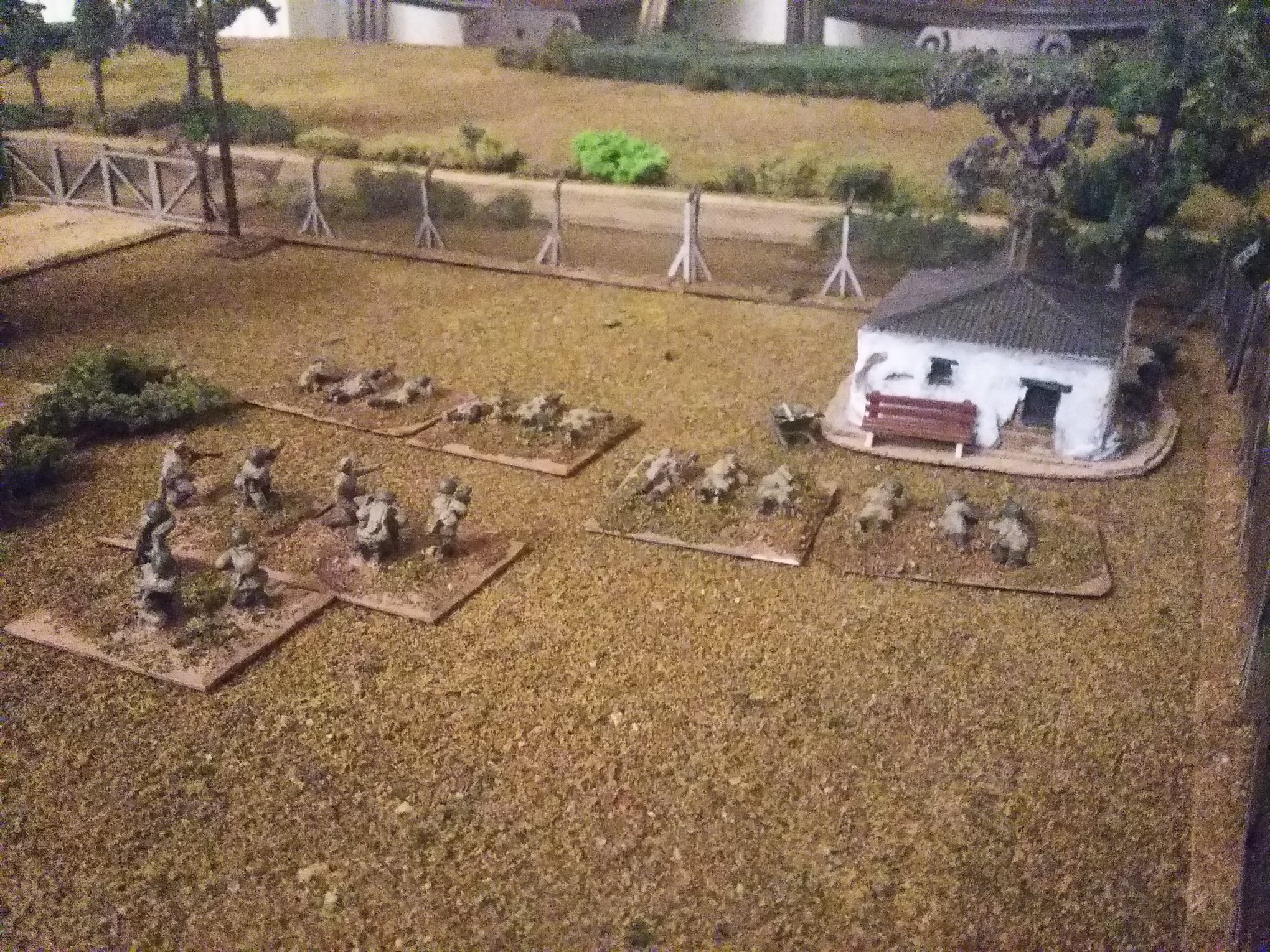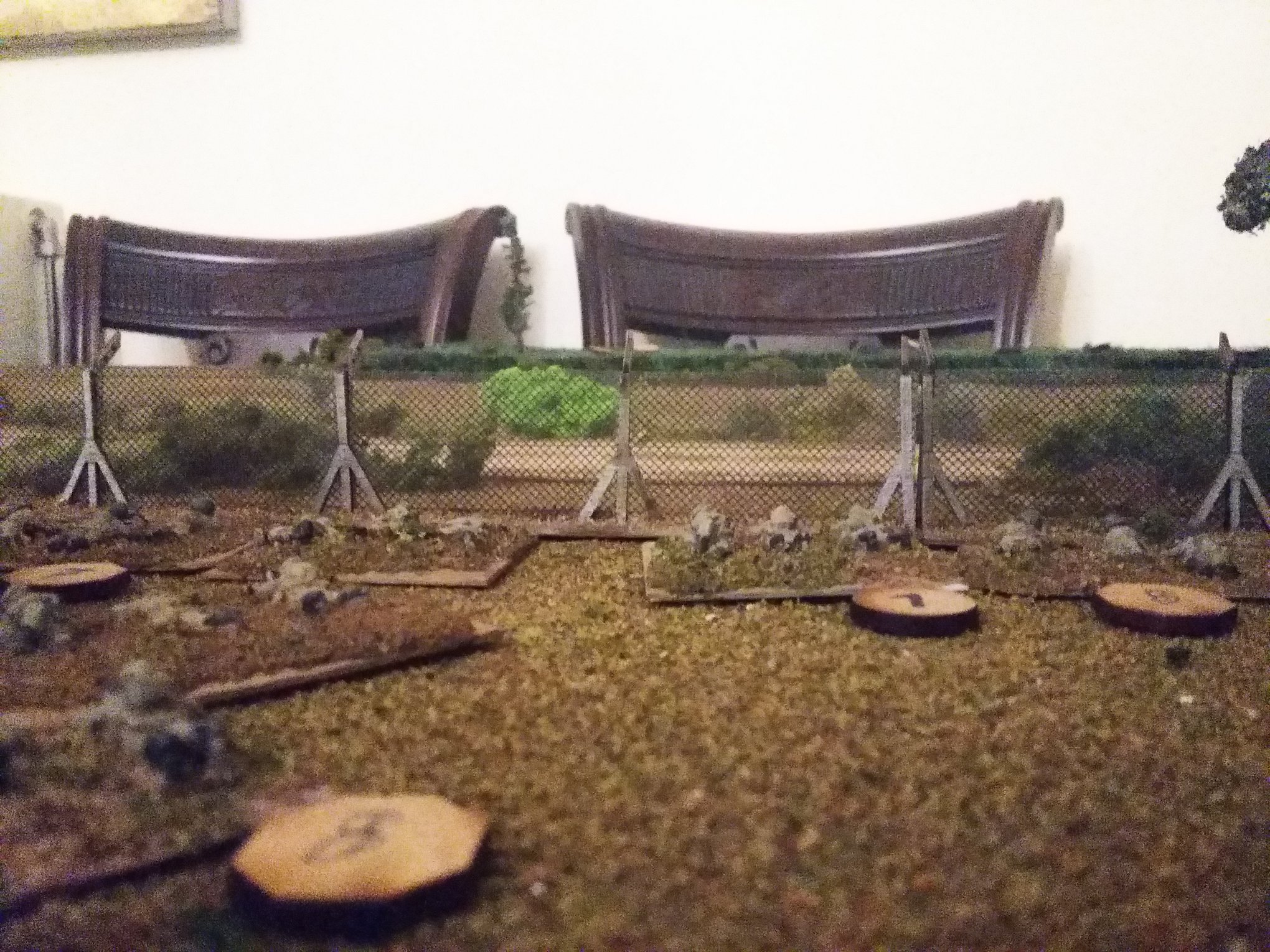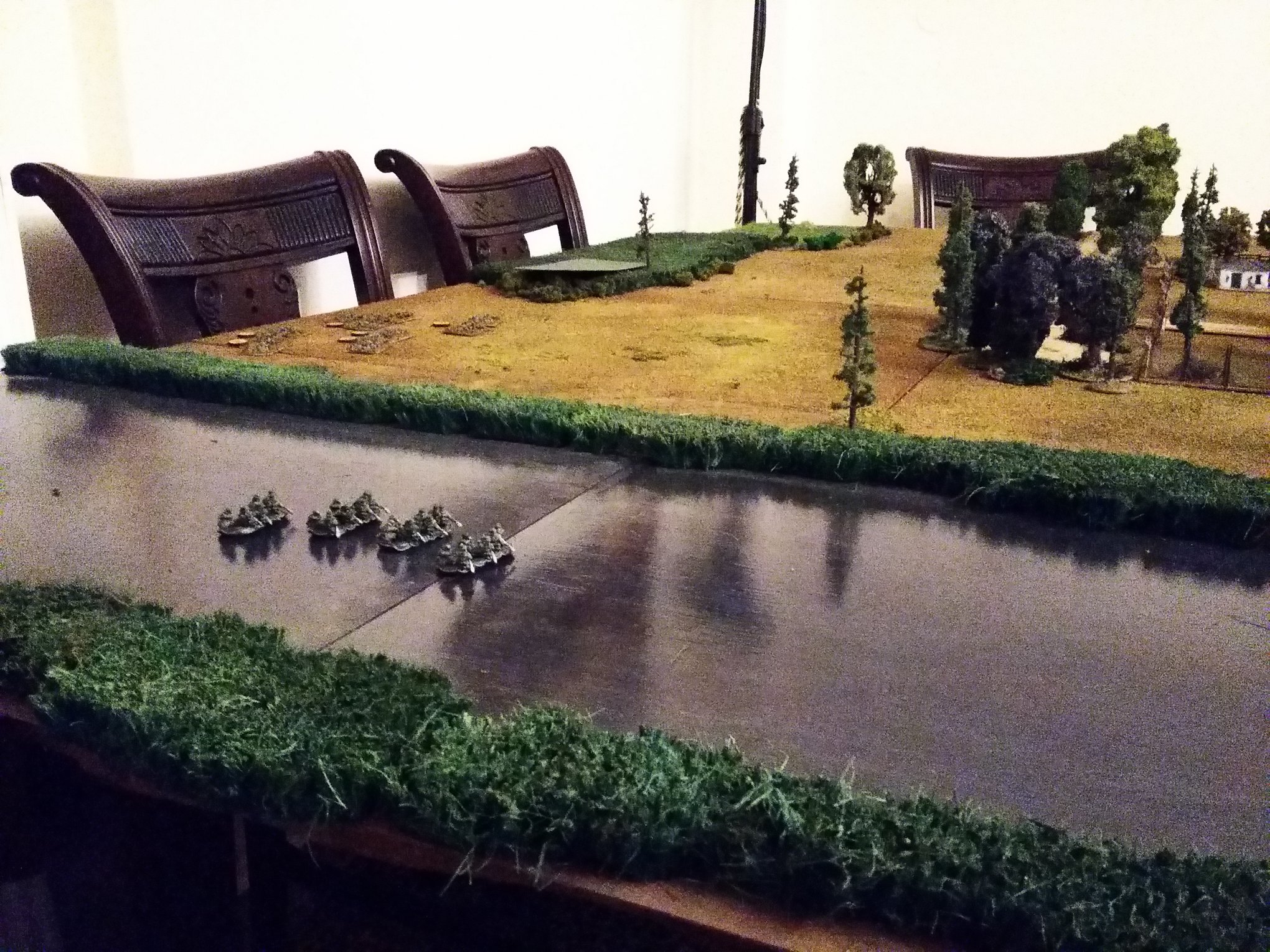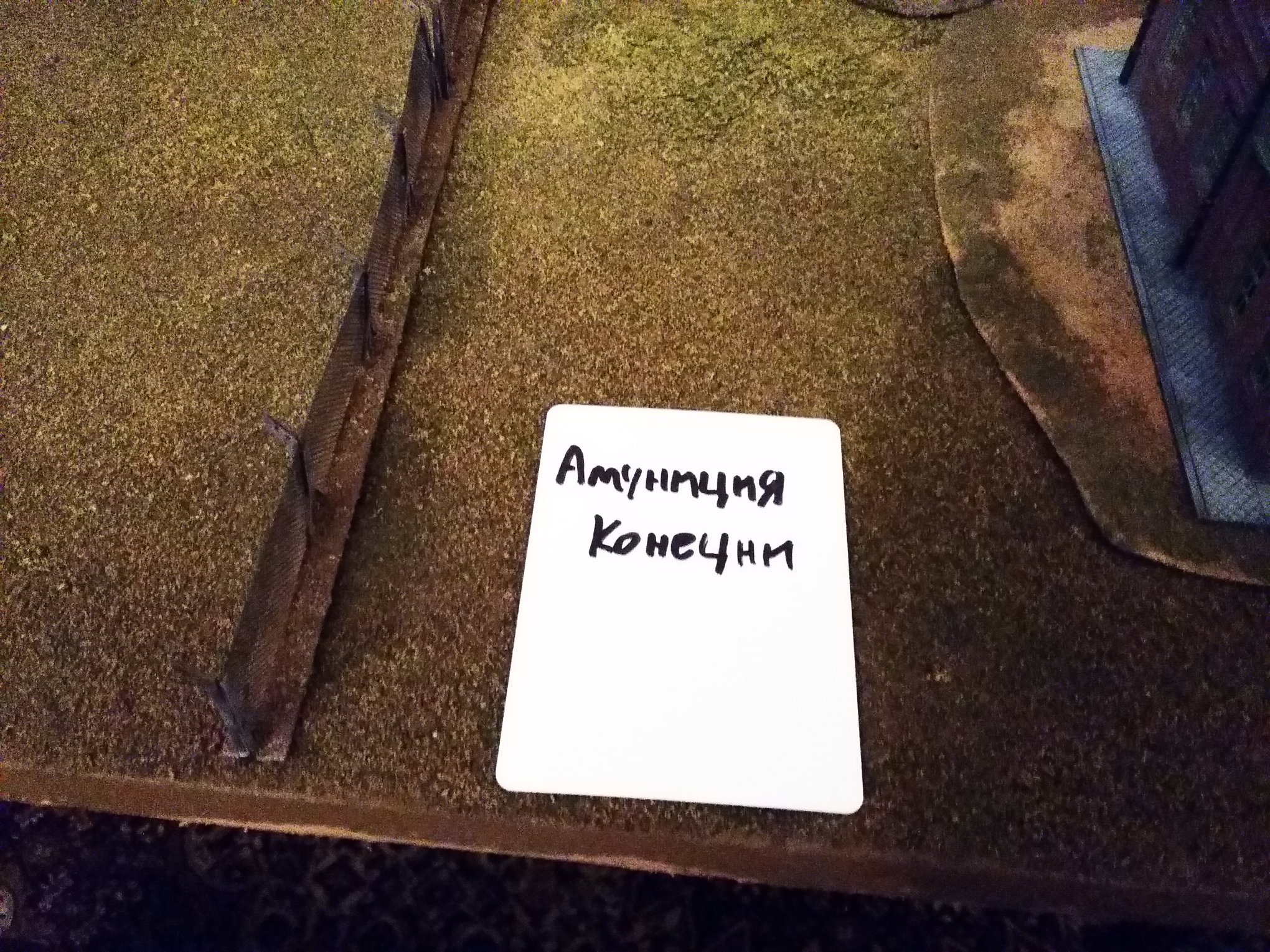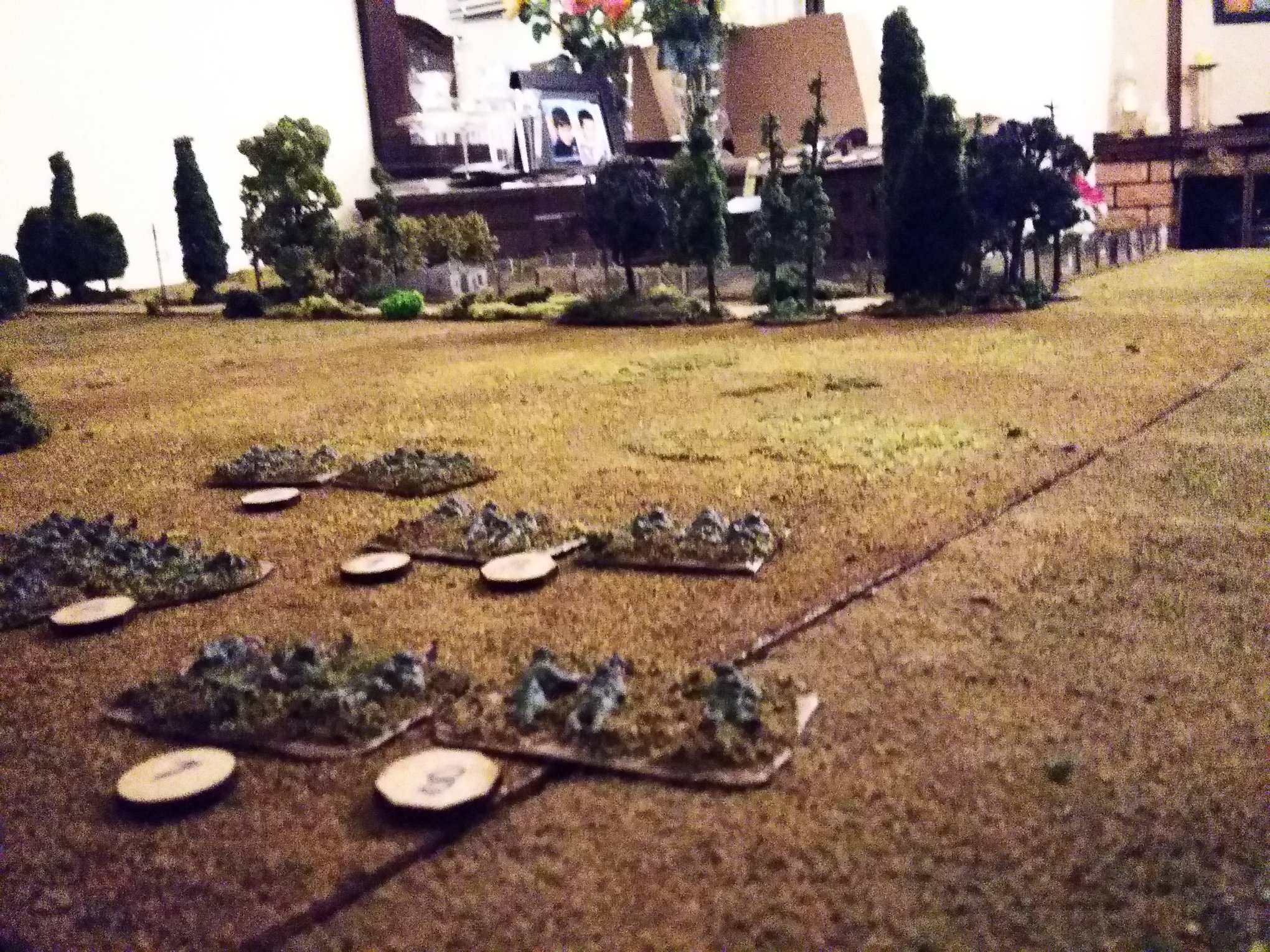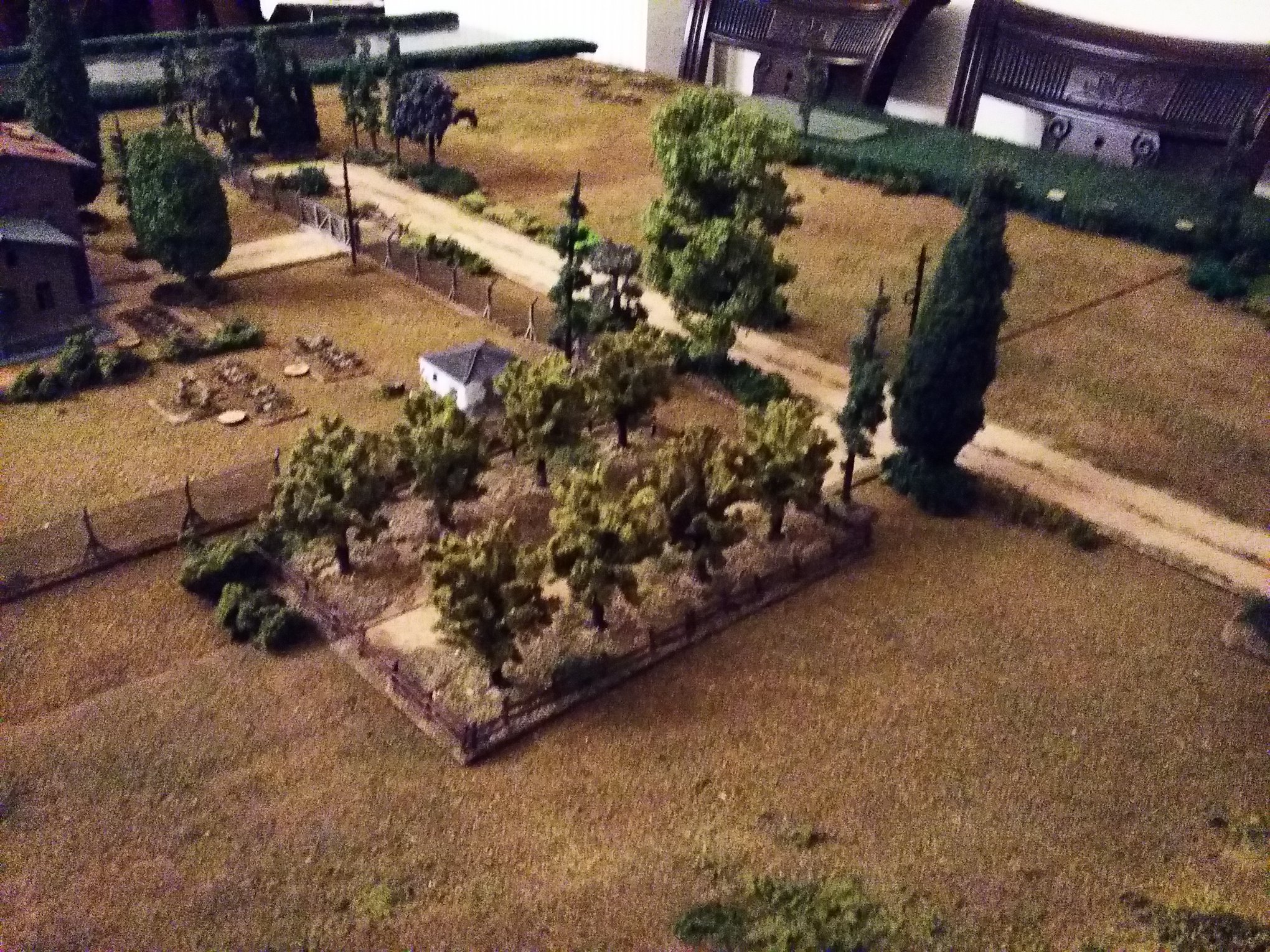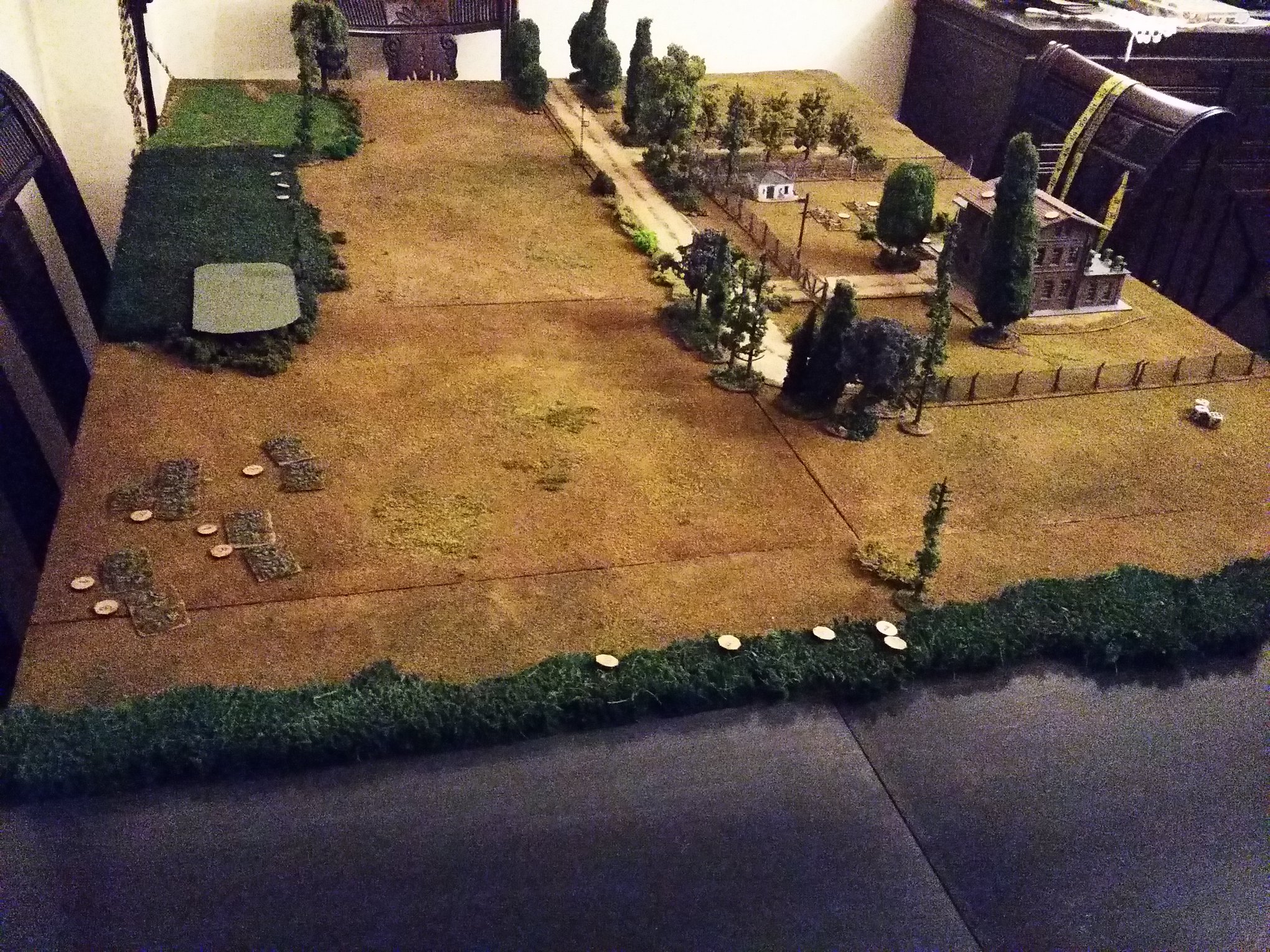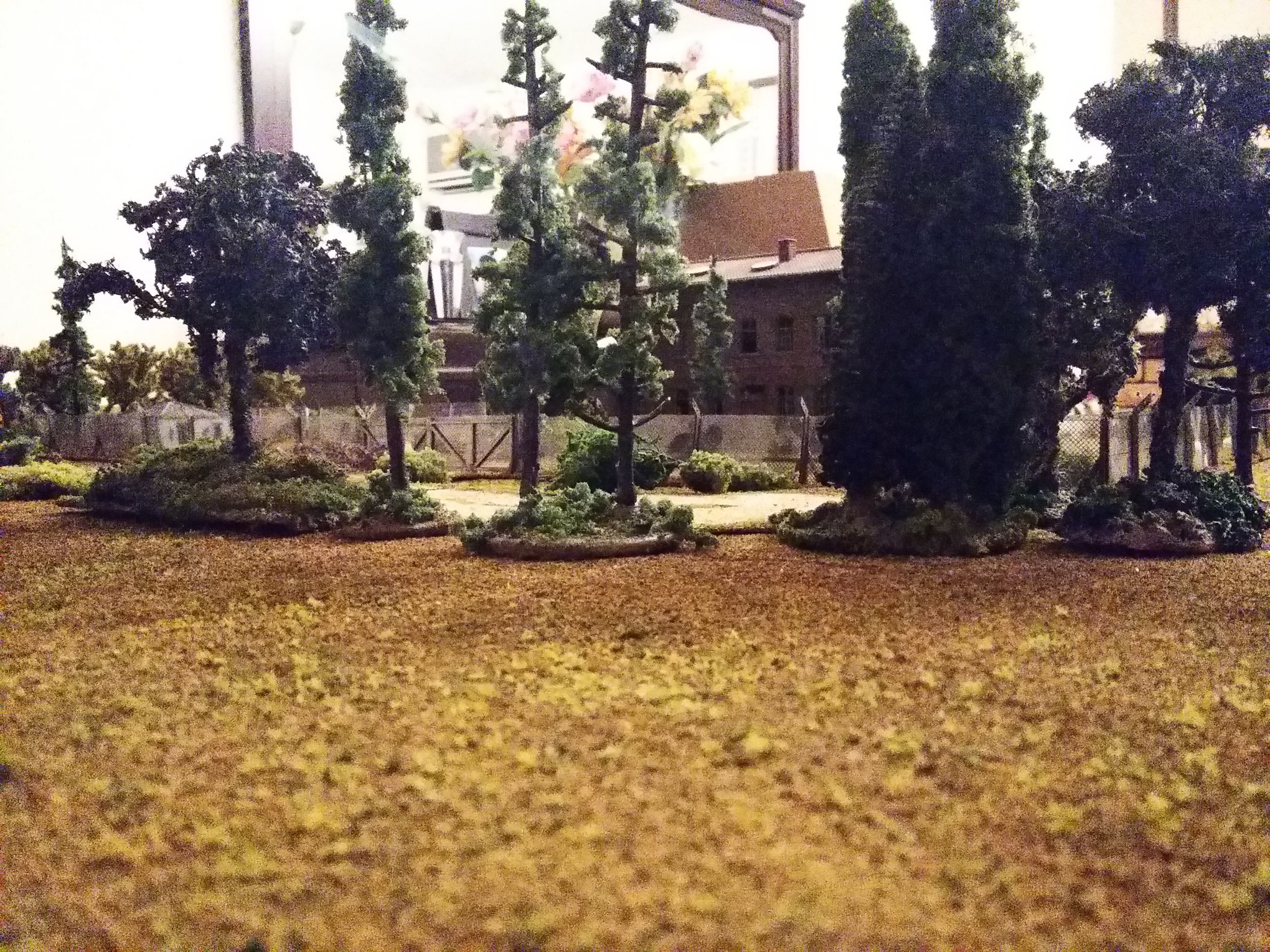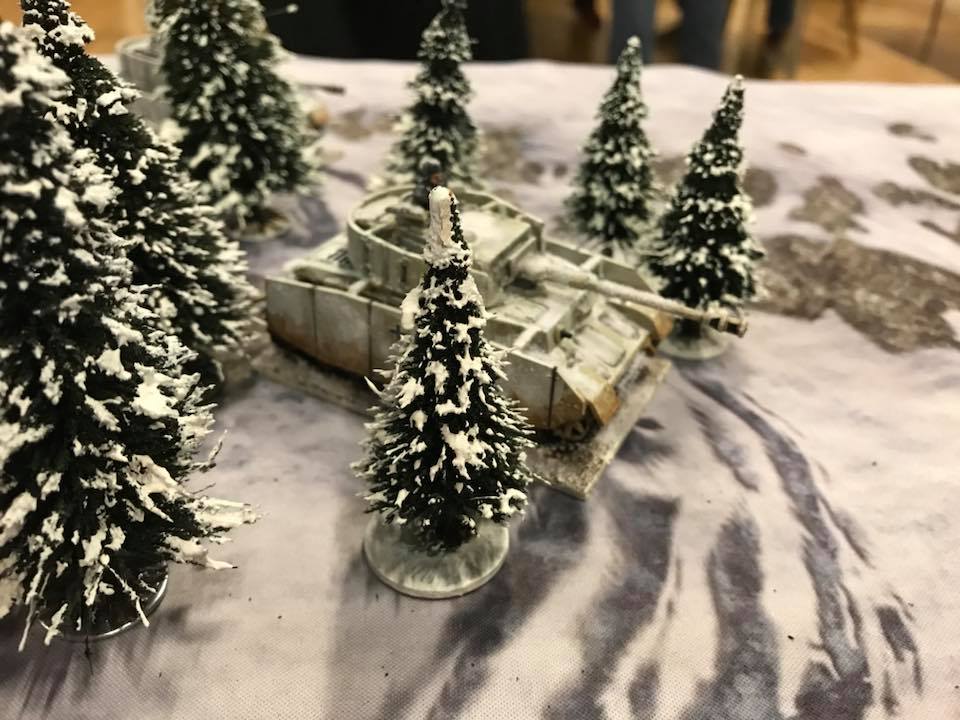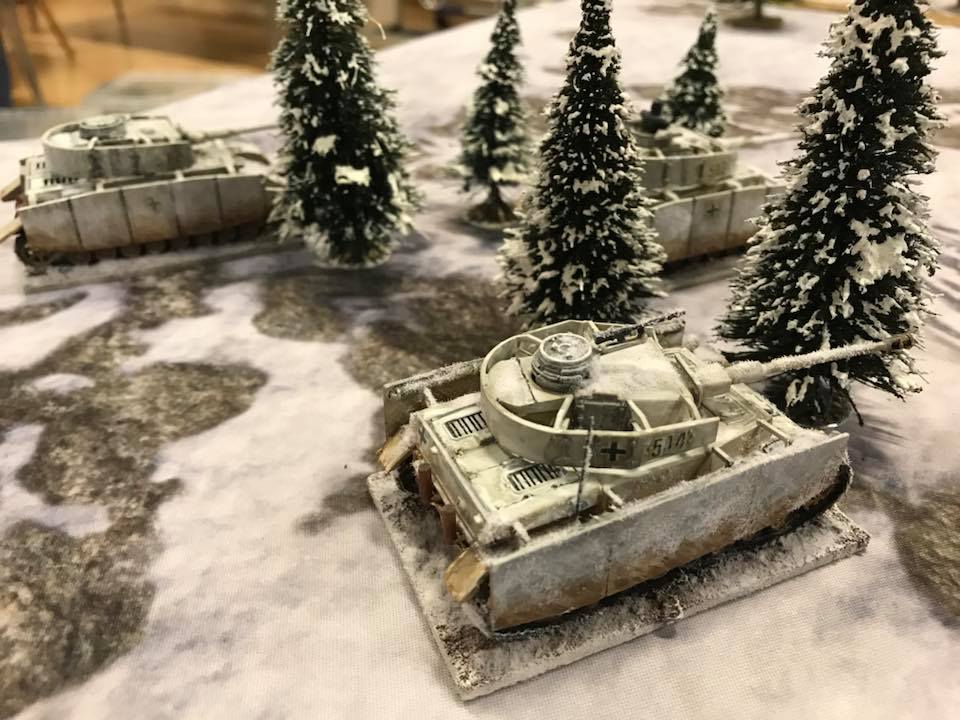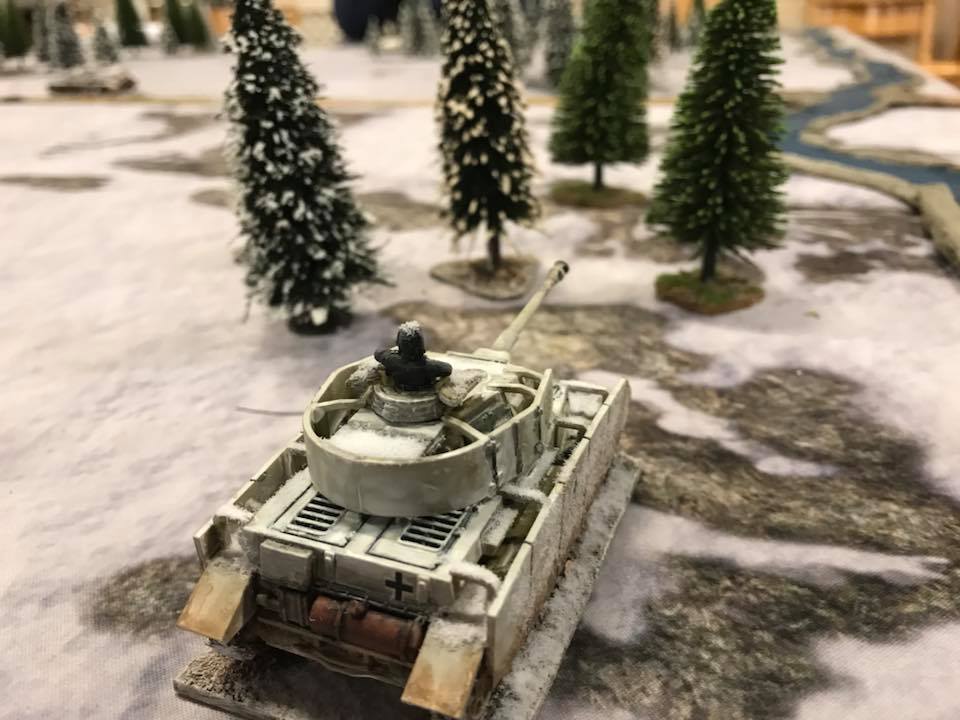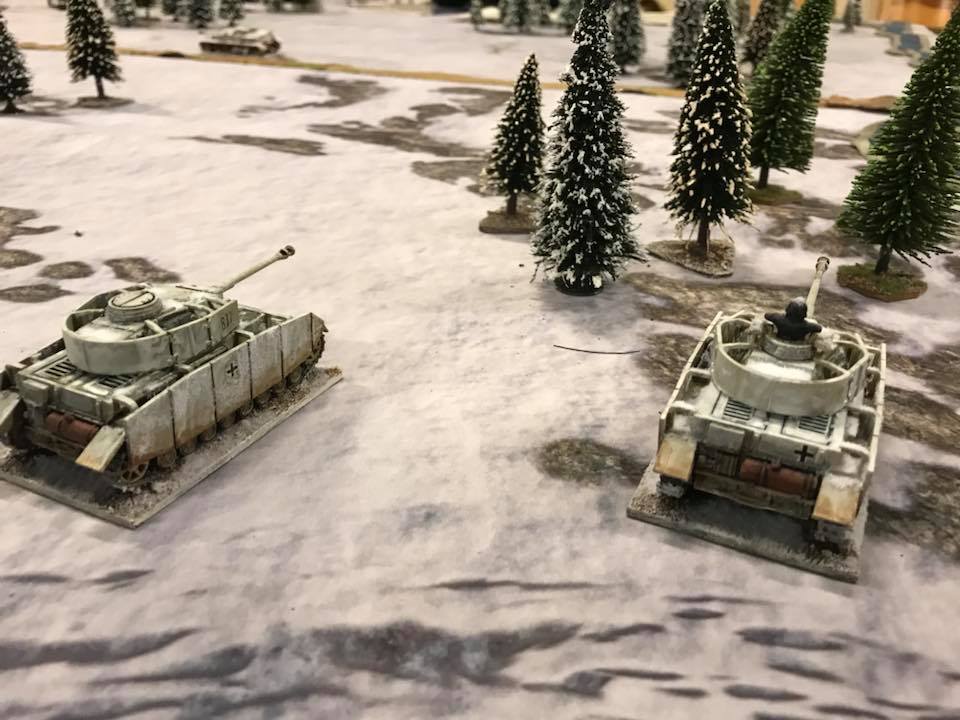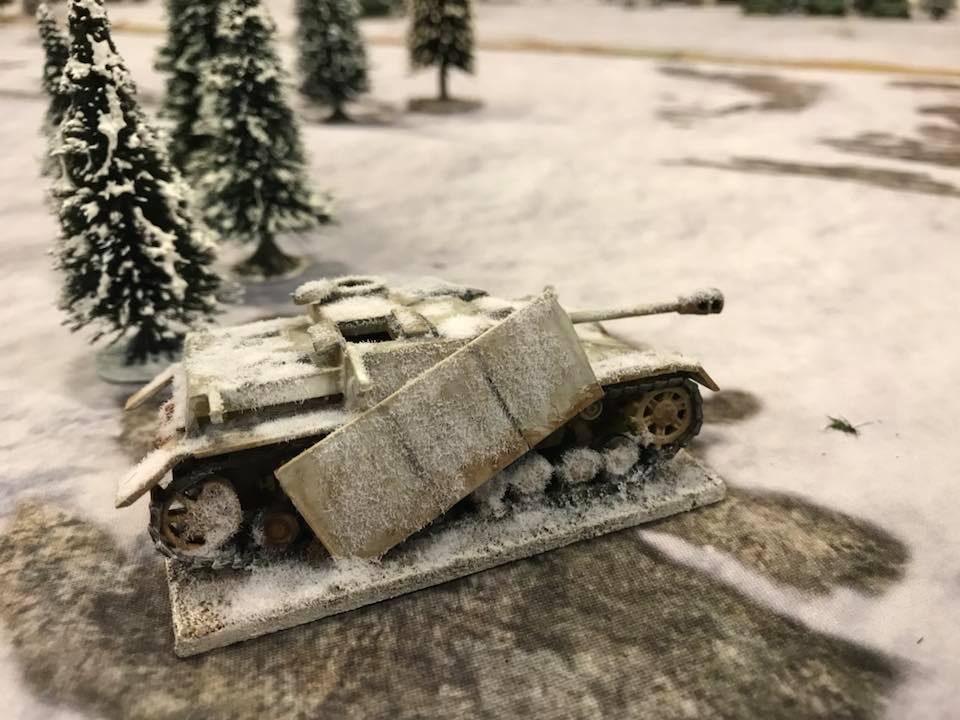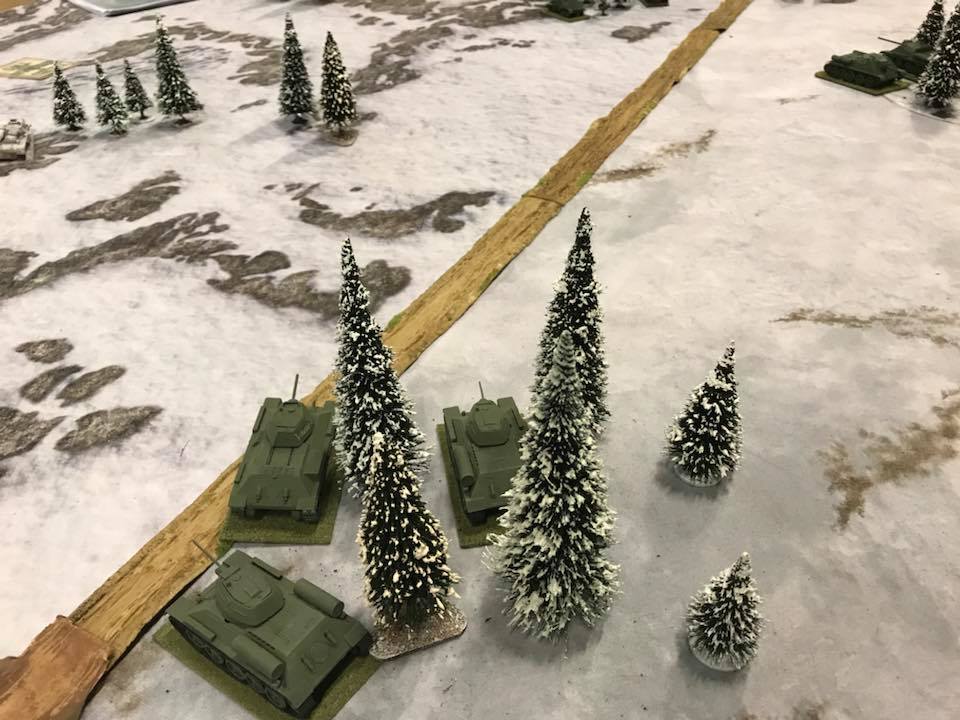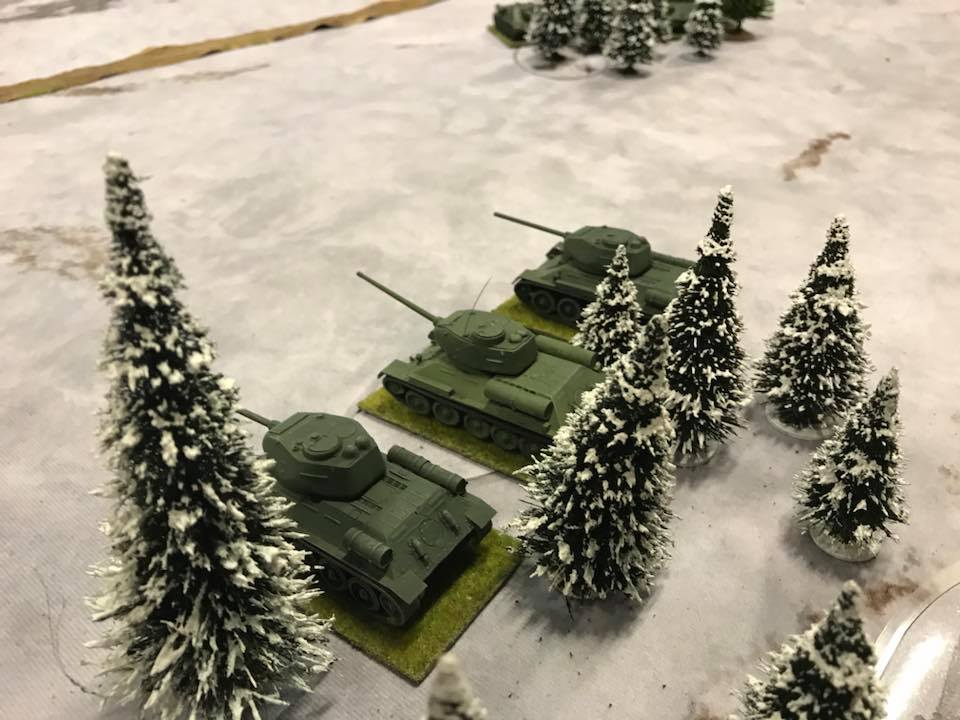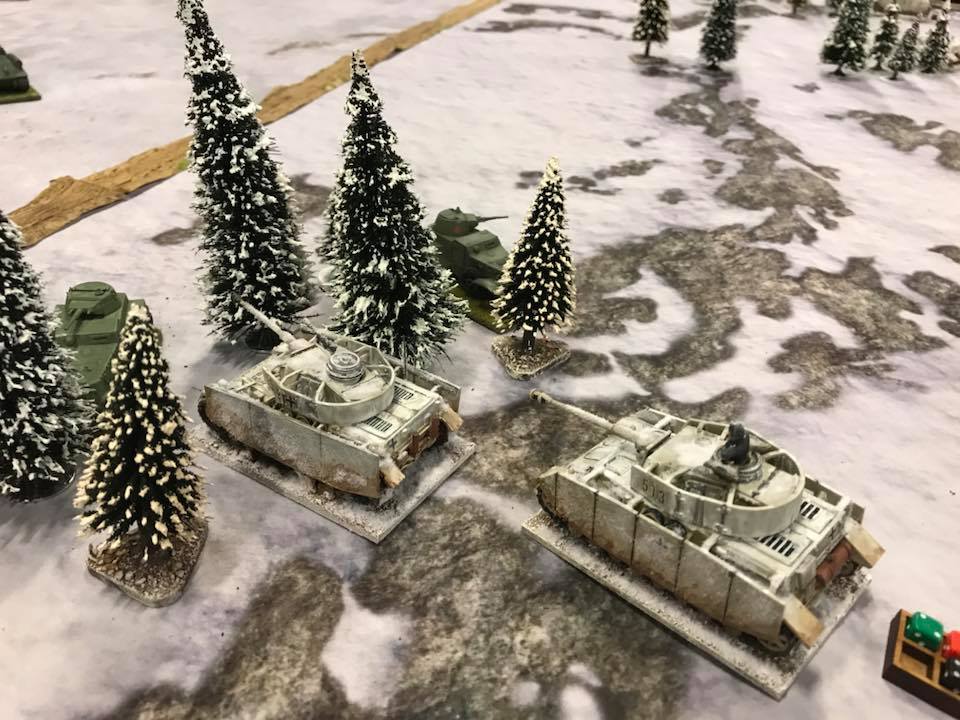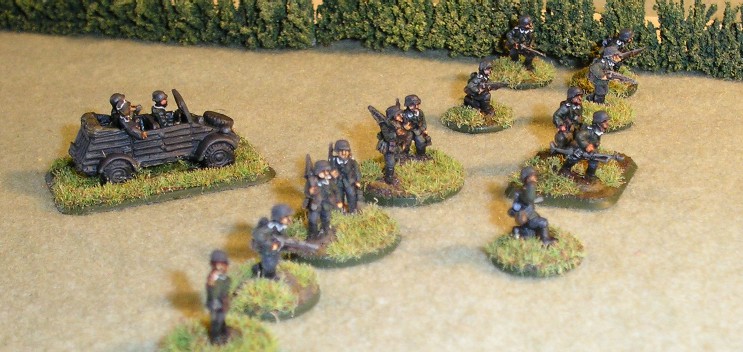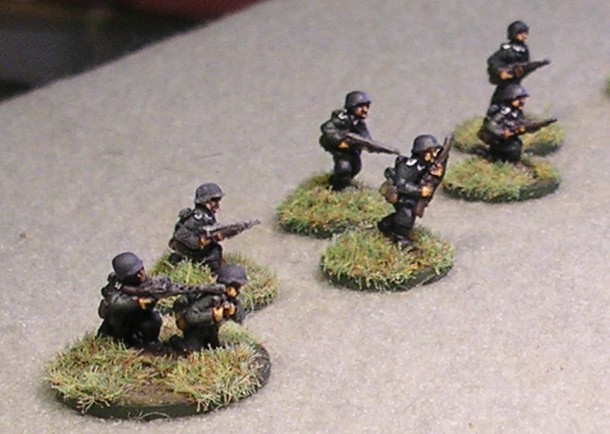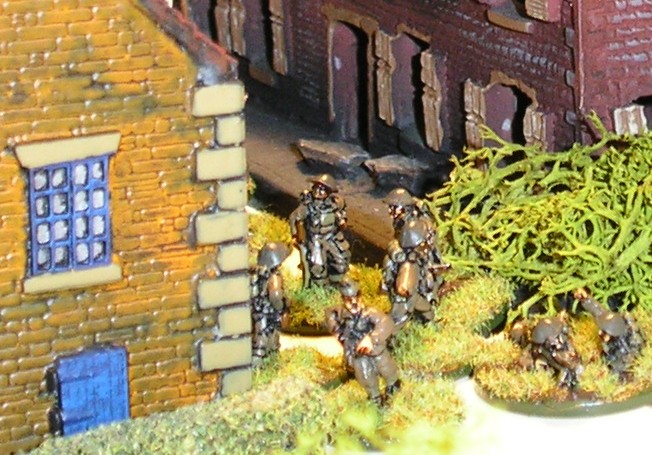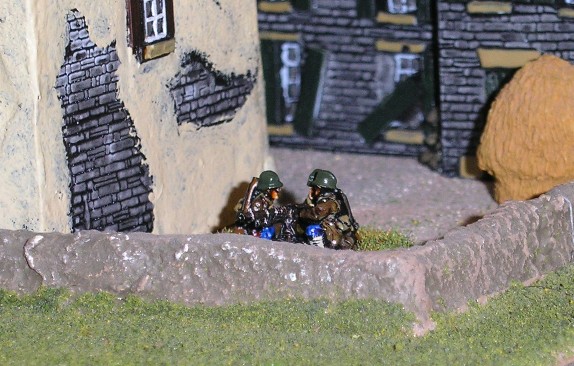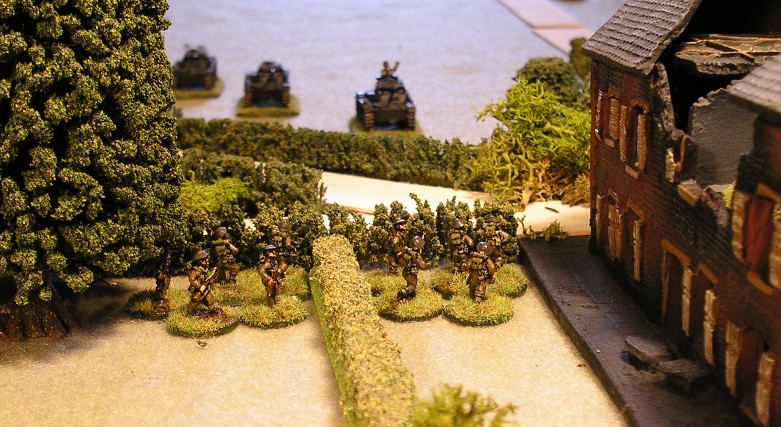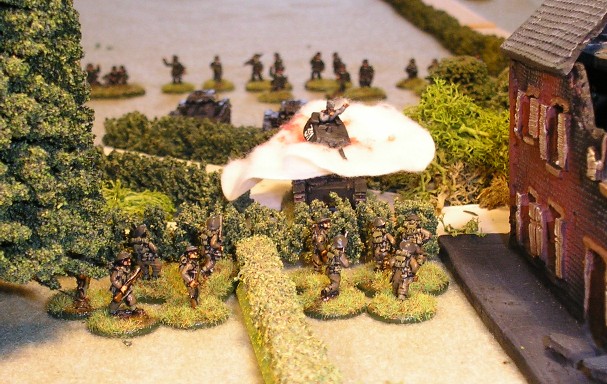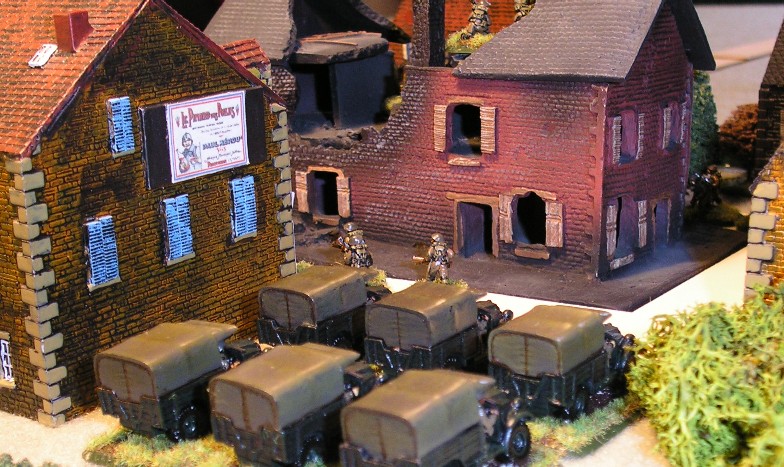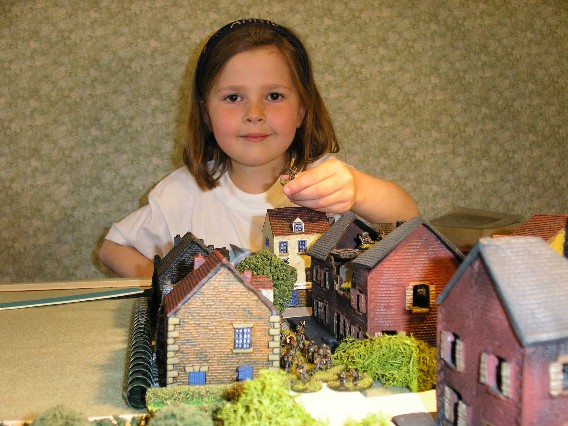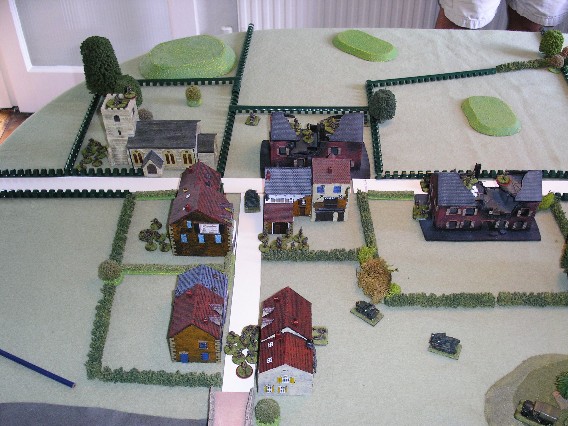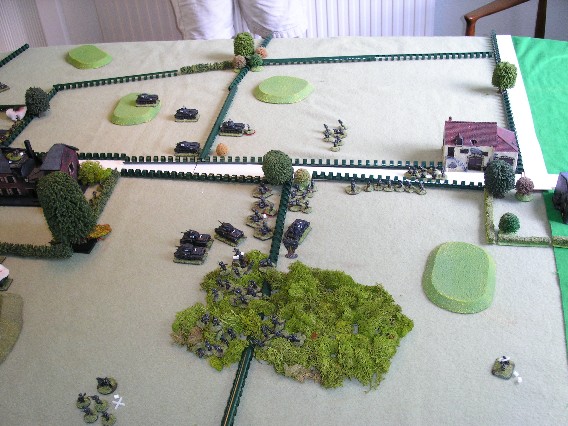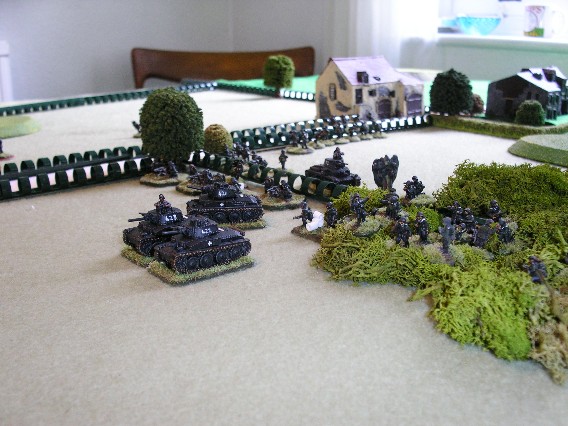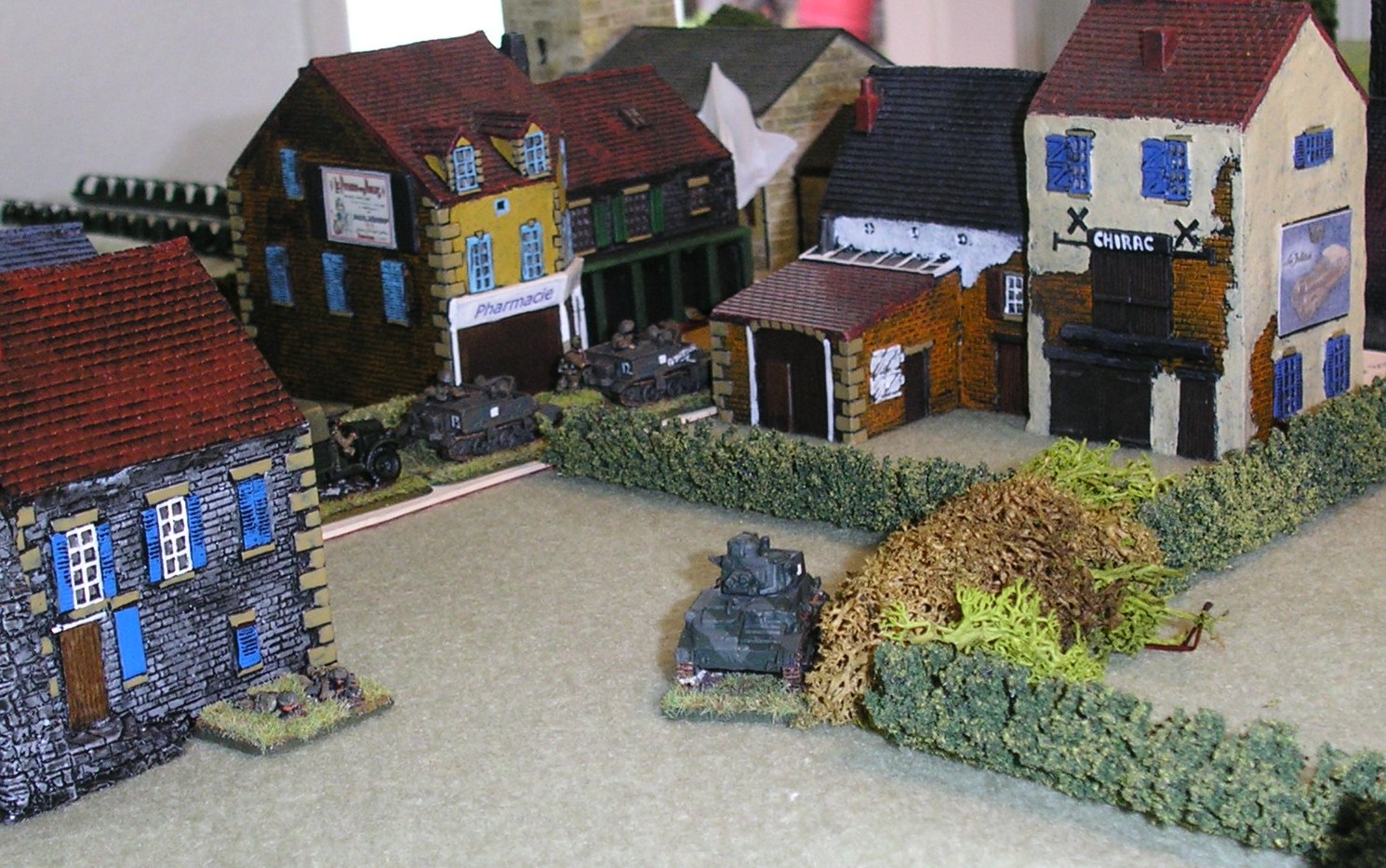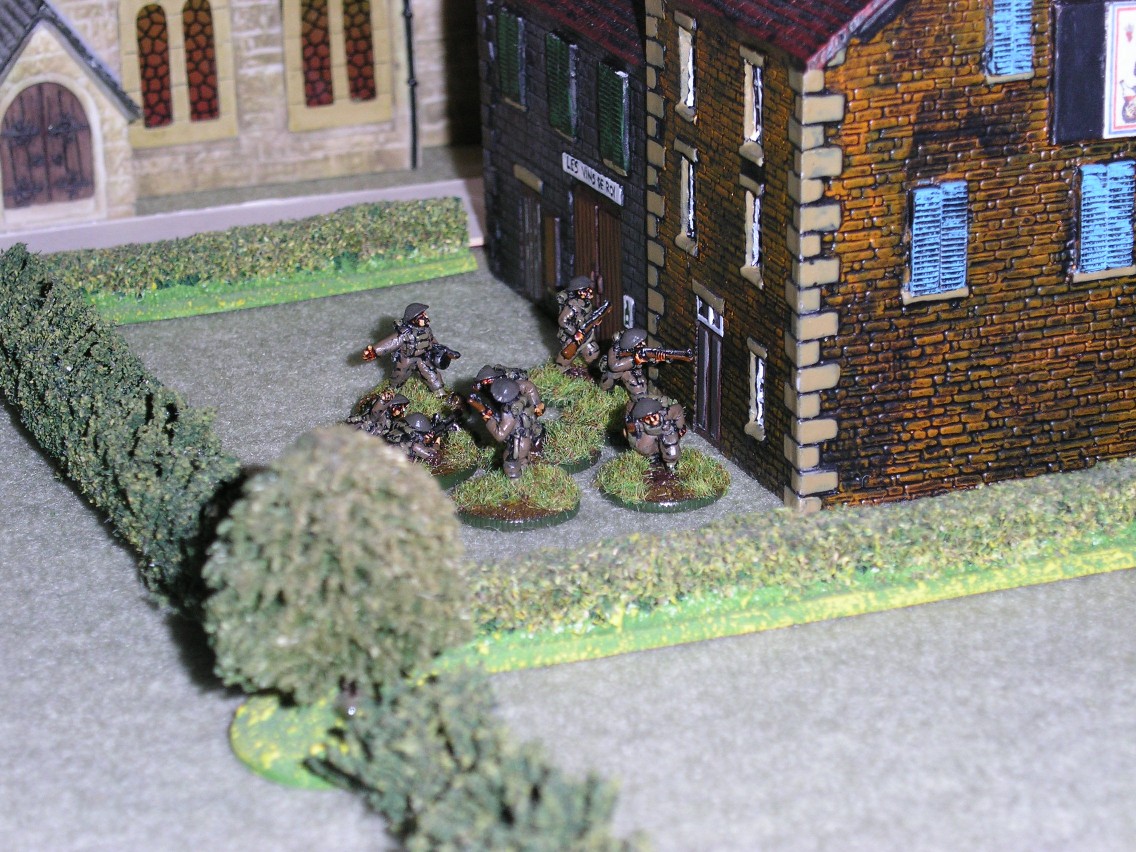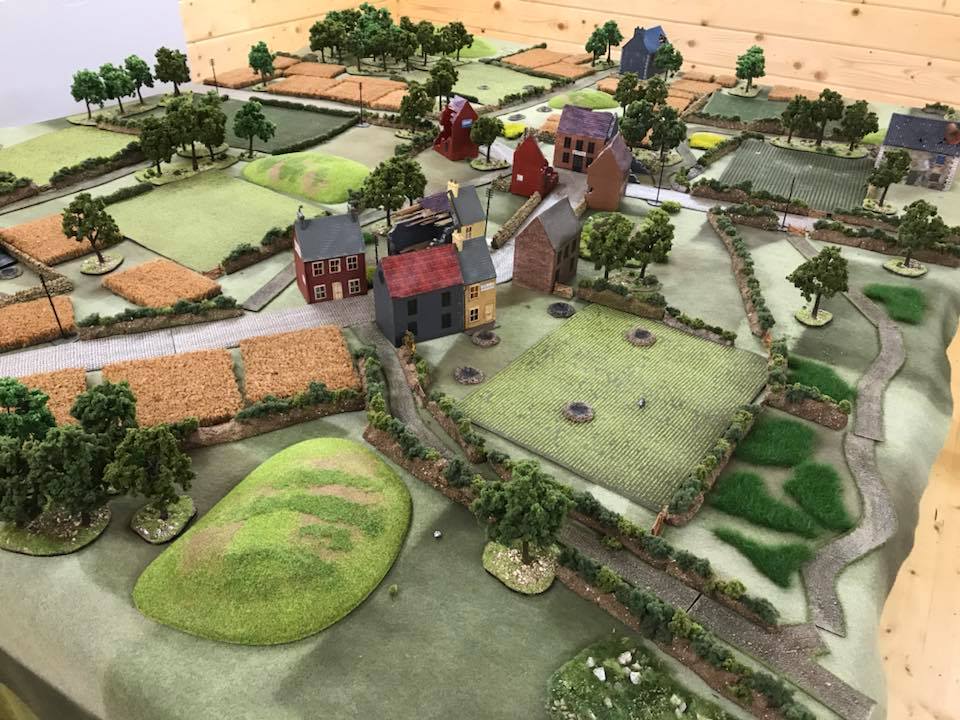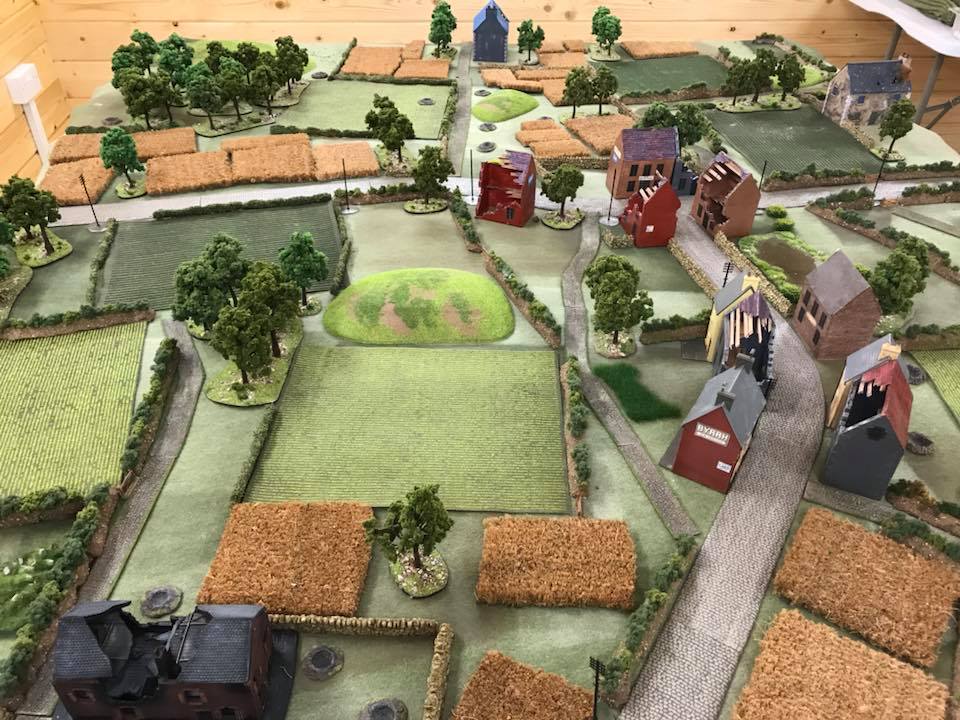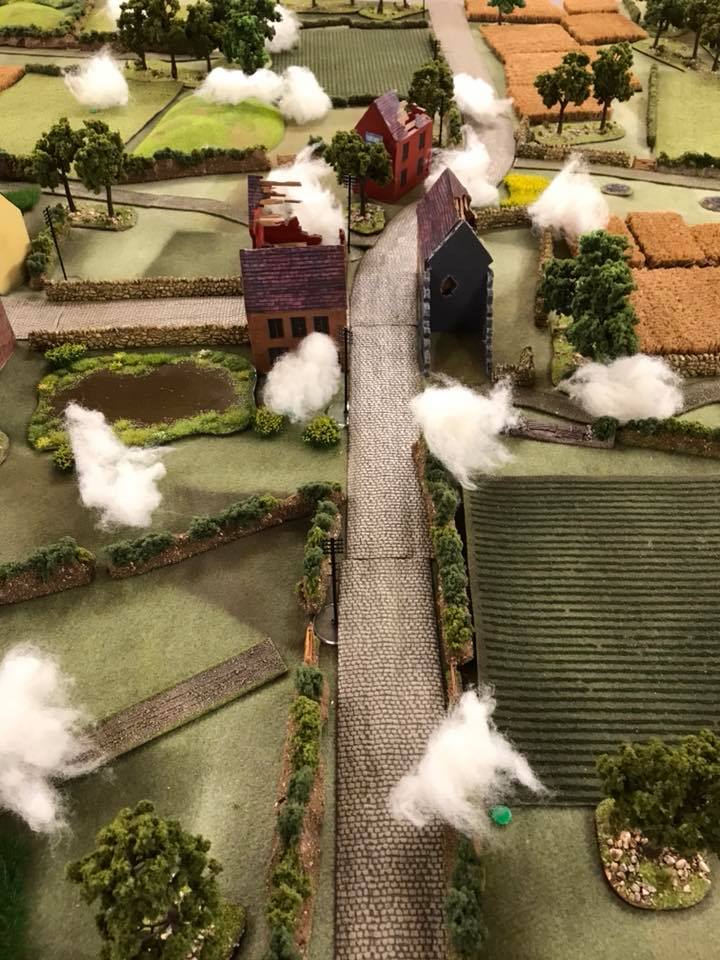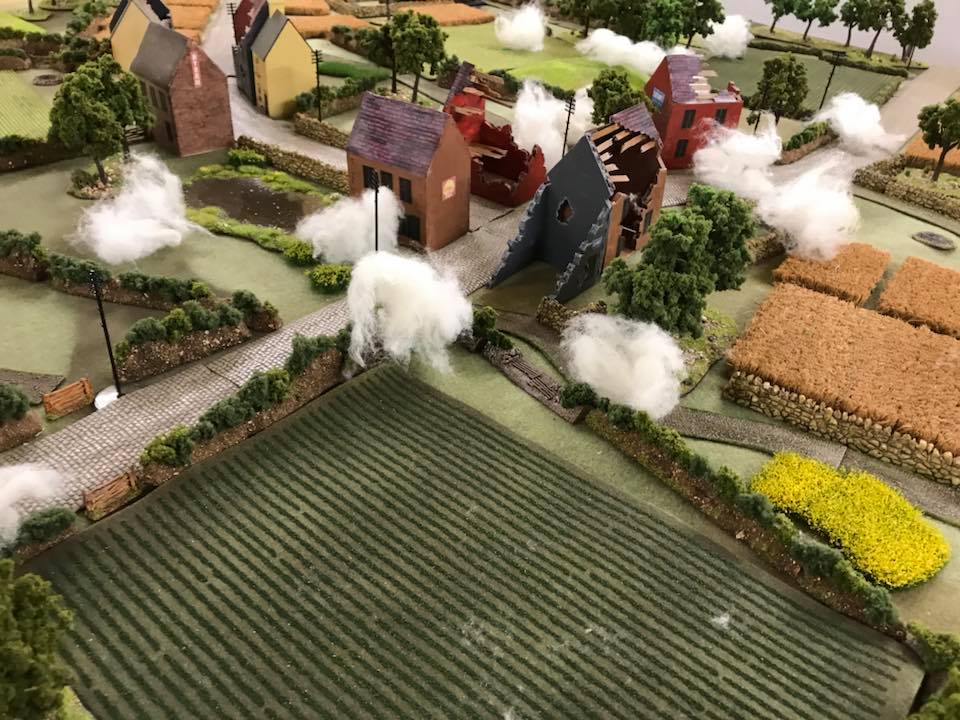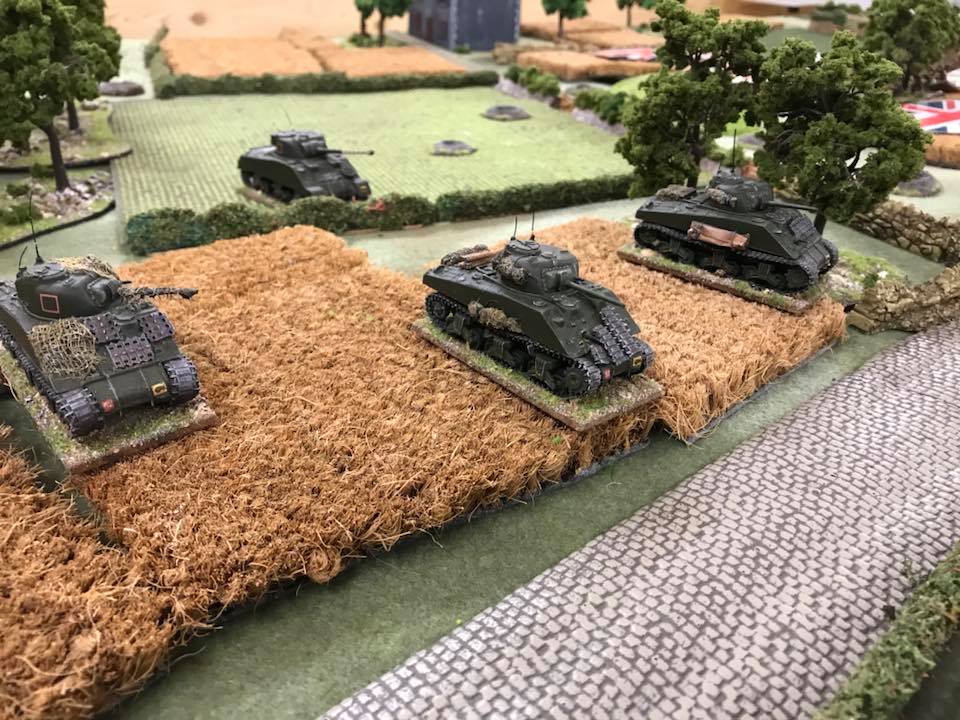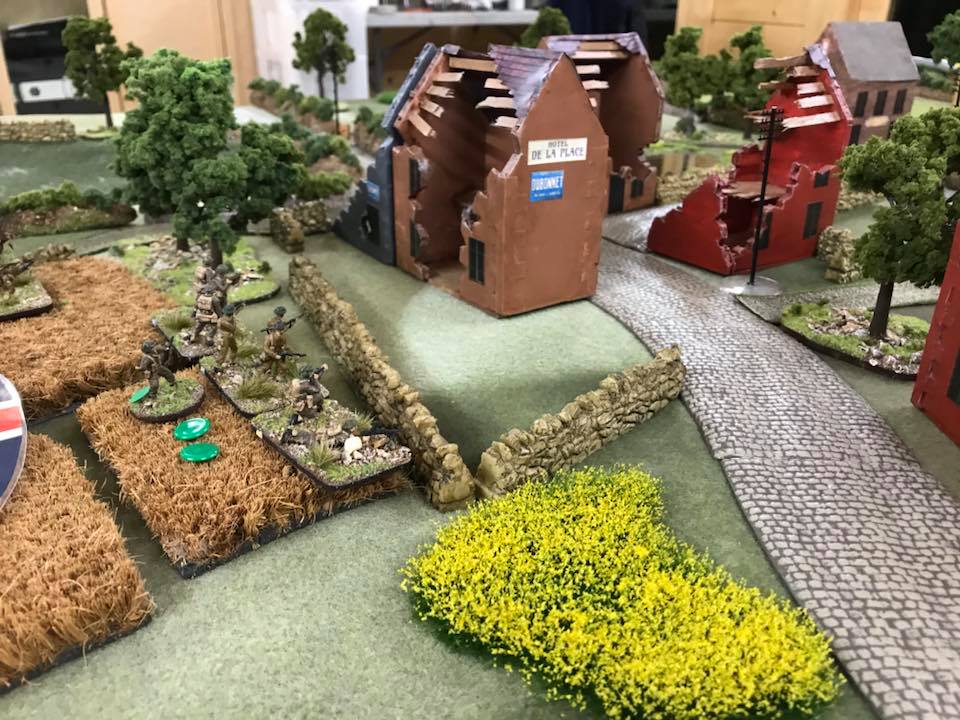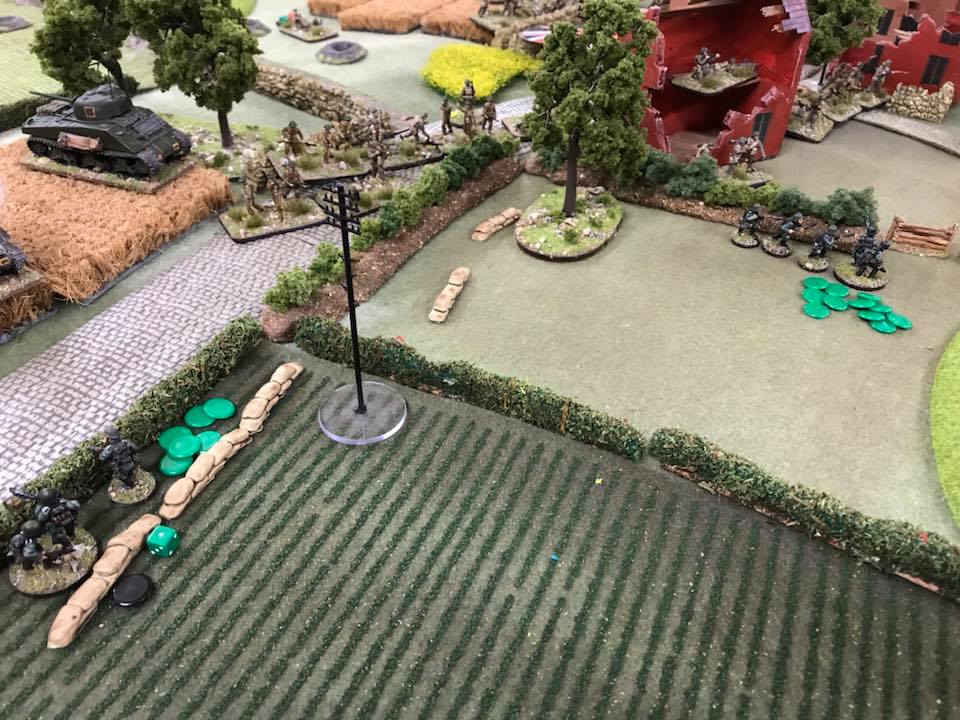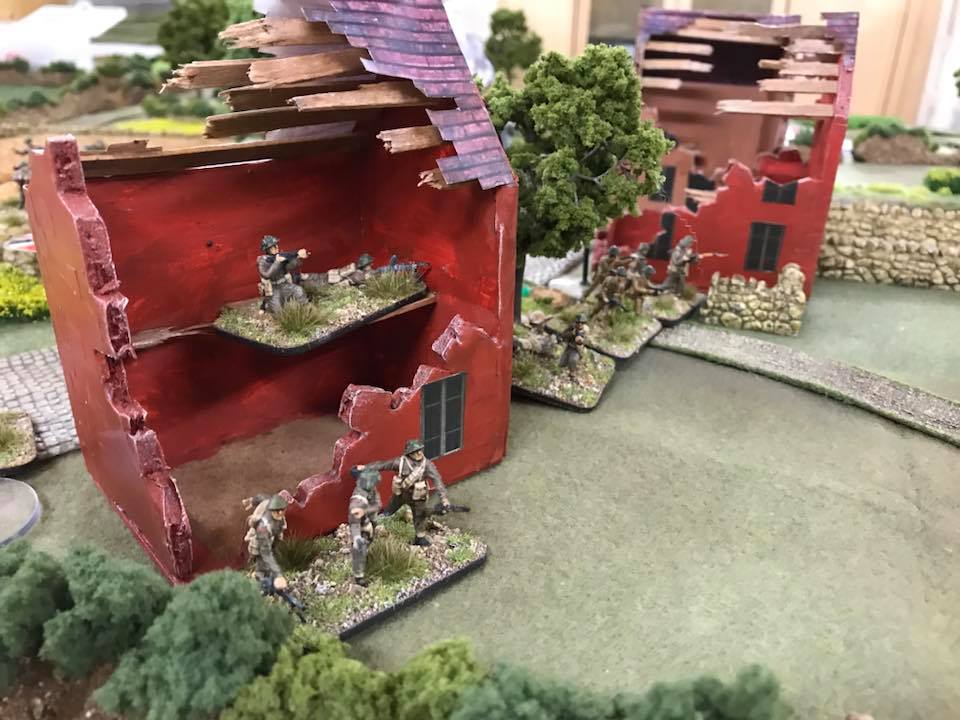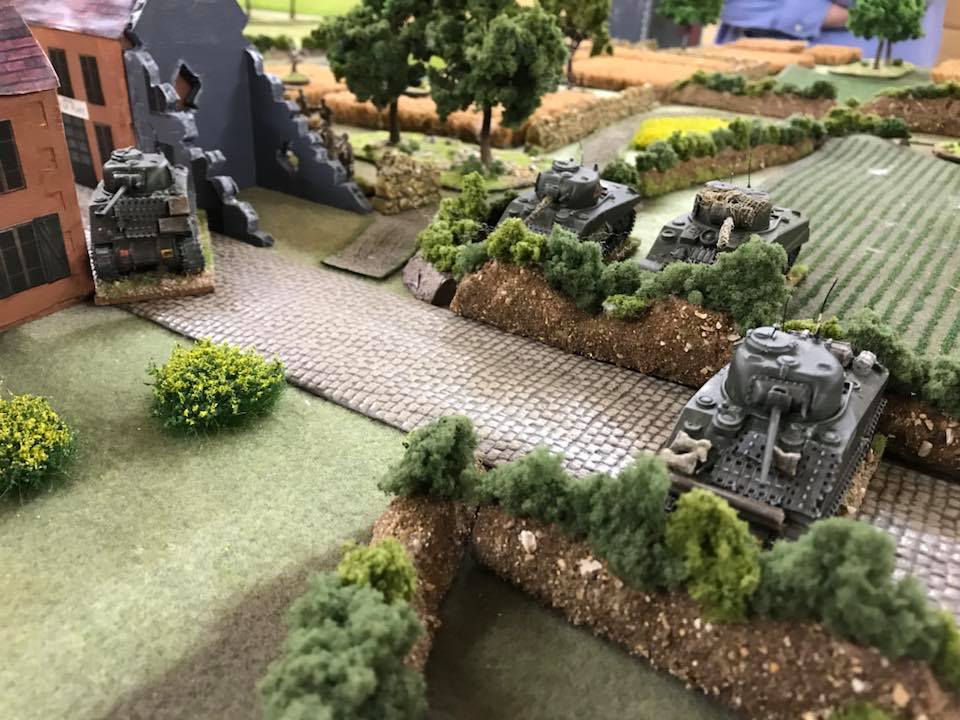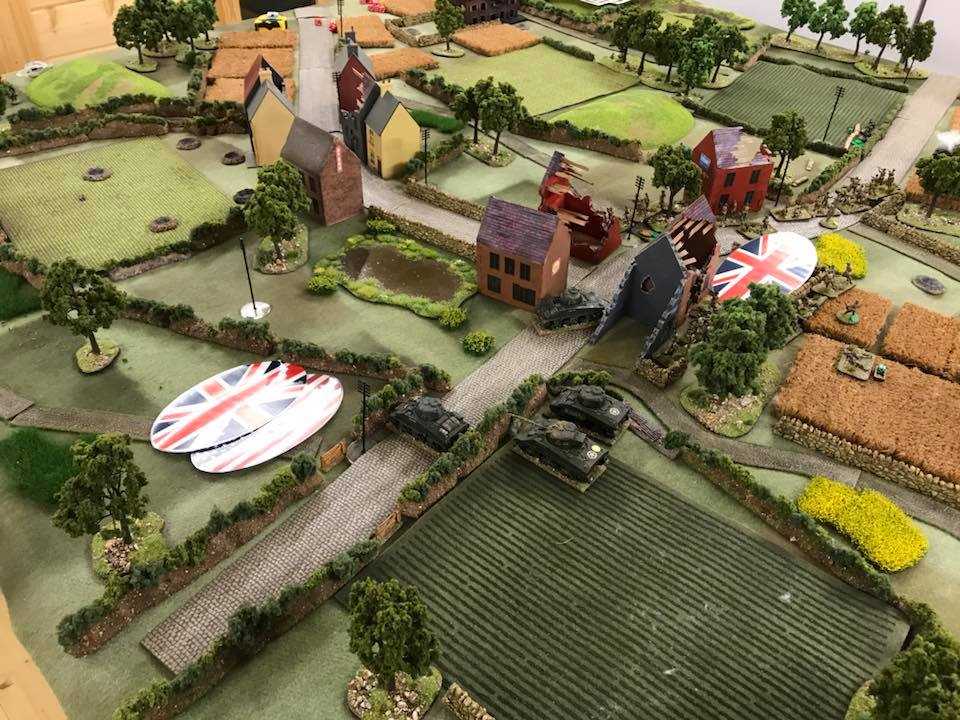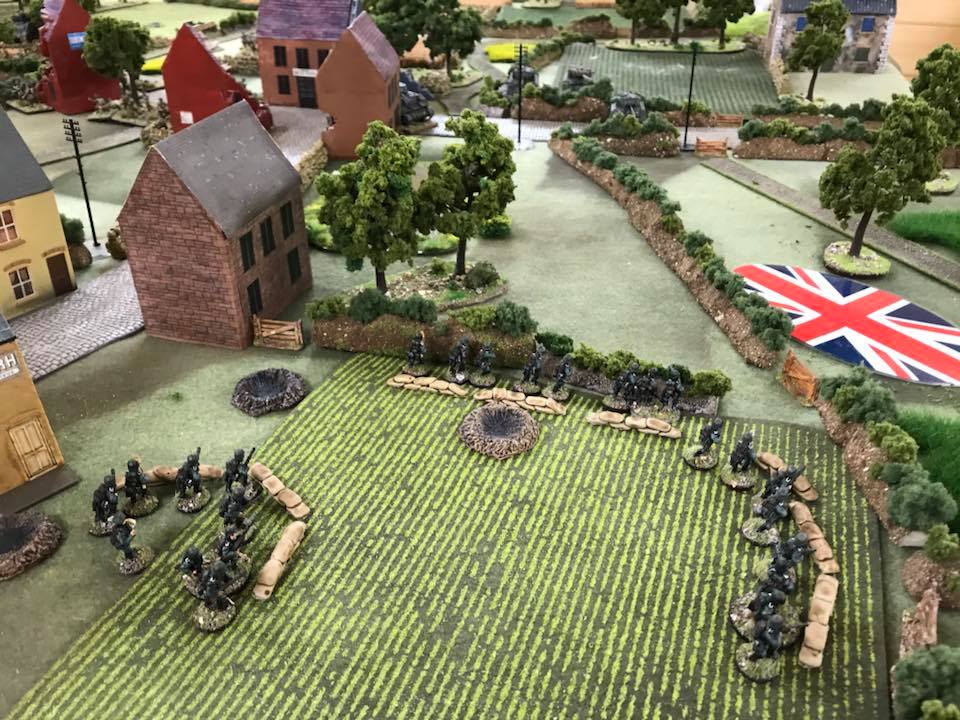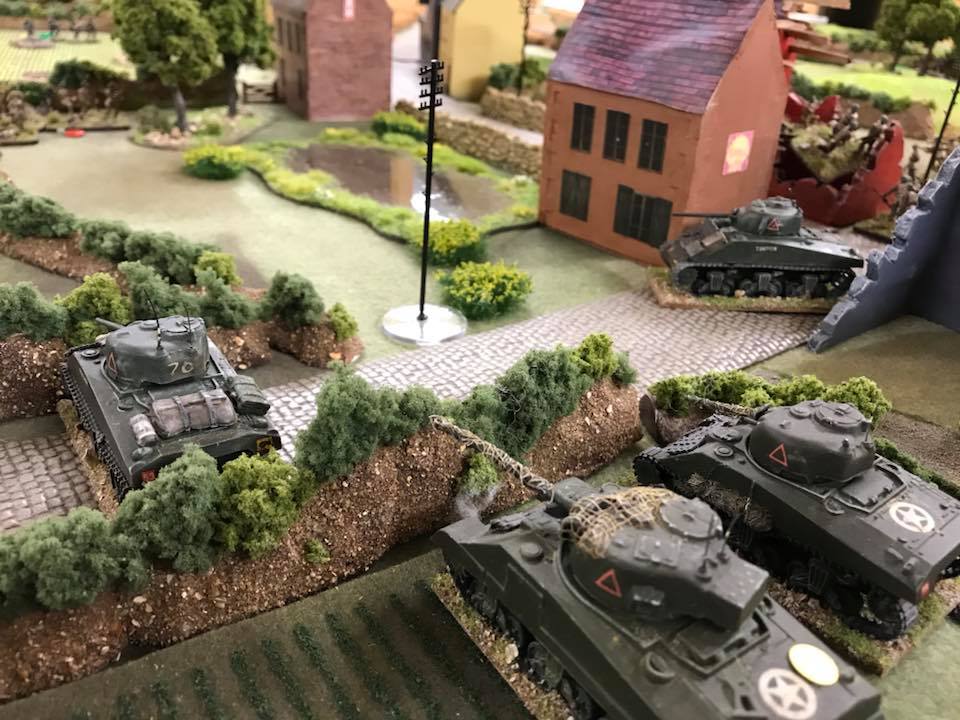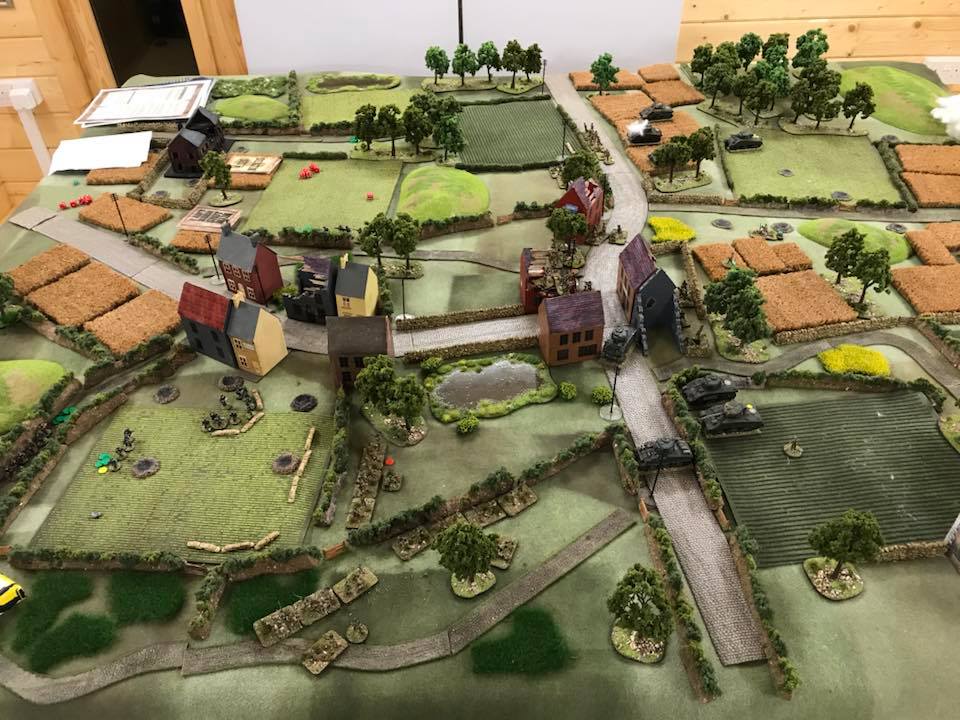Australians take Siret el Chreiba airfield (just)
We played scenario 18 from the Operations Compass scenarios. This pits nine sections of Australian infantry and a single mortar, against six sections of infantry, an MMG and some direct firing off table artillery for the Italians.
The main objective for the Australians is the hanger and the buildings behind. The feature nearest the camera is a ditch. The buildings near the end of the ditch are the secondary objective. The eagle eyed amongst you will notice that the position of the ditch was corrected before the game actually started.
Initial moves with all forces under Blinds:
The Australians were easily spotted, and the Italians elected to open fire with one section next to the hanger and the company HQ, which was in the buildings behind the hanger, and could fire though it, counting as a poor shot.
Next turn all three Aussie platoons were on the table. Platoon #1 on the left, #2 in the centre, and #3, by some rapid movement was in the lead on the right.
Same situation showing the last two Australian Blinds. The one furthest from the camera concealed the company commander and the mortar.
A further cautious advance by the Australians. The three Italian sections defending the houses near the ditch, having no direct threat, decided to move out into the ditch to threaten the flank of the attack on the hanger.
The Charge card came up for the Aussies, who used it to assault and wipe out the section by the hanger.
Elsewhere the Off Table artillery fire has caused significant casualties to the advancing Australians, Including the leader of Platoon #1. Poor fire discipline had forced the other Italian dug in section to open fire.
The same situation from the Italian end of the table.
Poor fire discipline had caused the Italian platoon near the ditch to reveal themselves while only partly in the ditch.
At this point the Australians attack was stalled by sections being Pinned by artillery fire, the loss of a platoon leader, and running out of men and the necessary actions to put an effective attack in. The Australian company commander was escorting the mortar on to the table and was still under a Blind. He now intervened decisively, if briefly in the battle. Giving orders for the mortar to fire on the Italians heading for the ditch, he moved forward, un-Pinned a section and sent it forward.
Shortly after galvanising his force into action the company commander became a casualty from further artillery fire, just as an assault, using the Charge card, was made on the remaining entrenched Italian section.
Also Platoon #3 made a successful charge on the larger house behind the hanger. Only three Italians and their officer made their escape out the back door.
The first and only shot from the mortar landed close enough to kill two Italians, caught in the open between the ditch and the houses.
The fire from the remains of four sections caused the Italian MMG to retire due to Shock.
We called a halt there as the Australians, at some cost, had gained the main objective, but were in no state to mount an attack on the houses near the ditch. They would be taking cover, mostly in the hanger, and hoping that the mortar would survive long enough to write down the Italian platoon by the ditch.
A very interesting game with the Australians not making use of cover, particularly the ditch, early on, and then becoming cautious as the Italian artillery started to bite.
Australian “casualties” were a total of 30 men, it the actual battle it was 23, the direct firing off table artillery was responsible for most of these.
The Italians suffered 22 casualties, two from the mortar fire, and about 18 from close combat.
The special cards in the deck produced a good recreation of the original battle. Rapid deployment and charge cards allowed the Australians to move aggressively forward, and the two rally cards prevent any “loss of bottle” before the section had become spent. The Italians Poor Fire Discipline twice caused a less than optimal opening of fire. The off table artillery prevented the Australians from just using their superior numbers to fire at beyond close range and wear down the Italians.
Tony Cane




